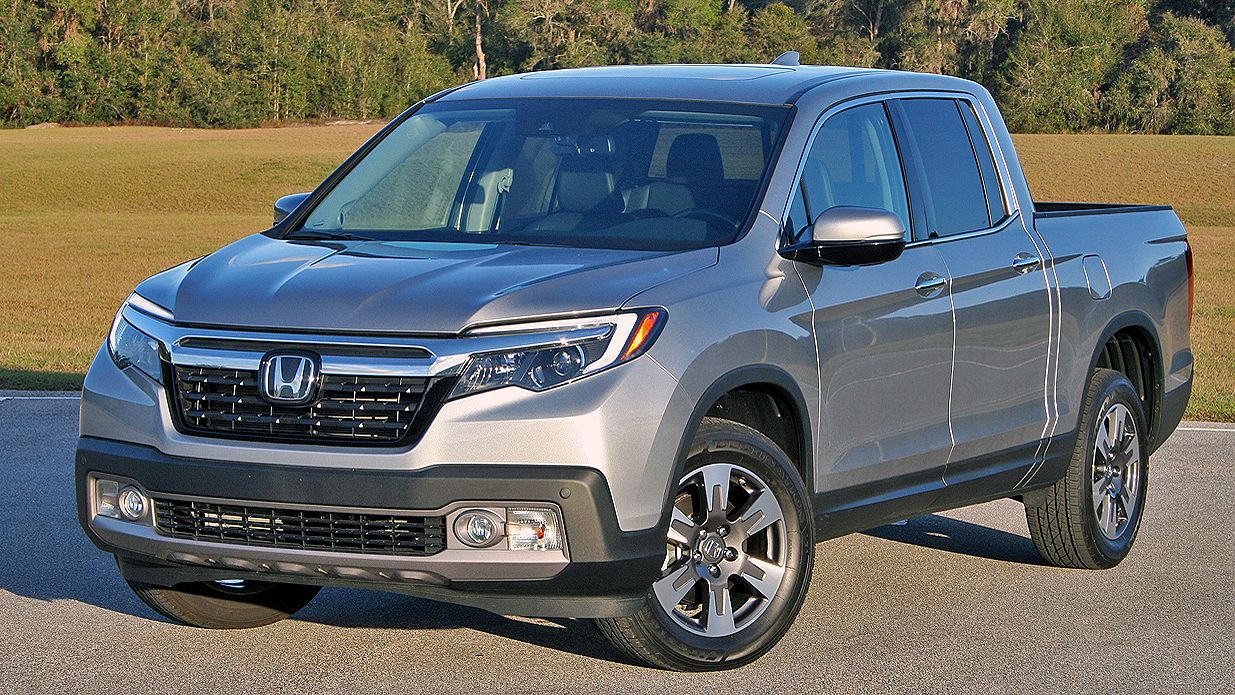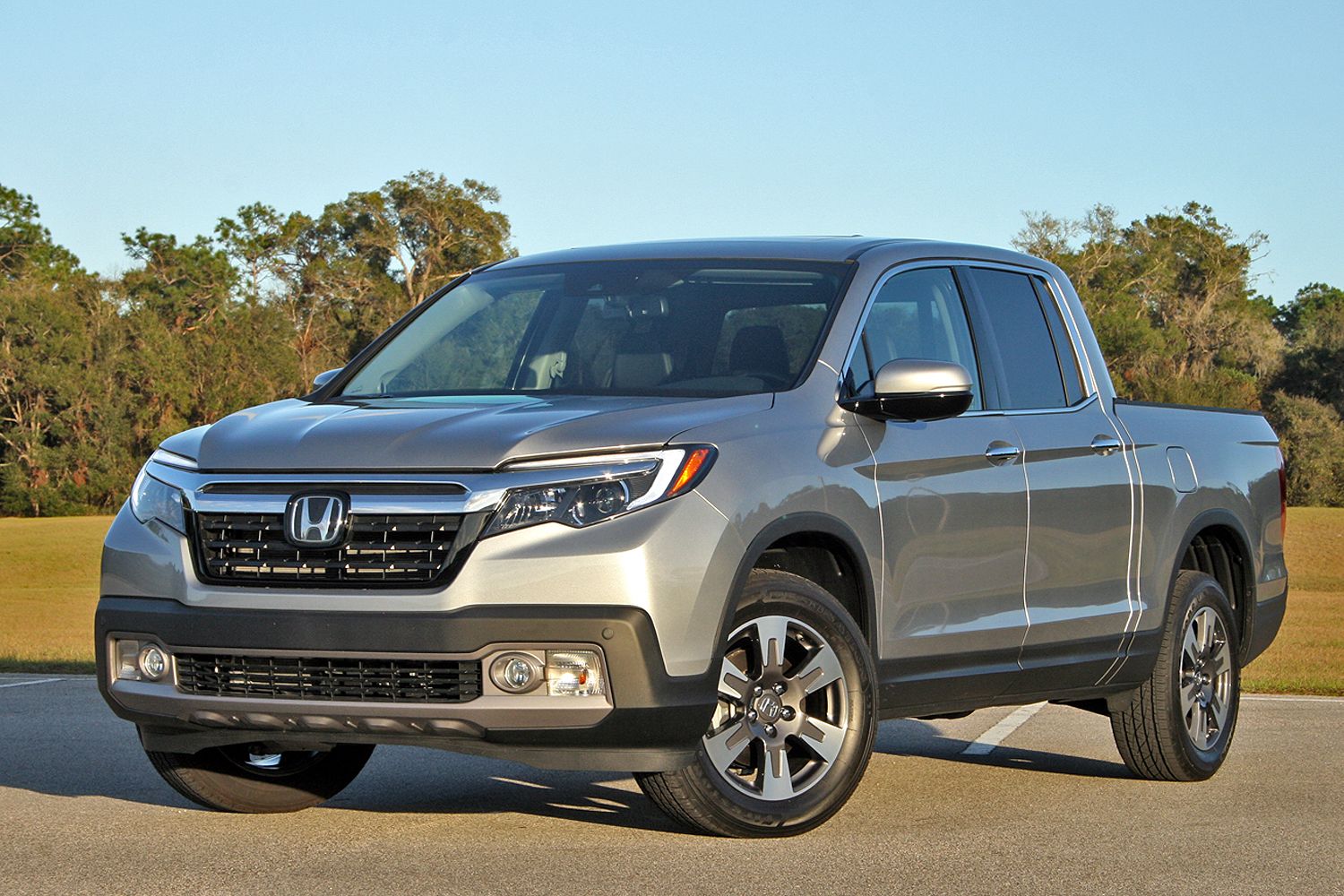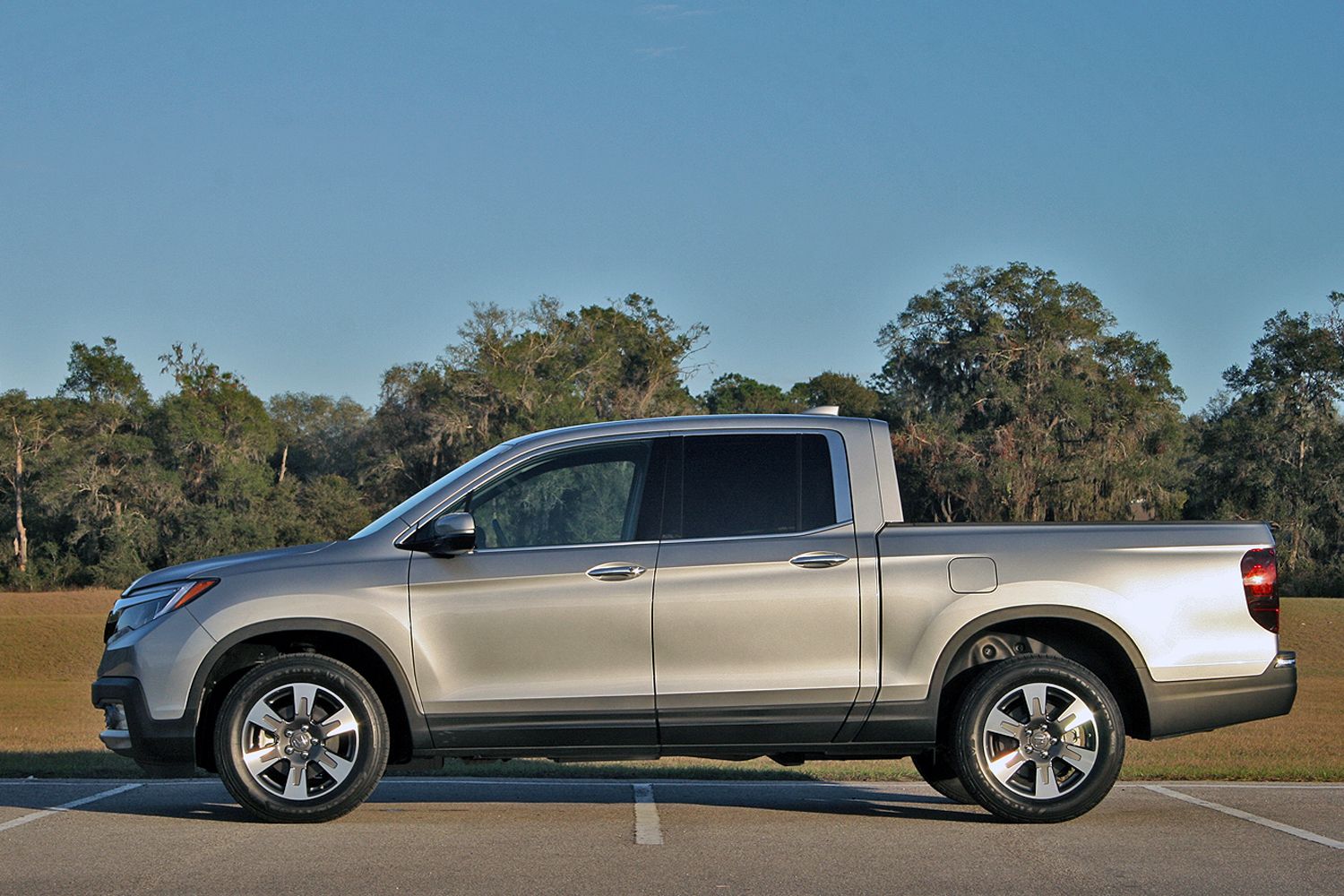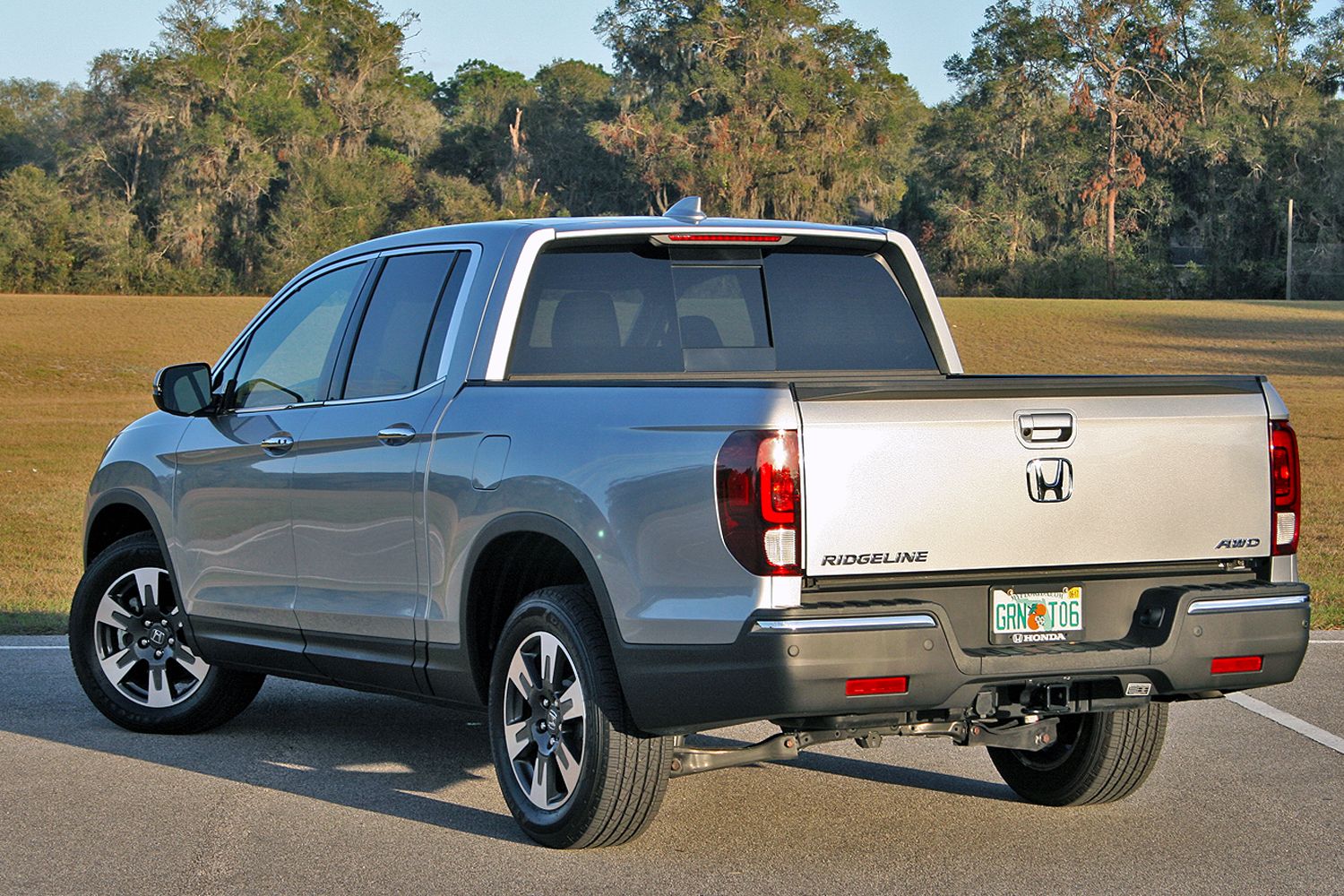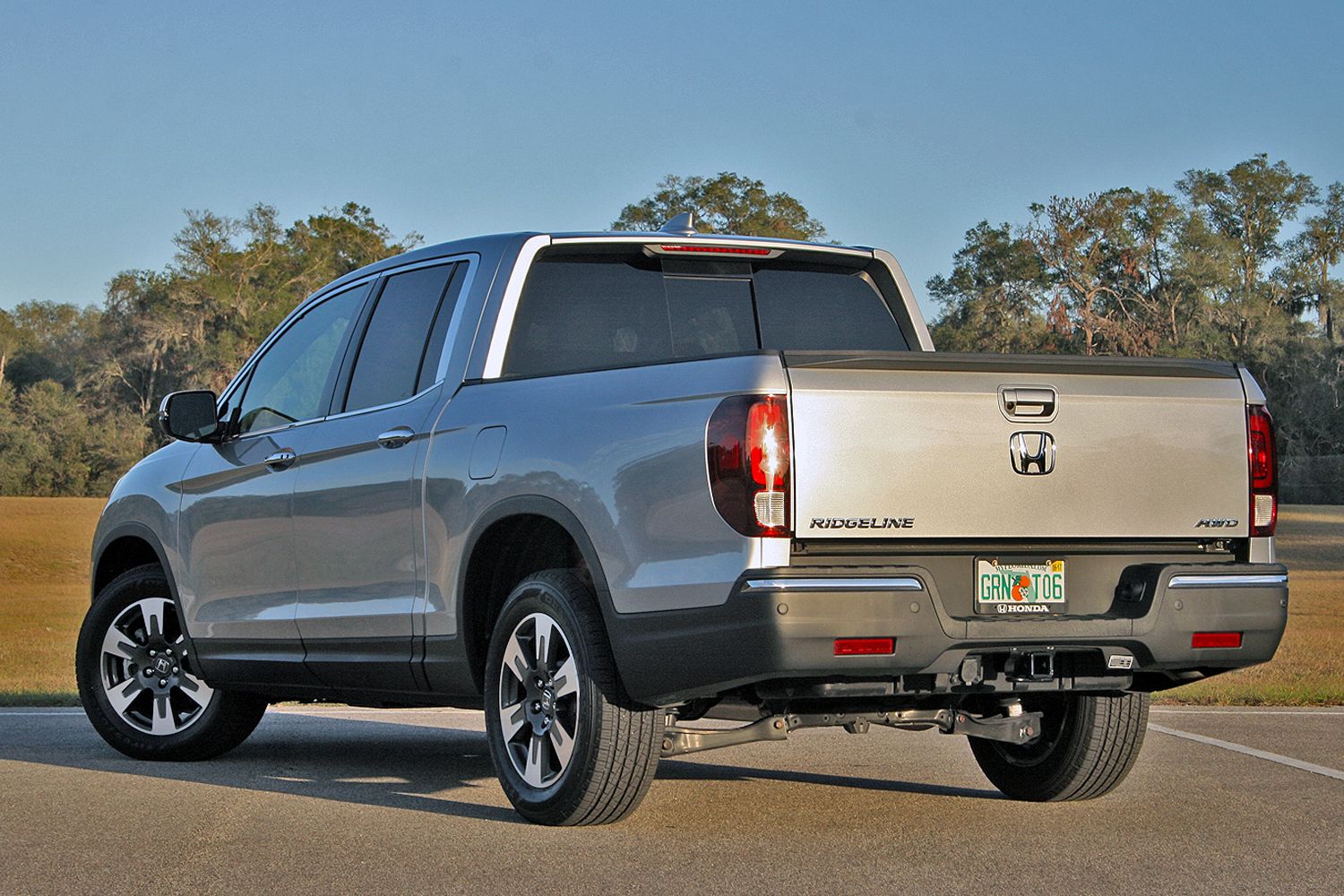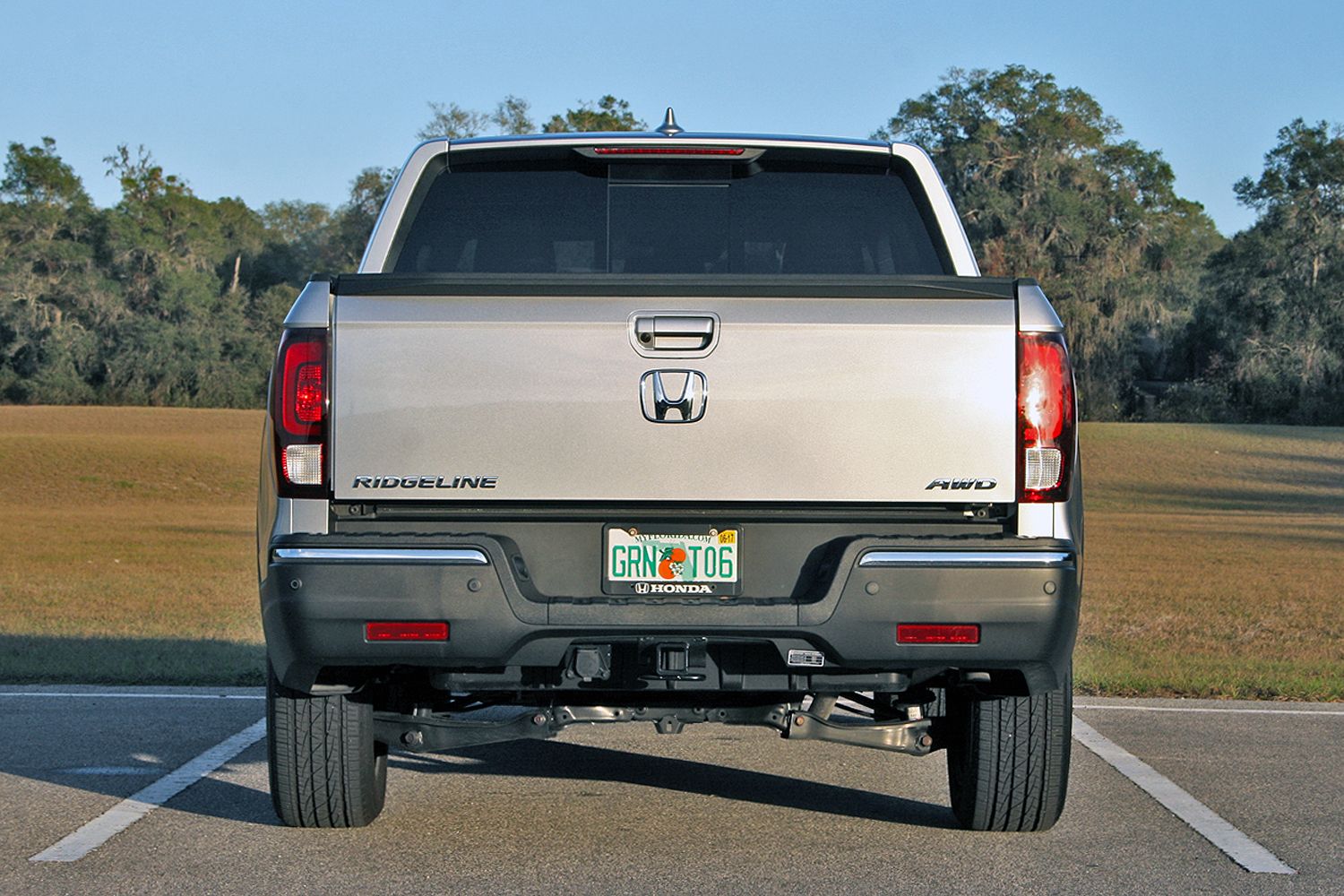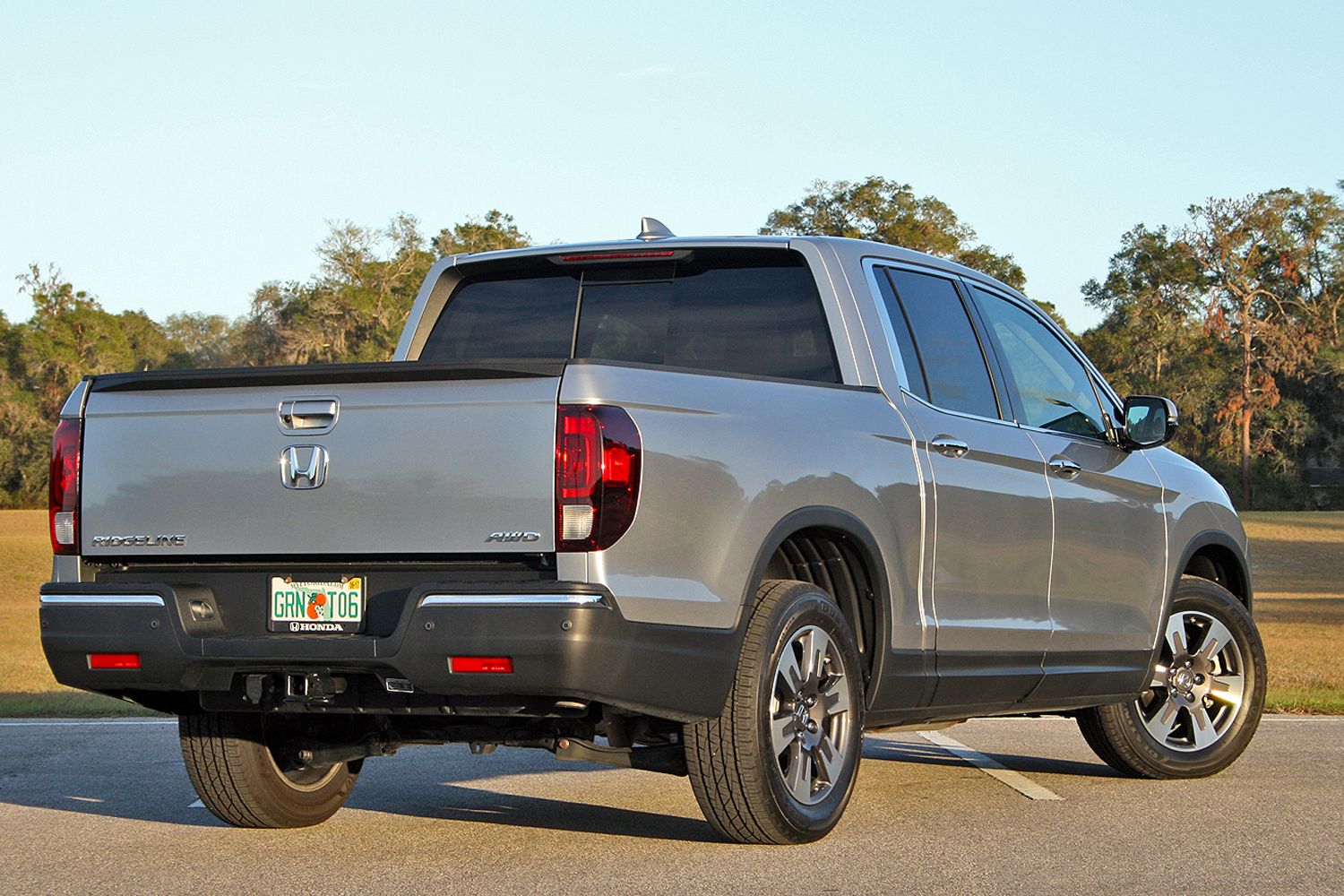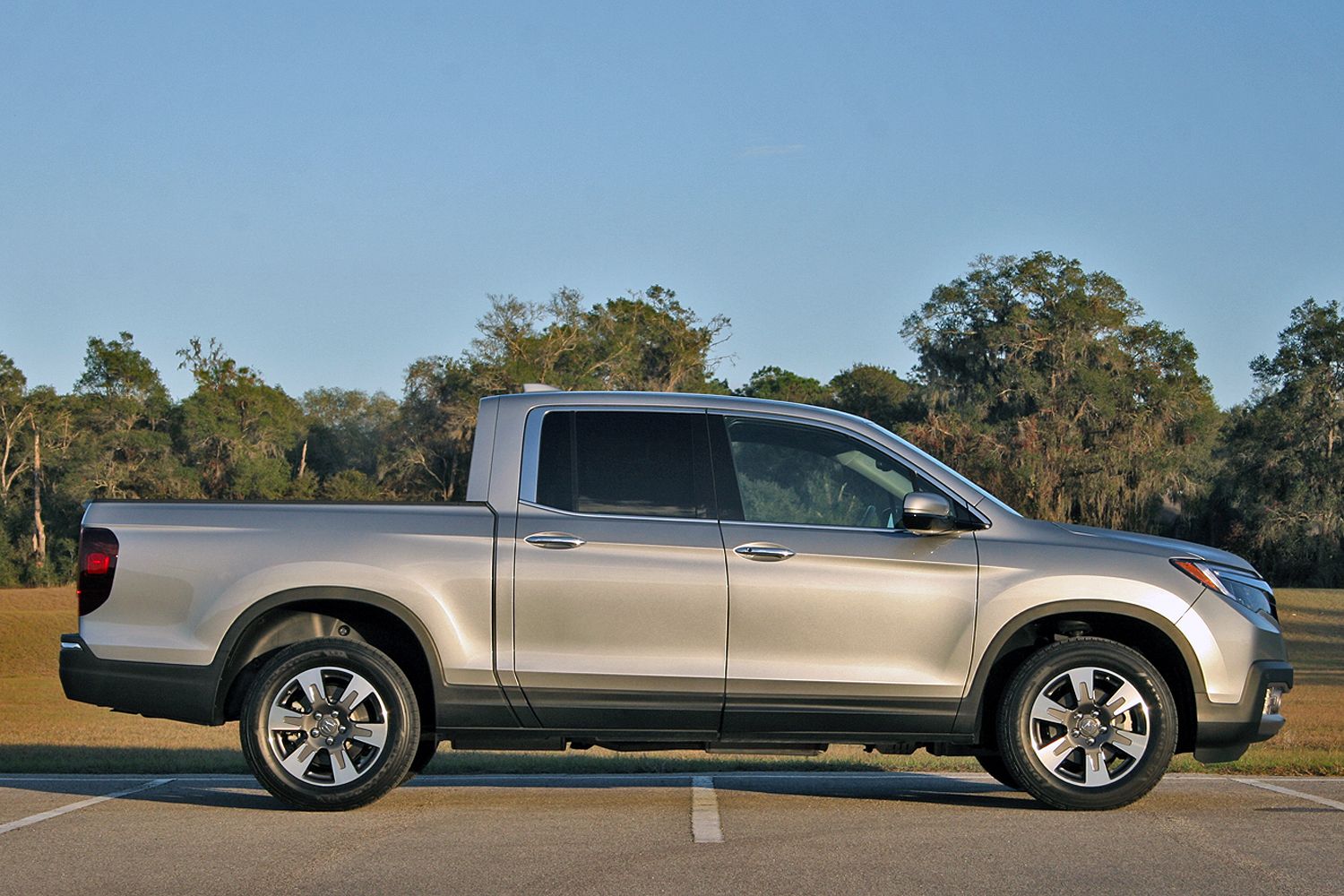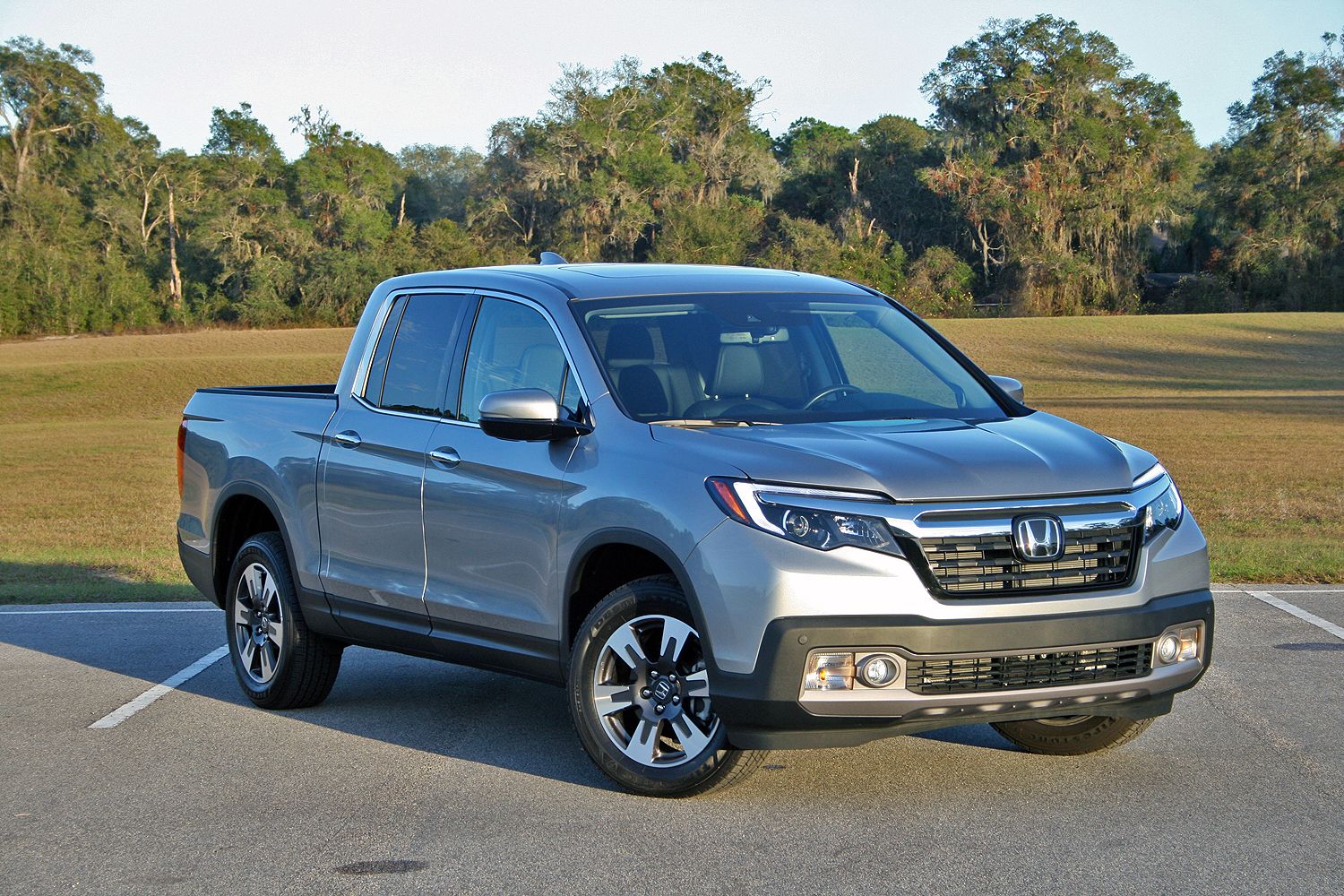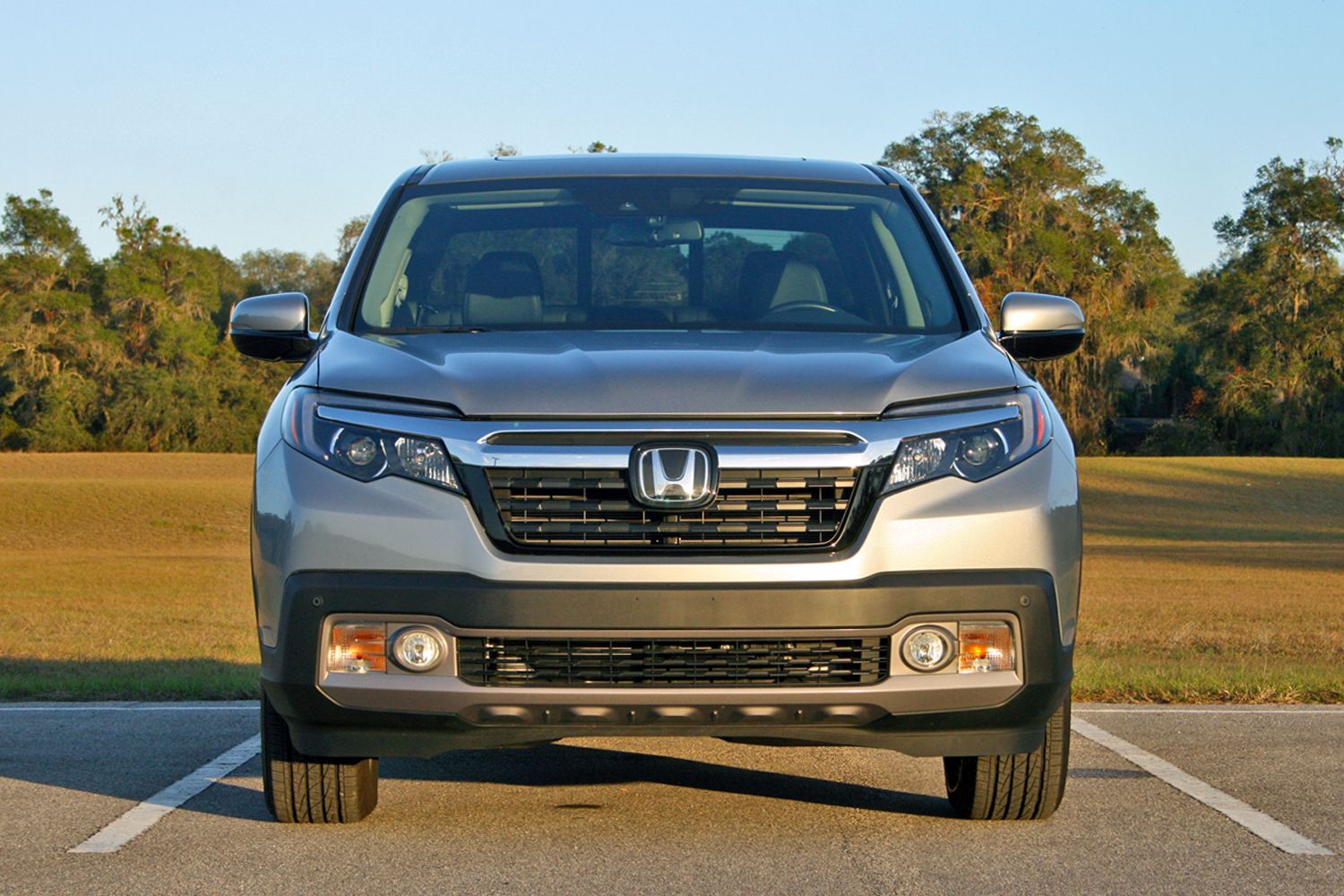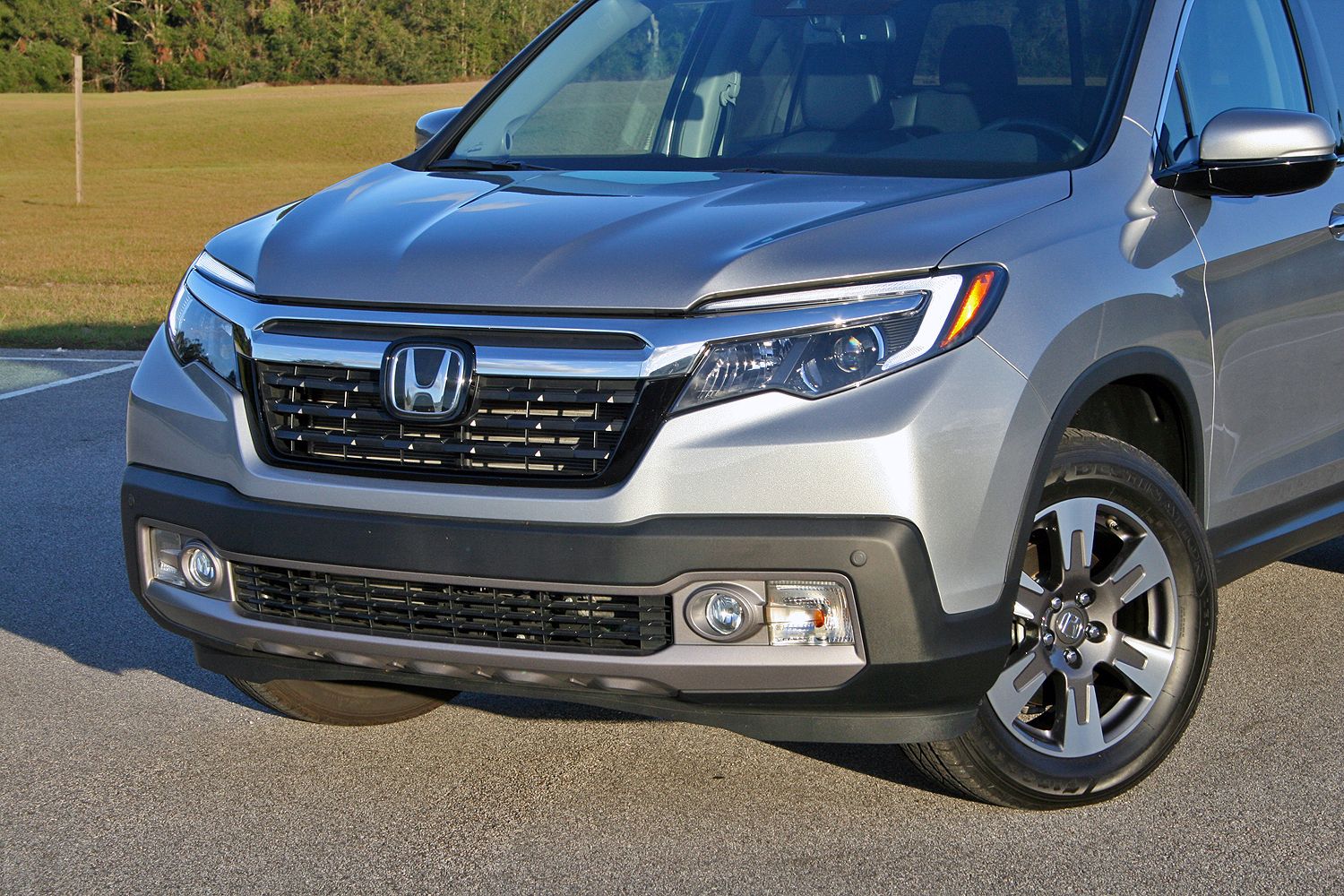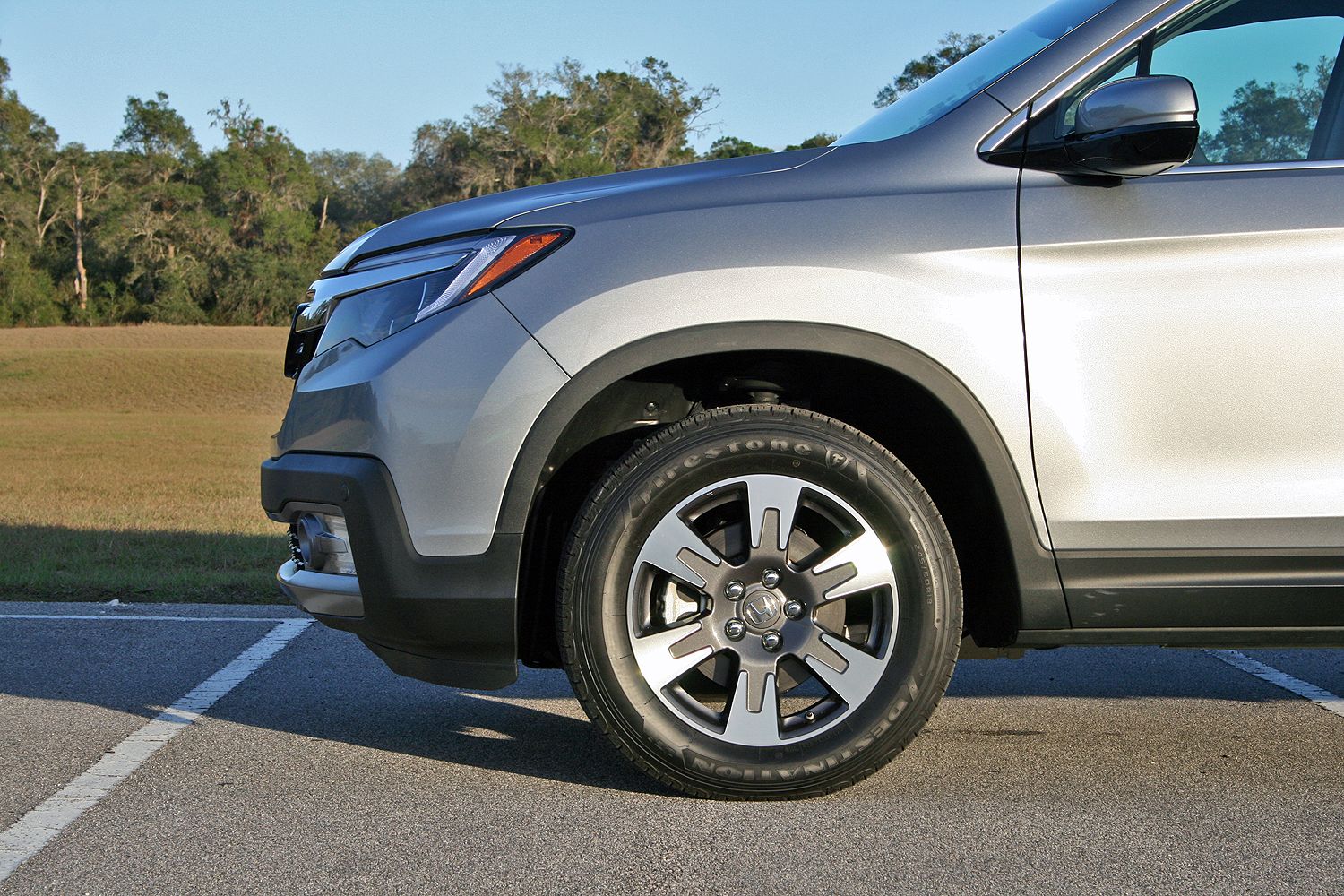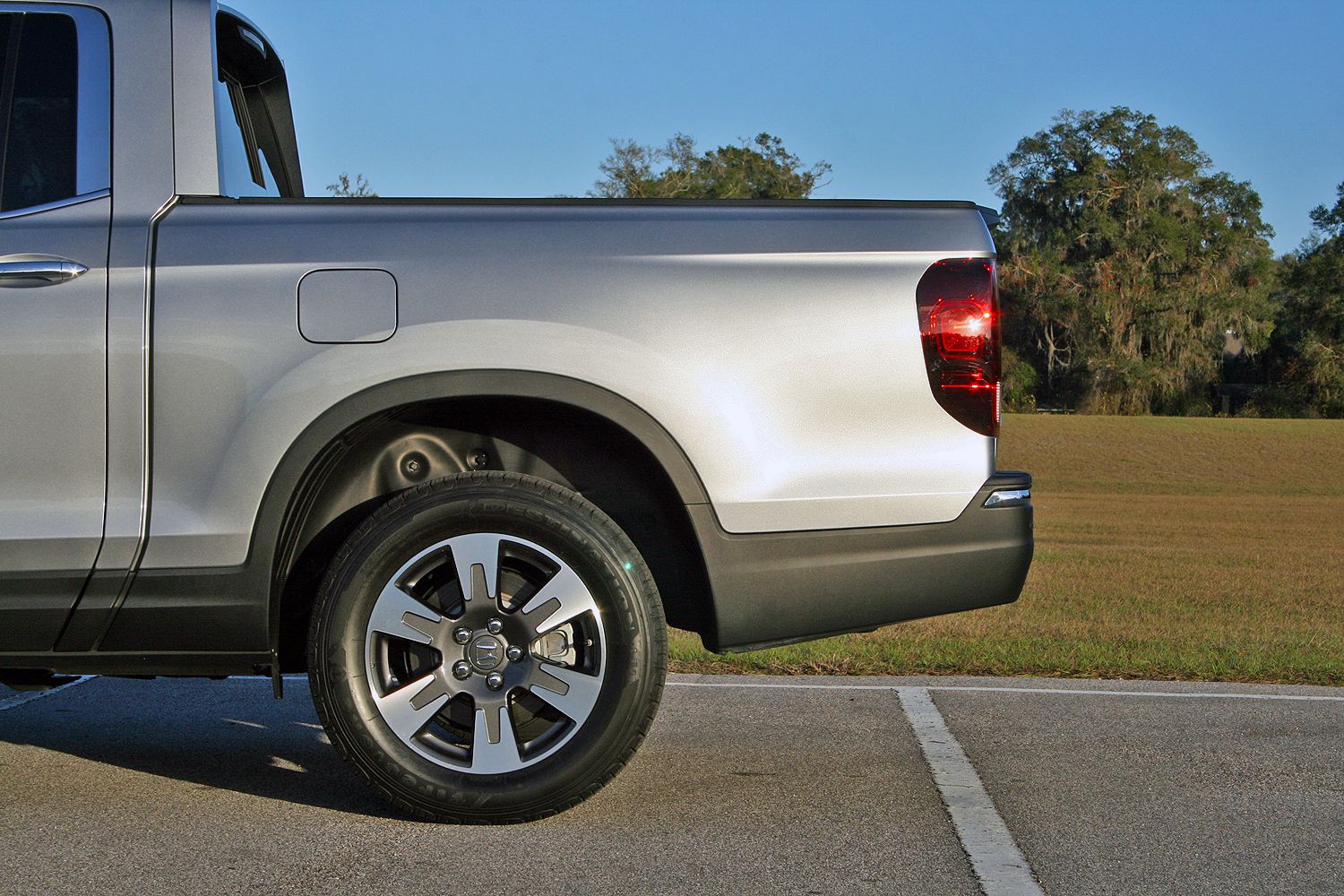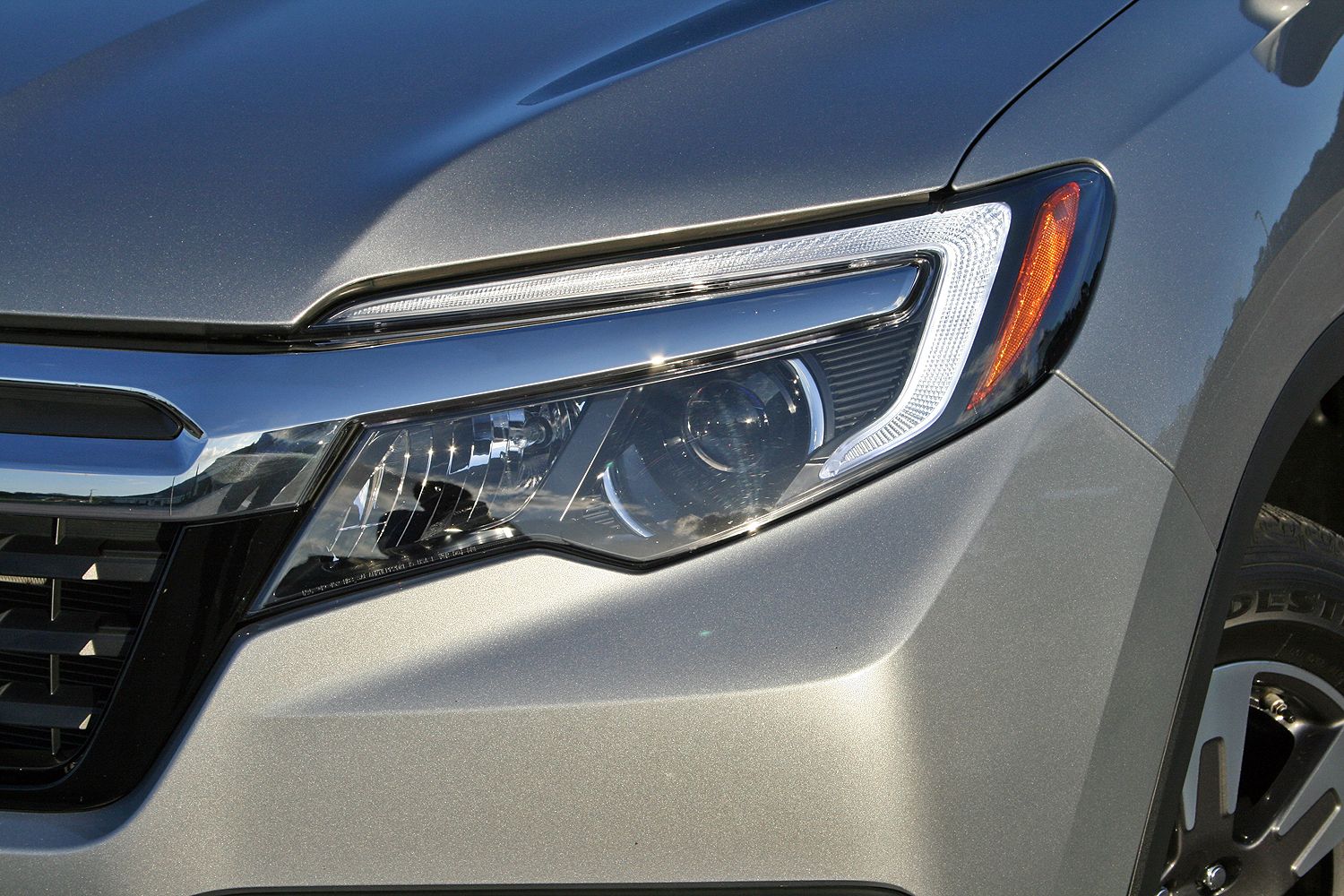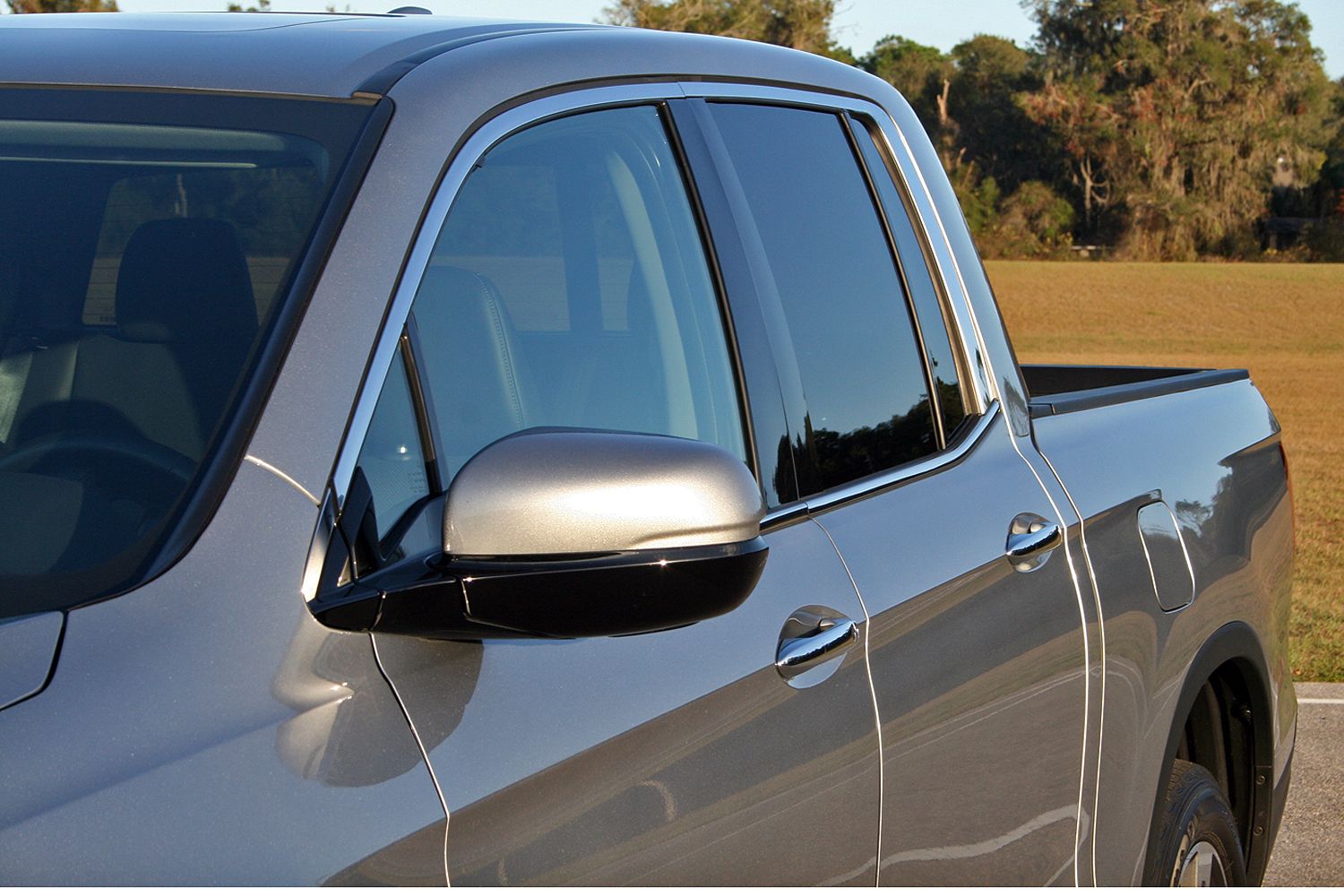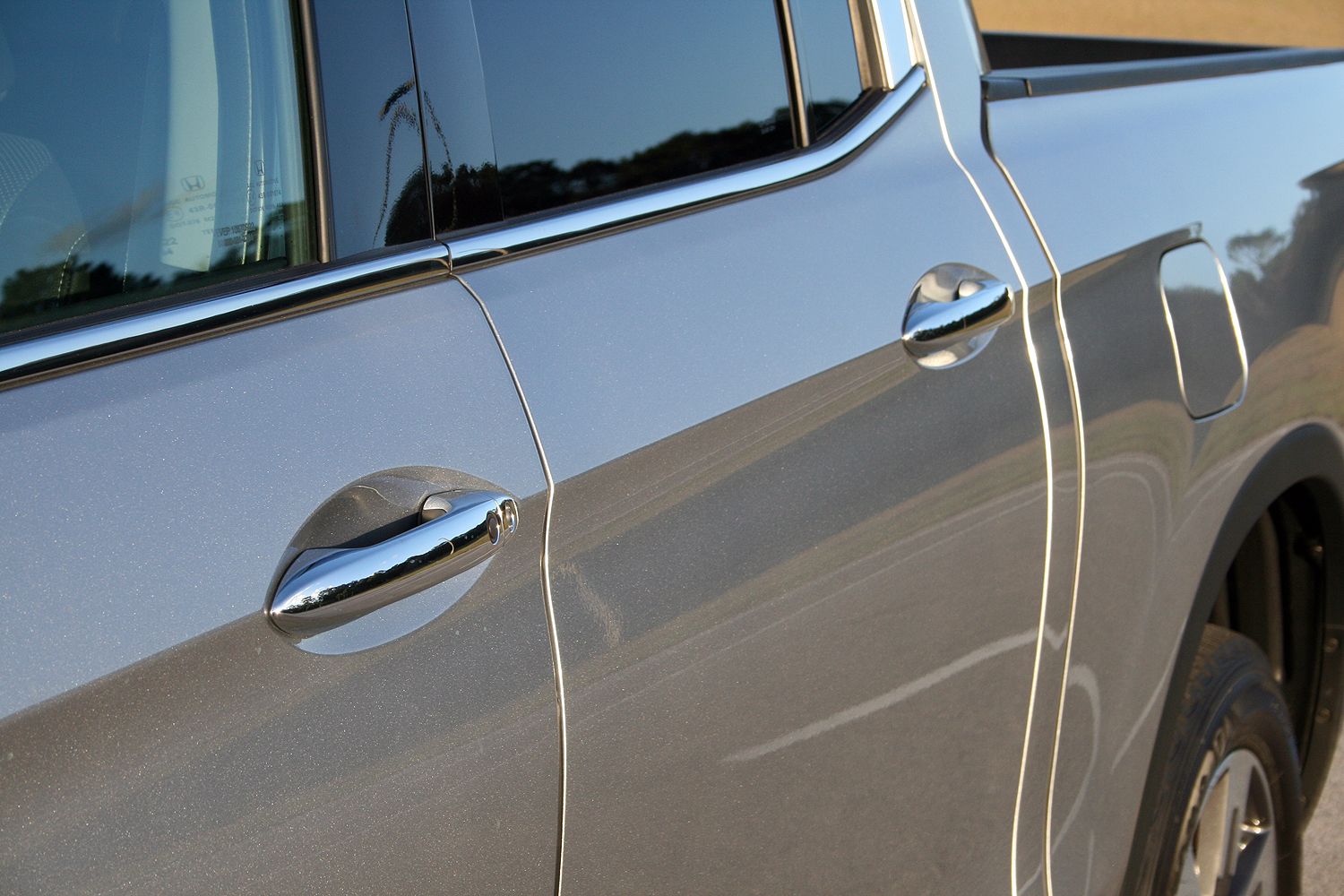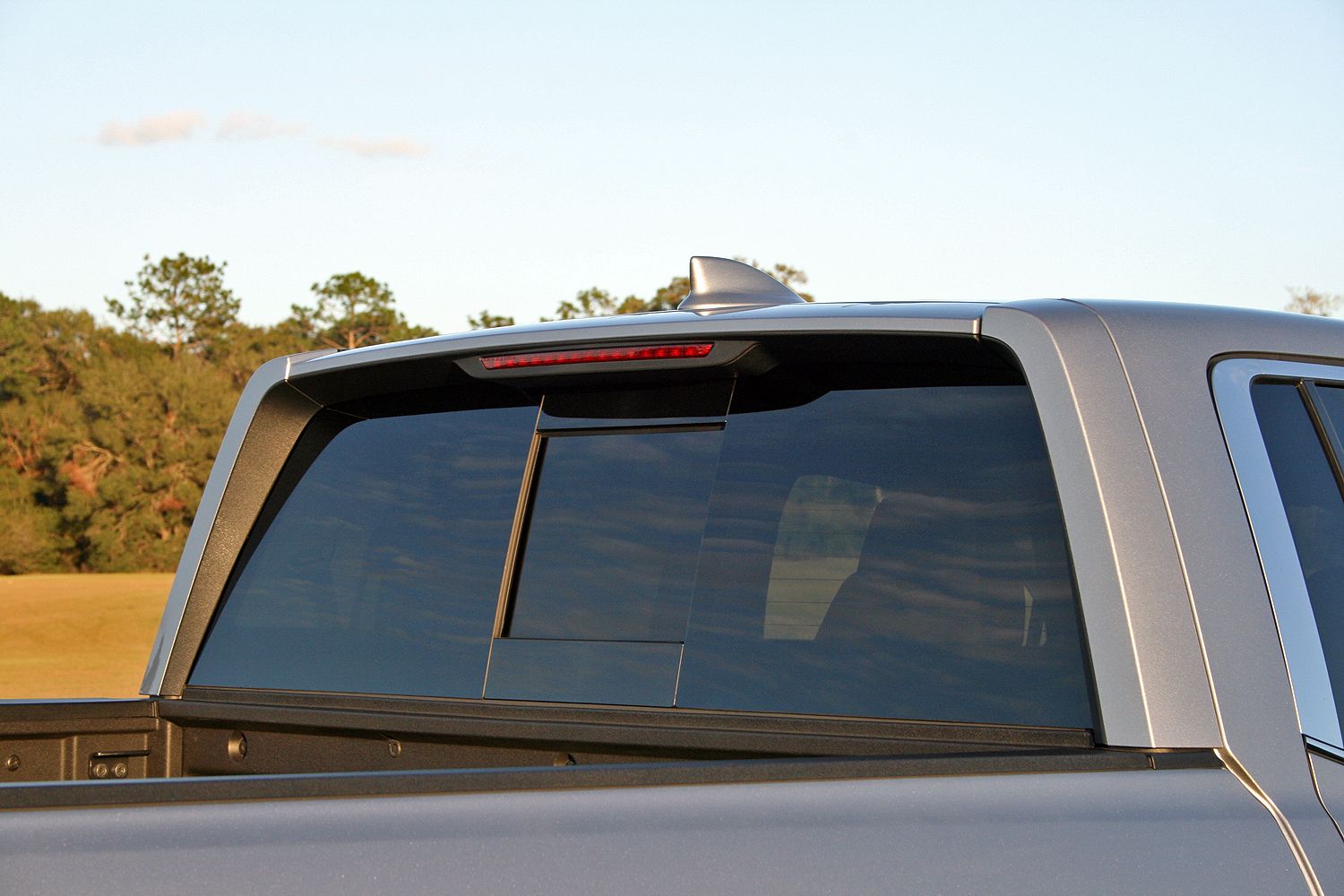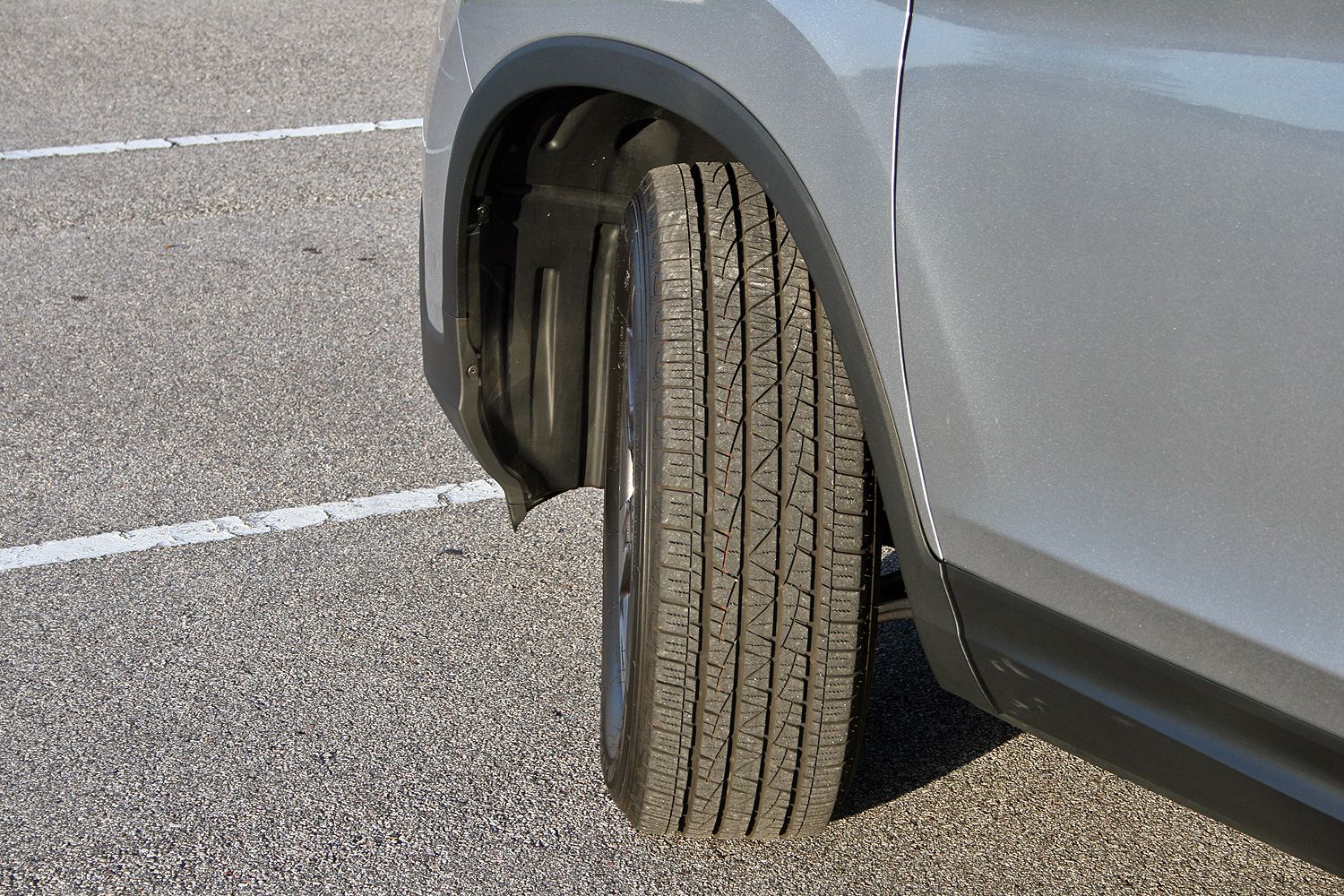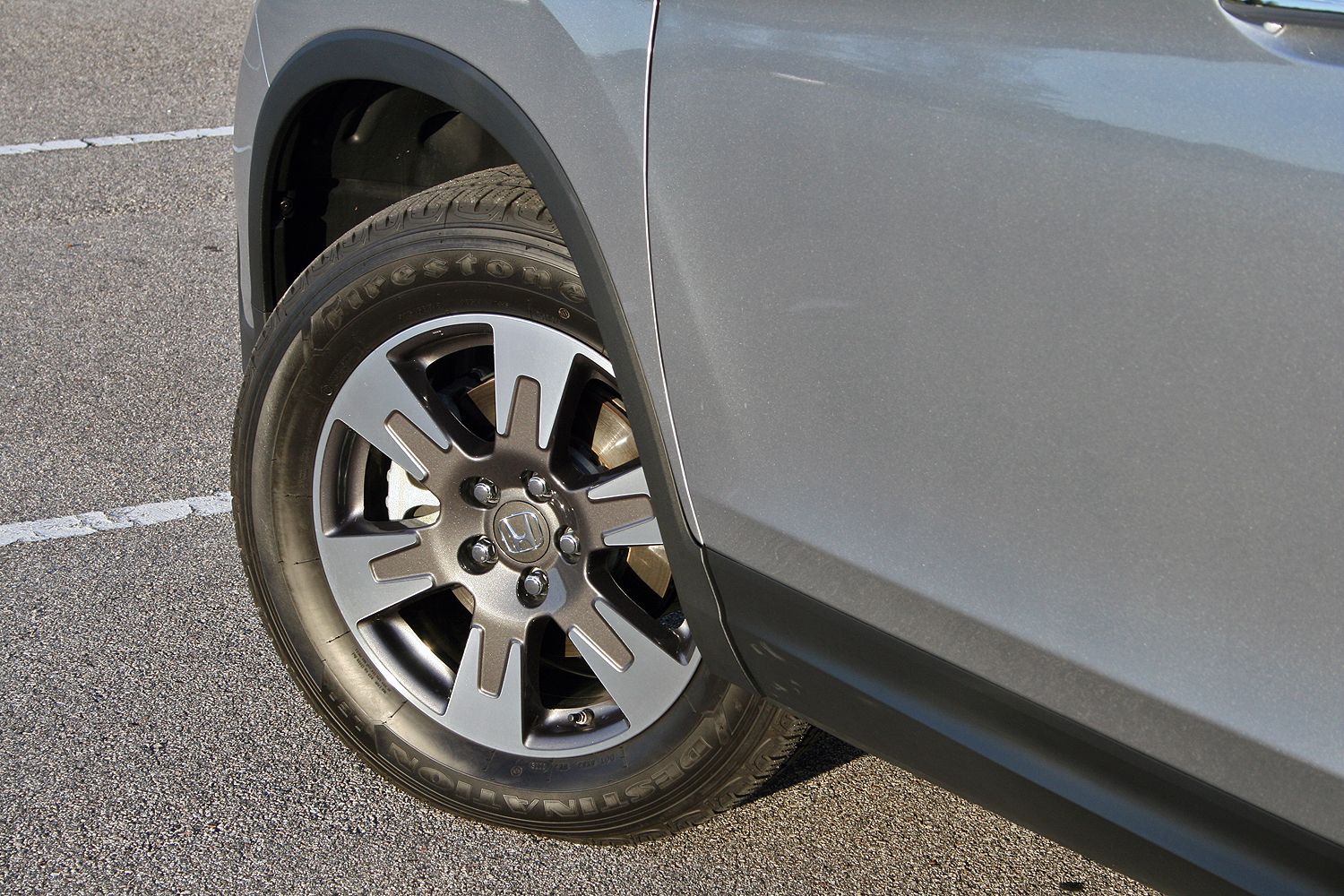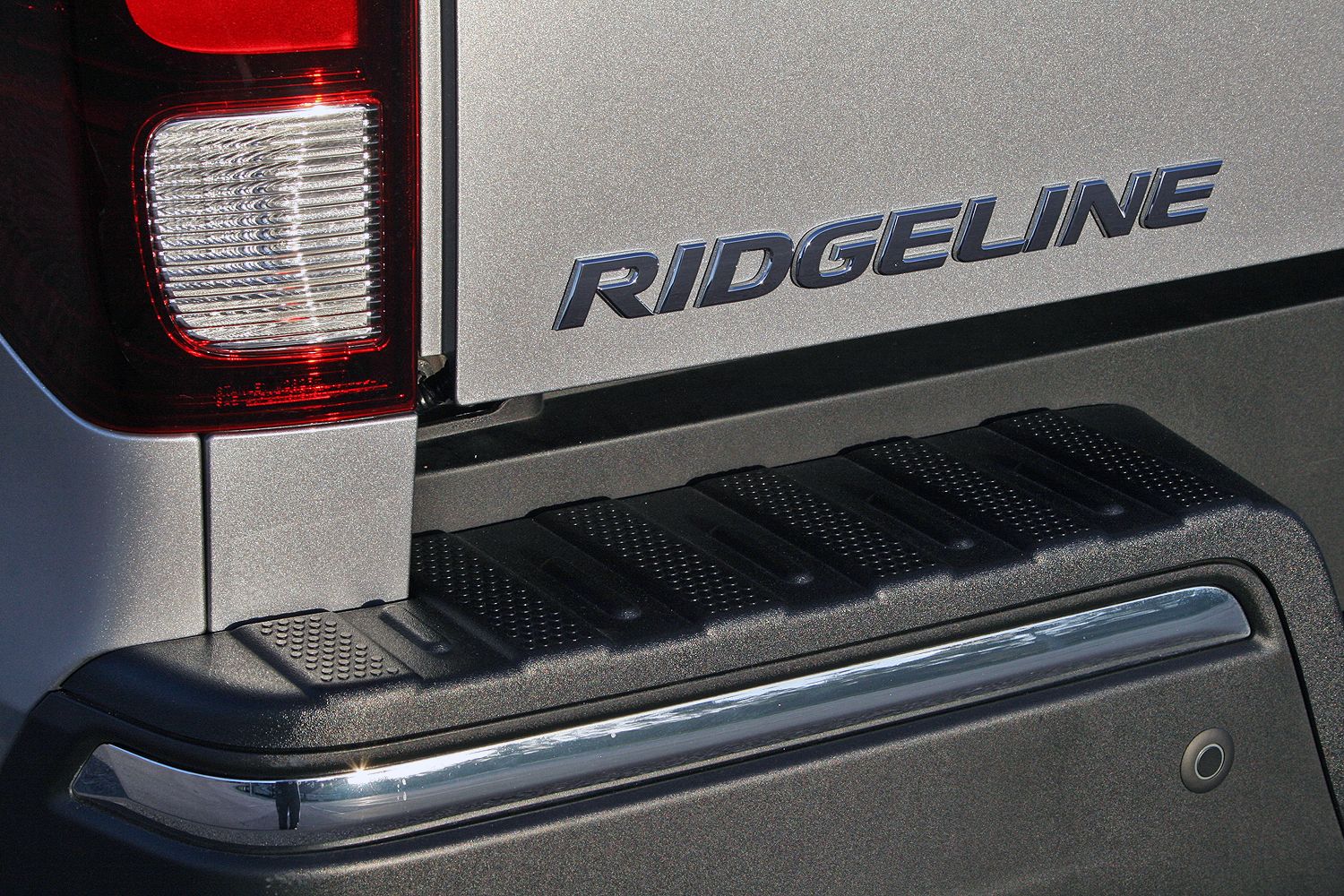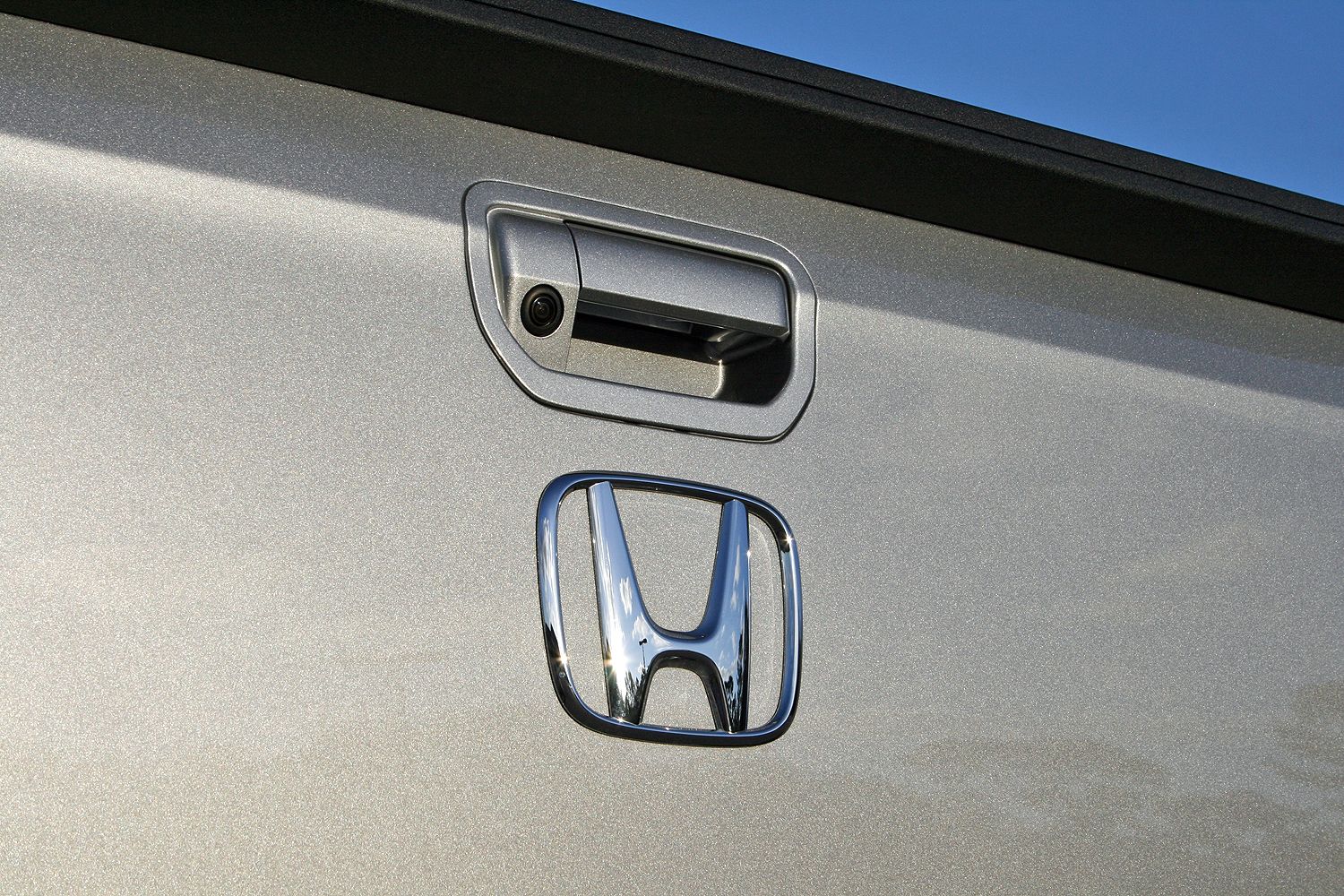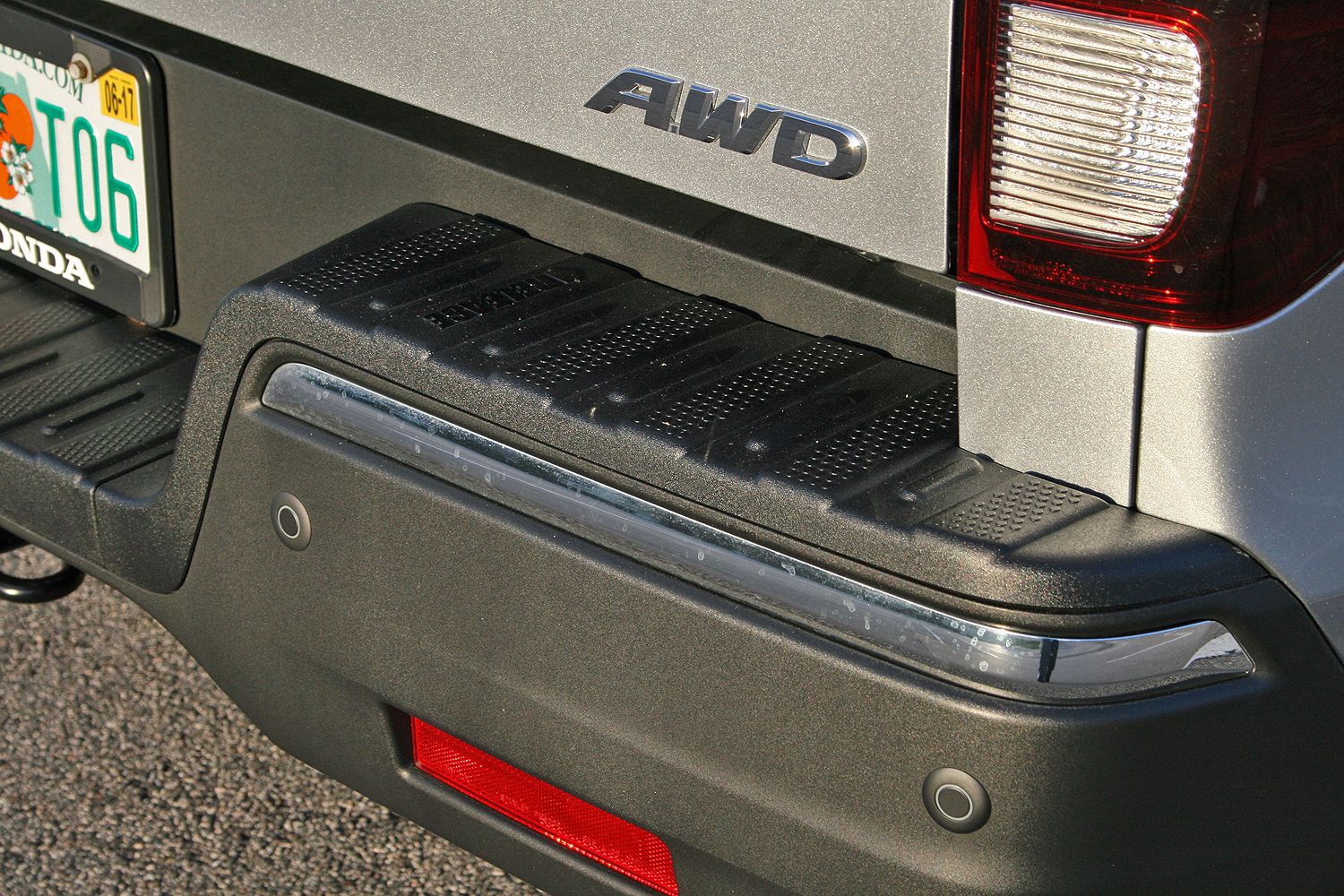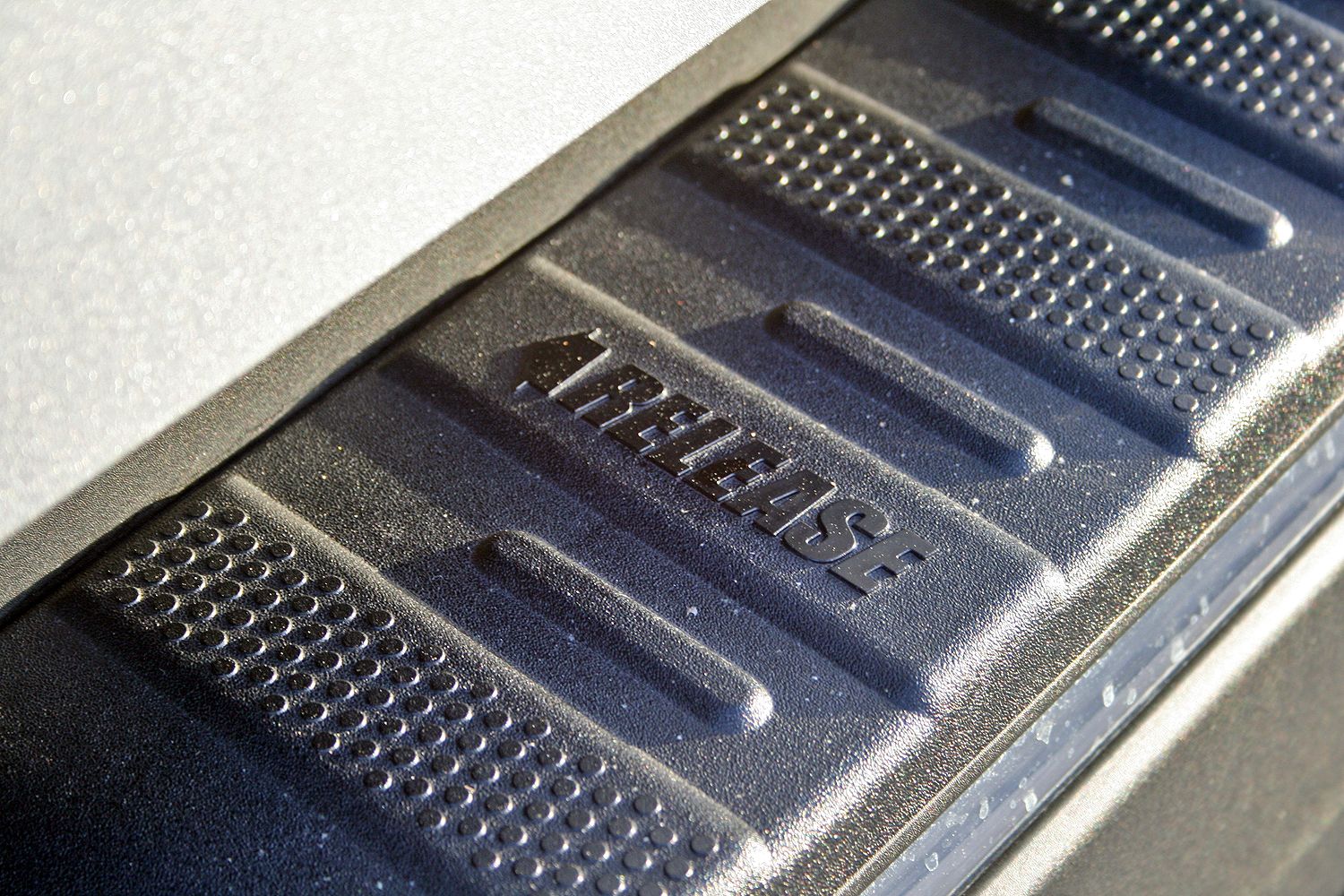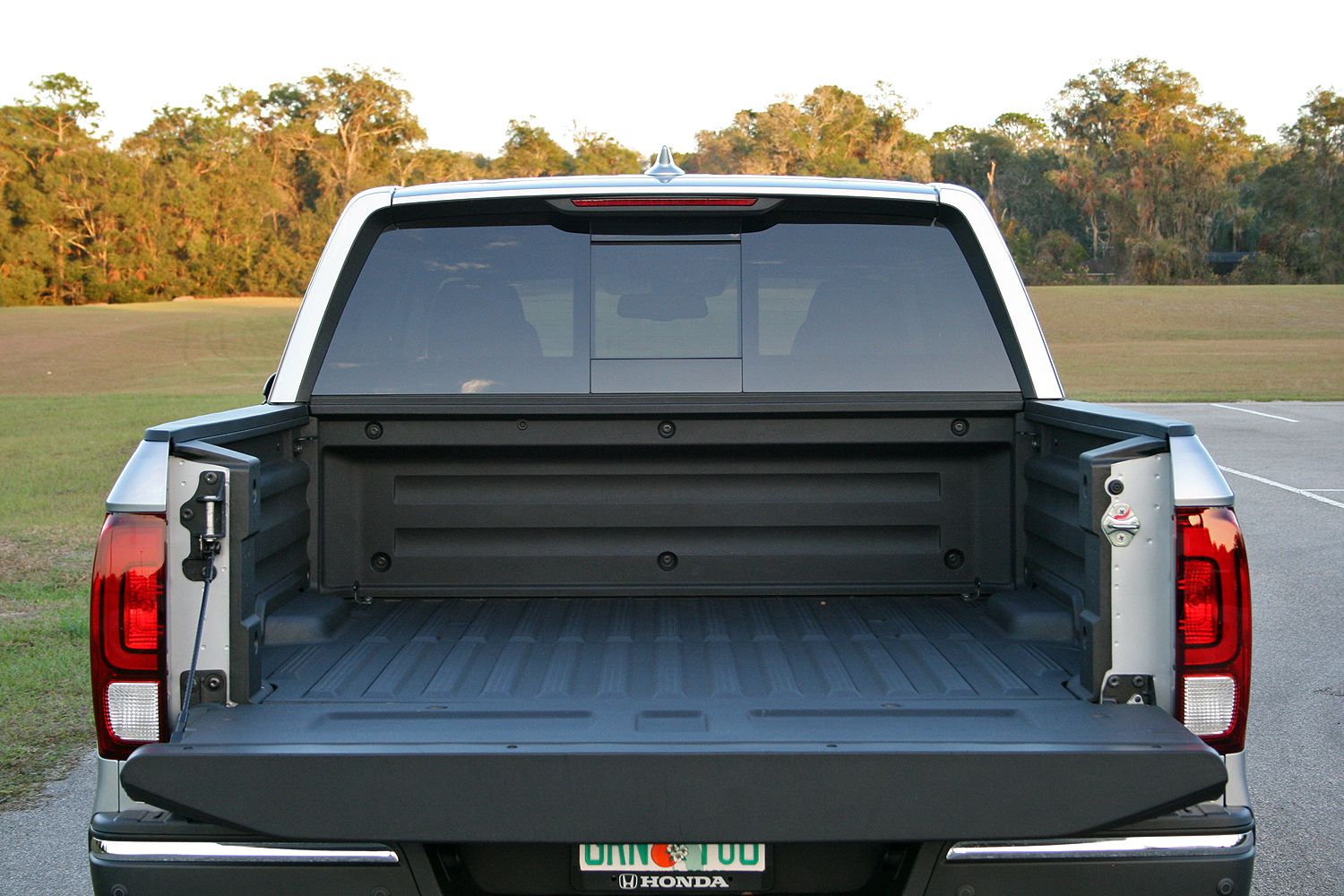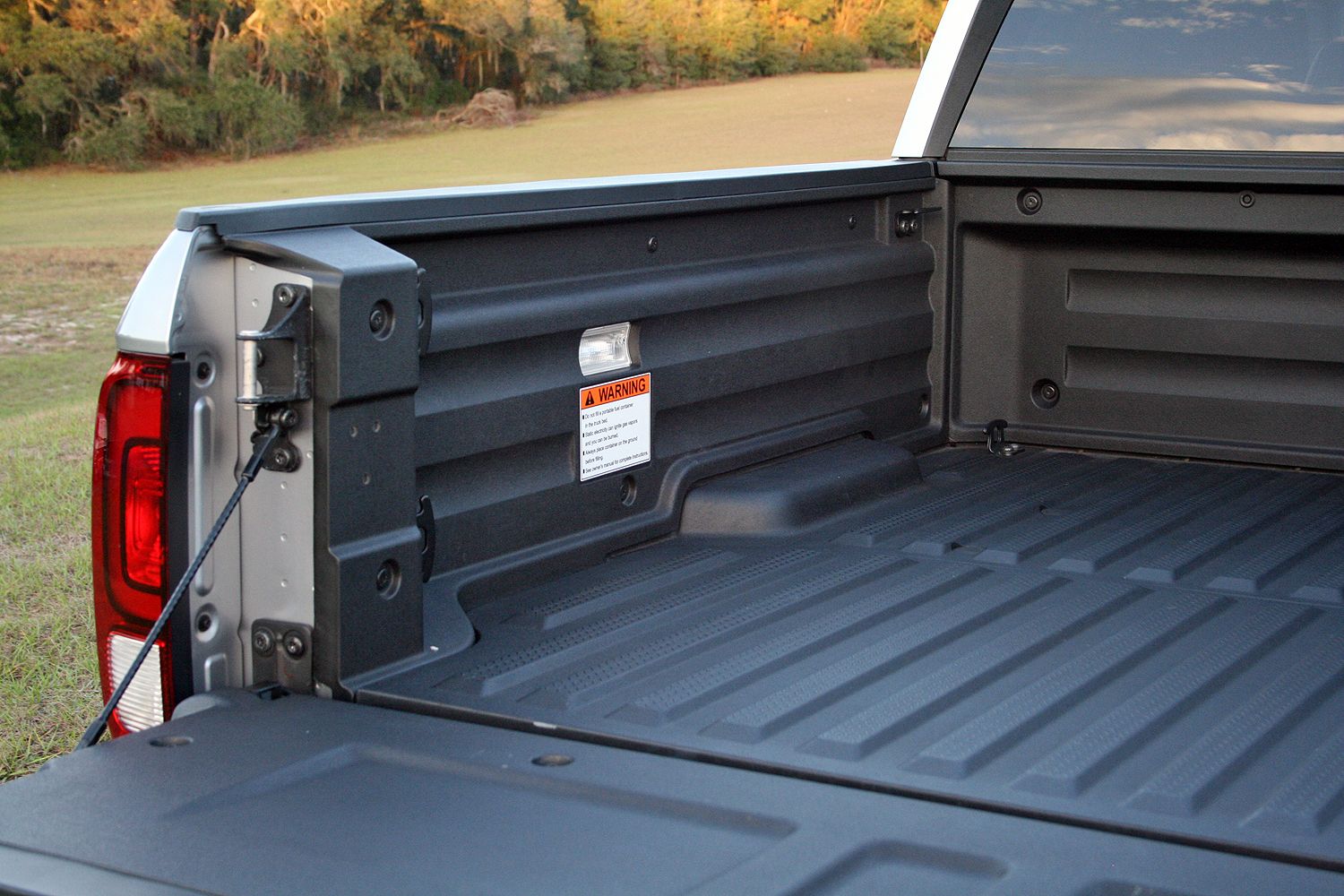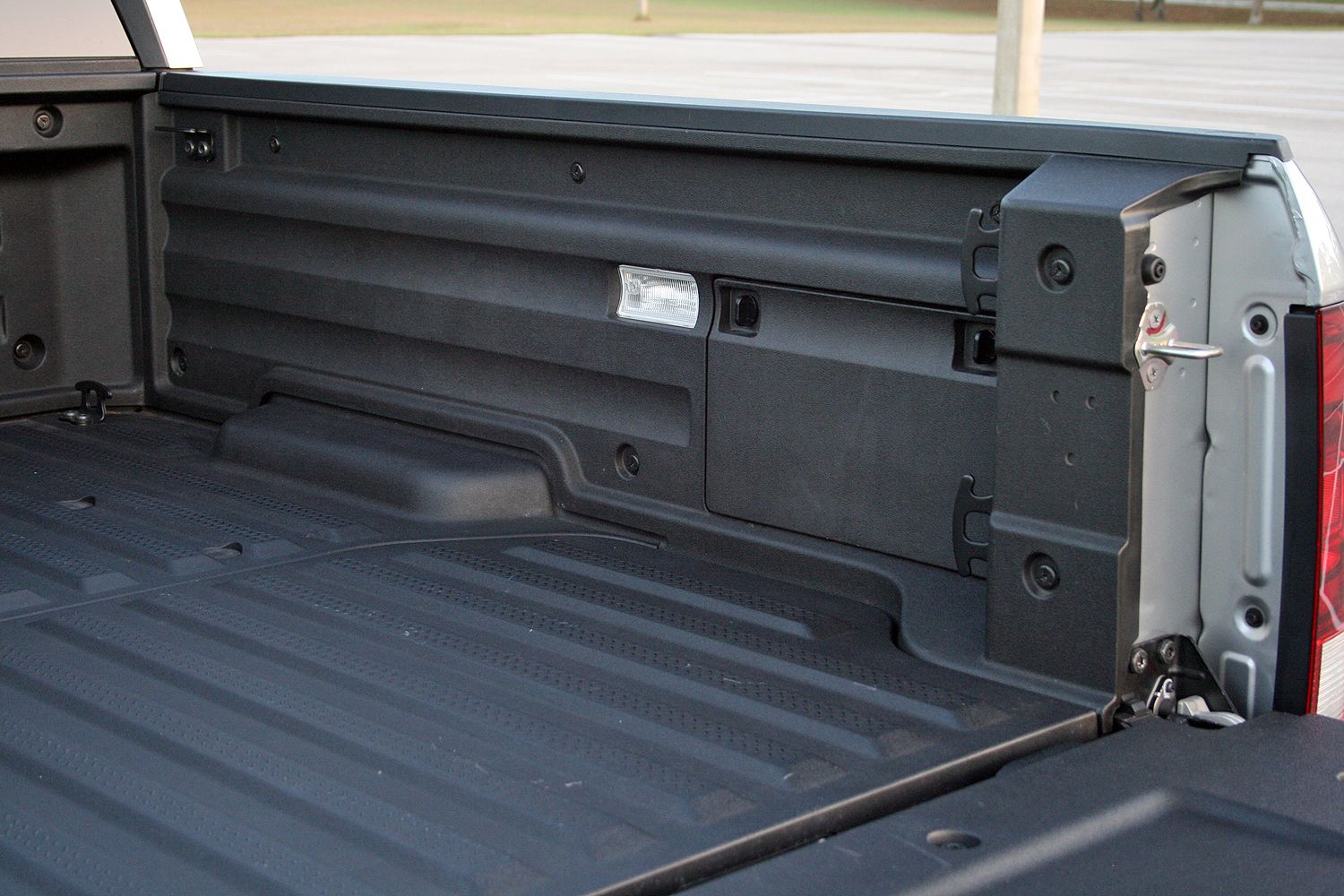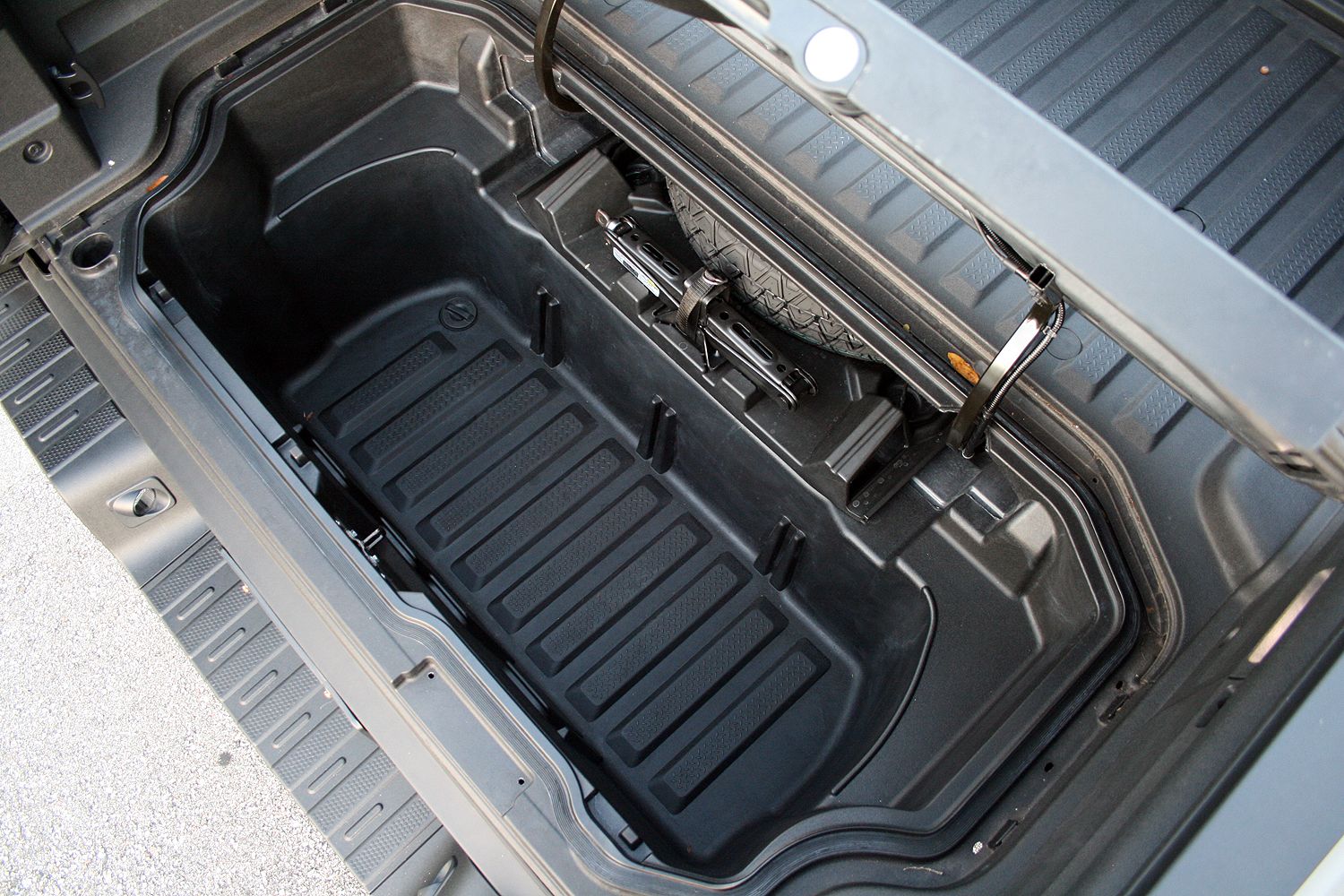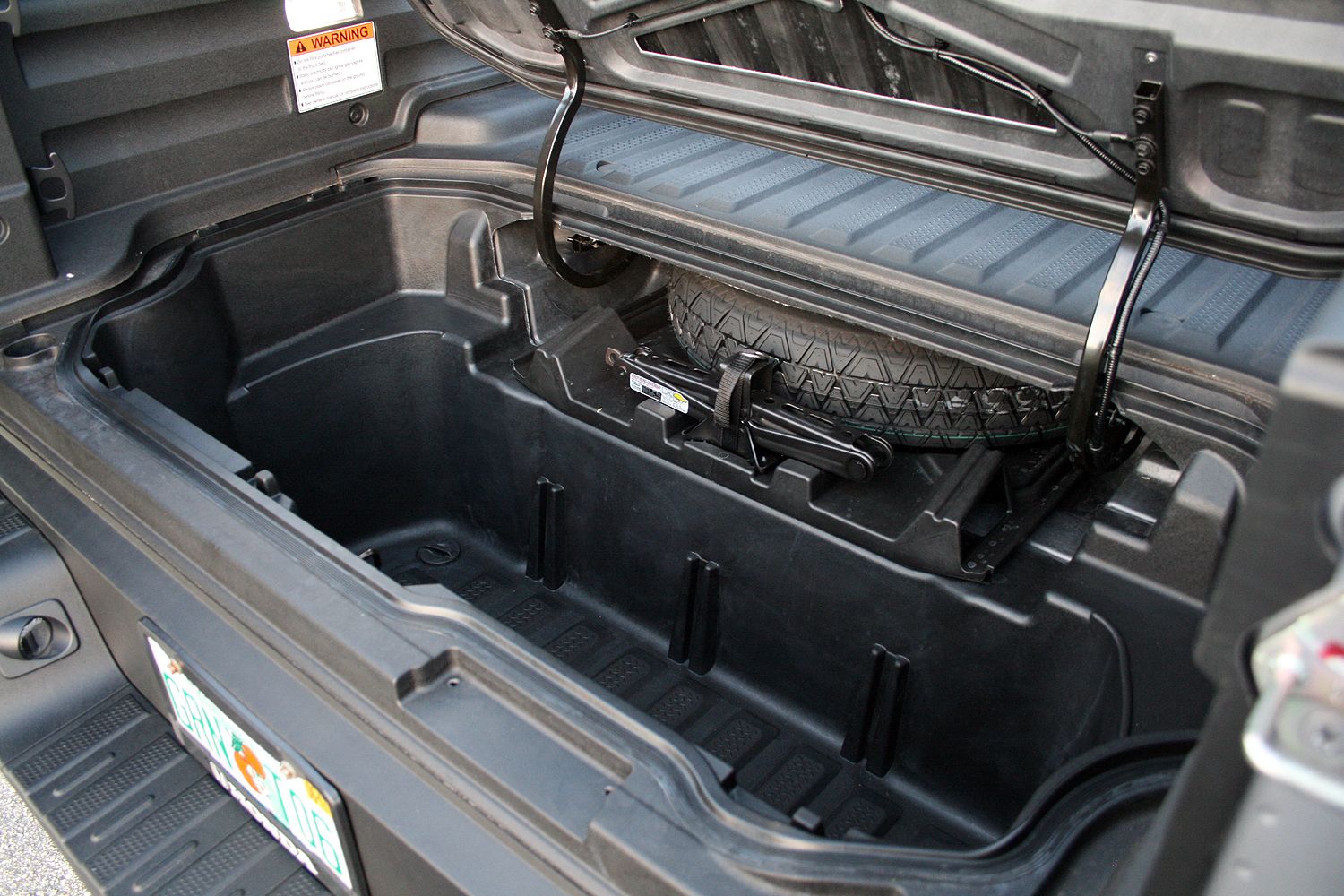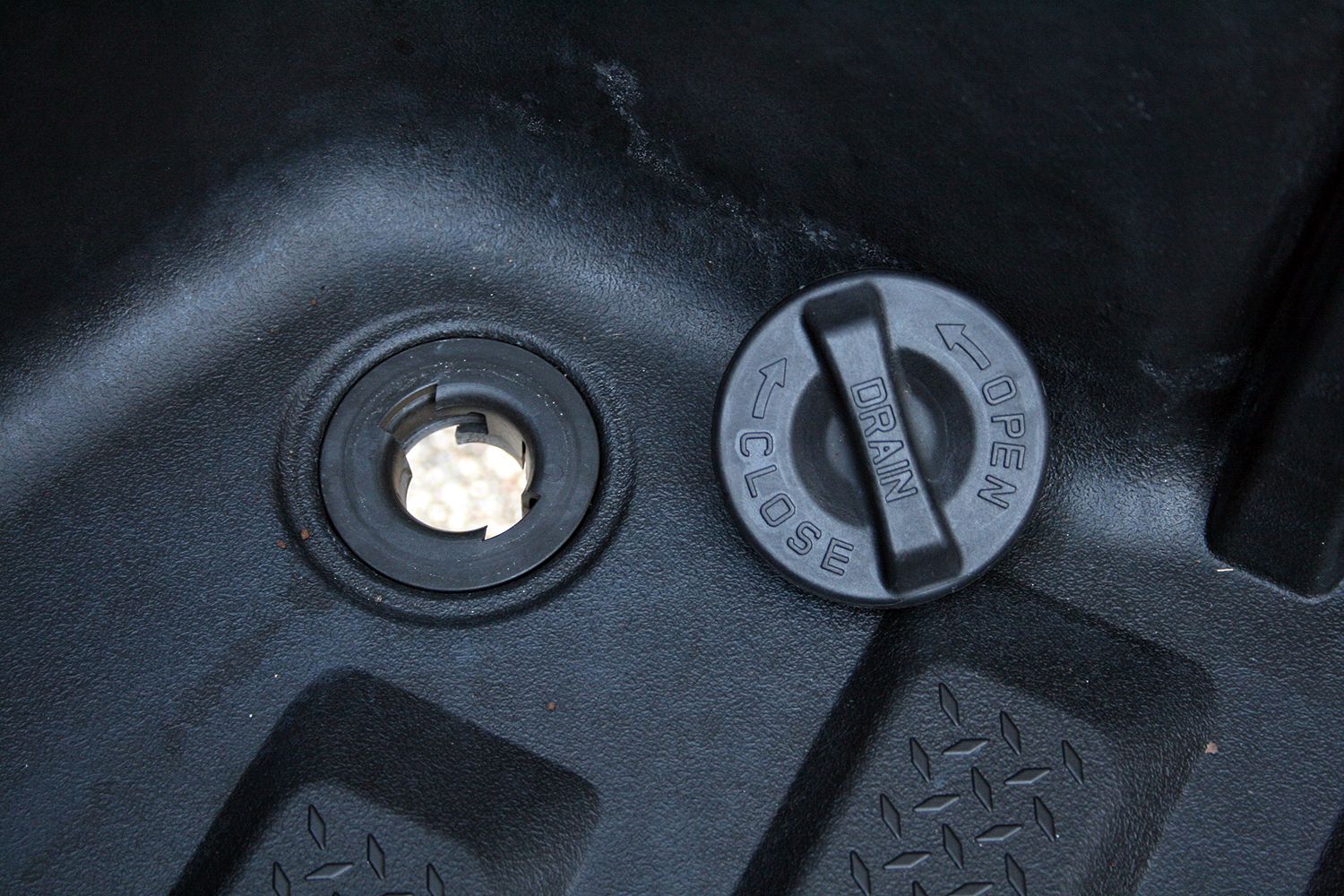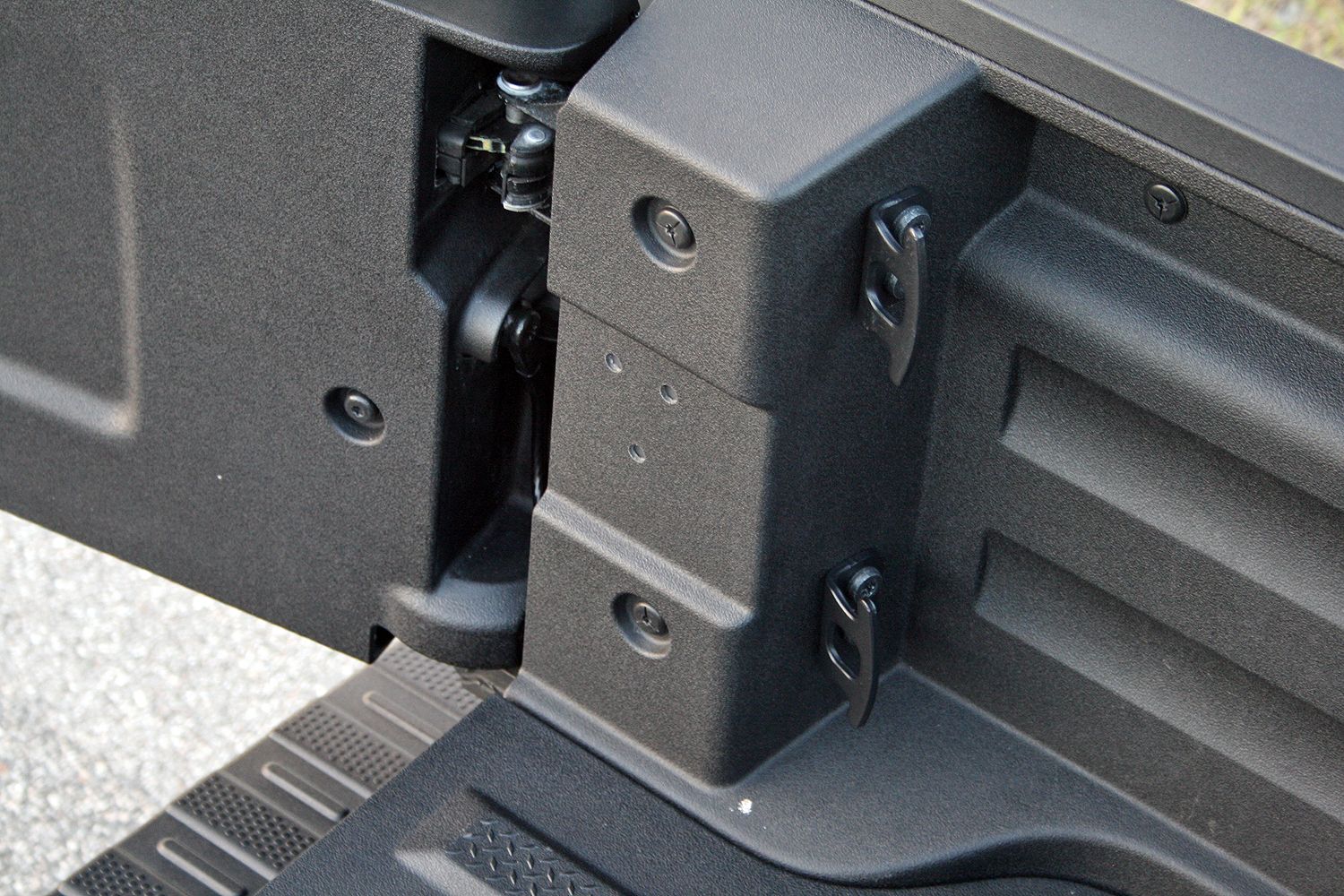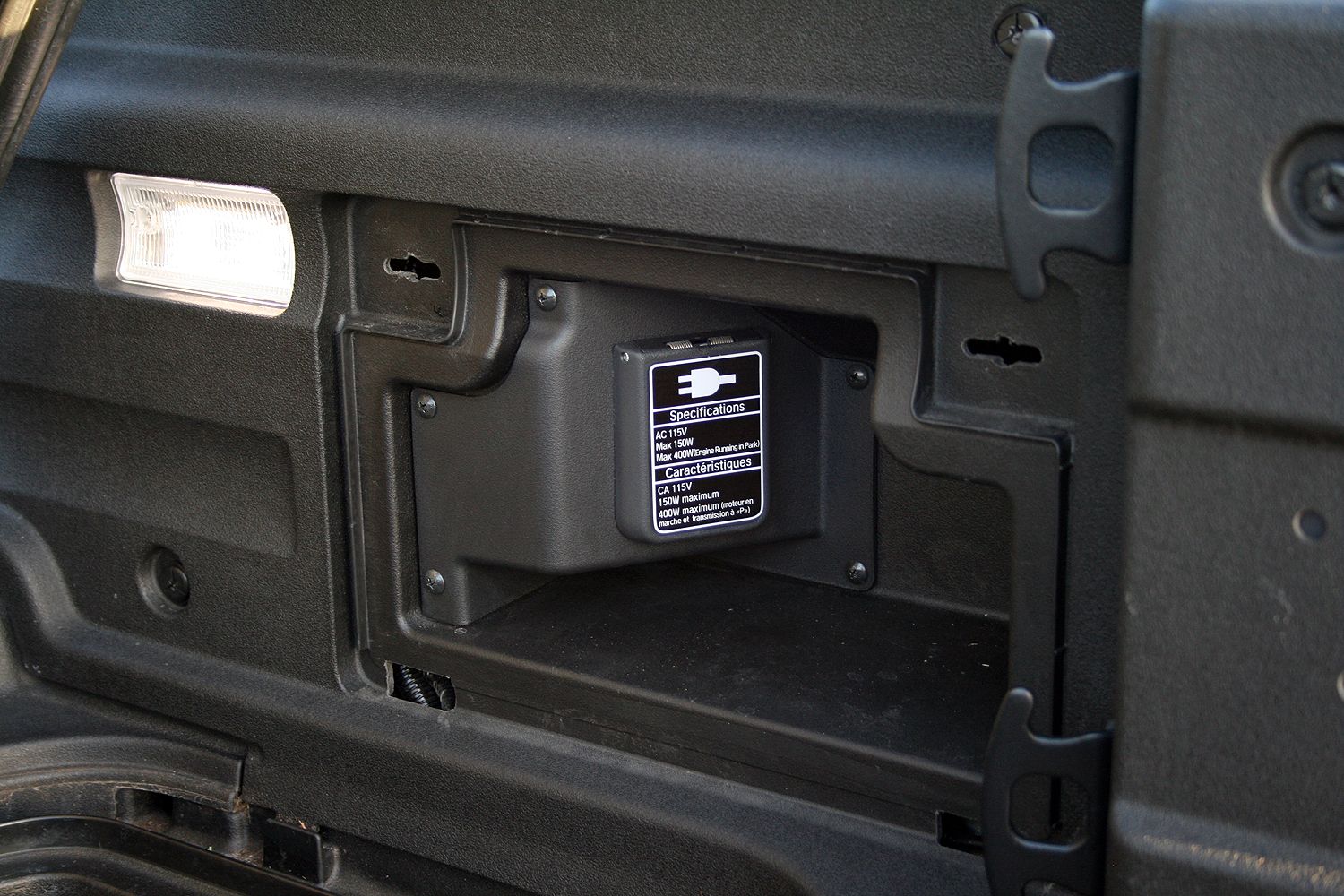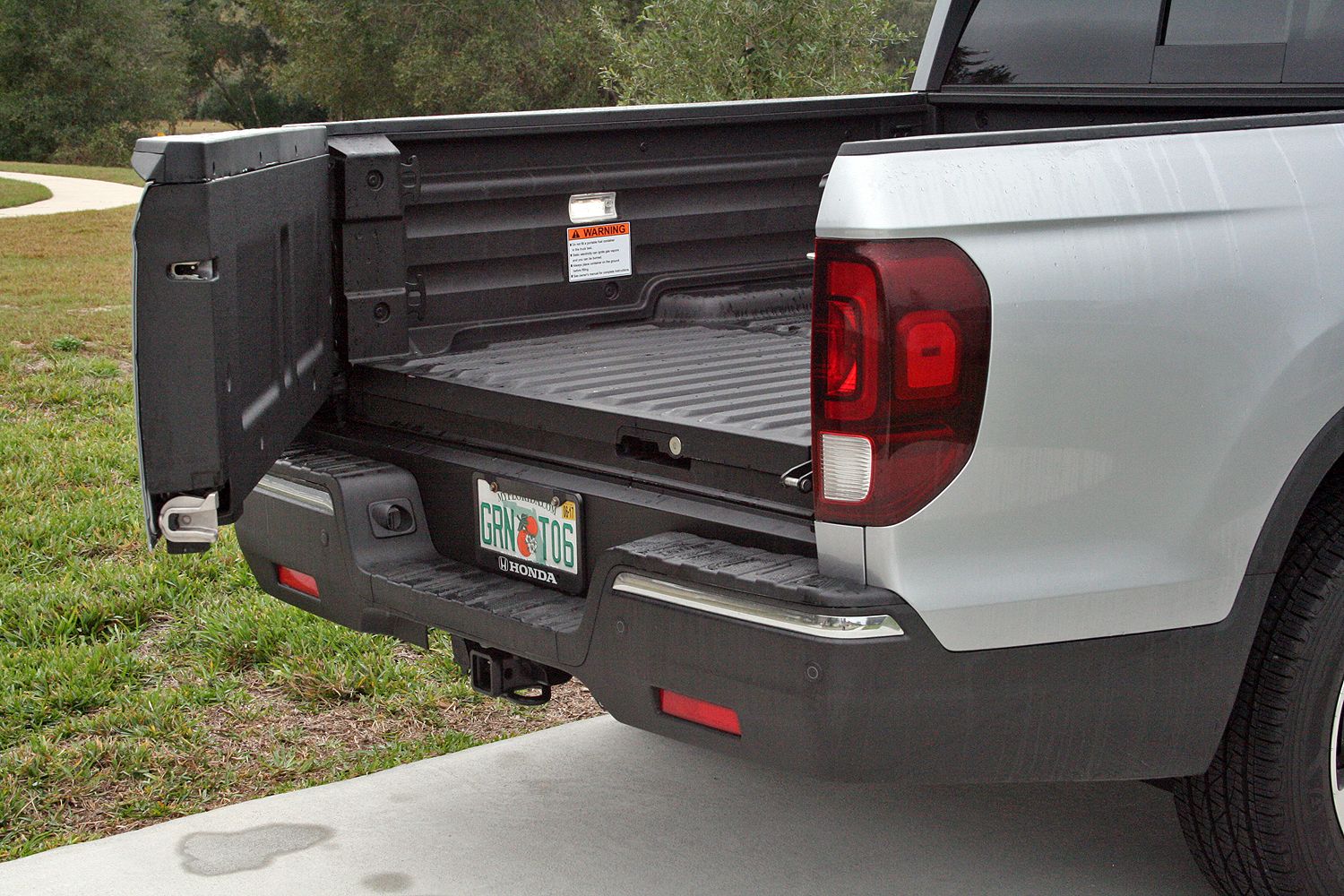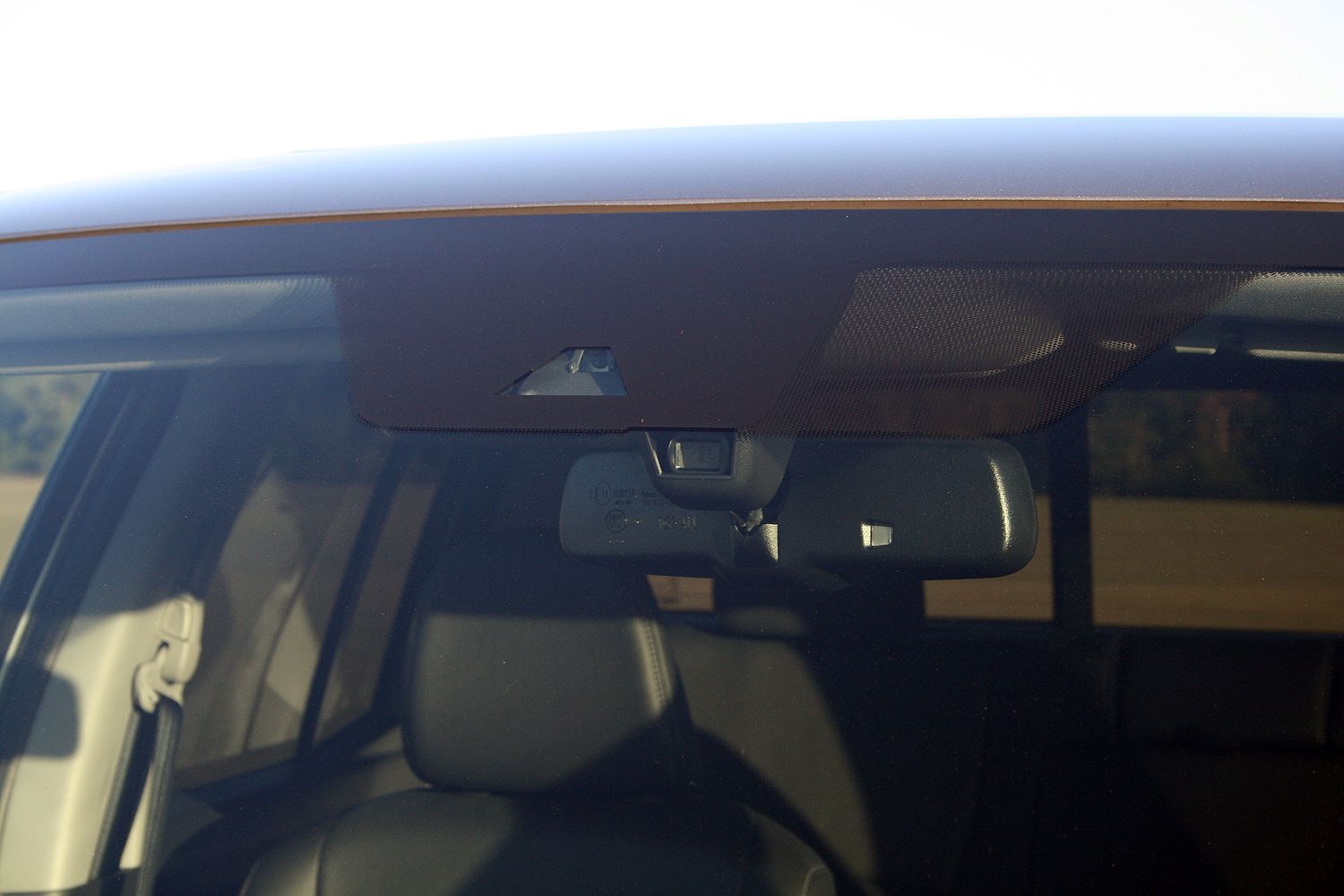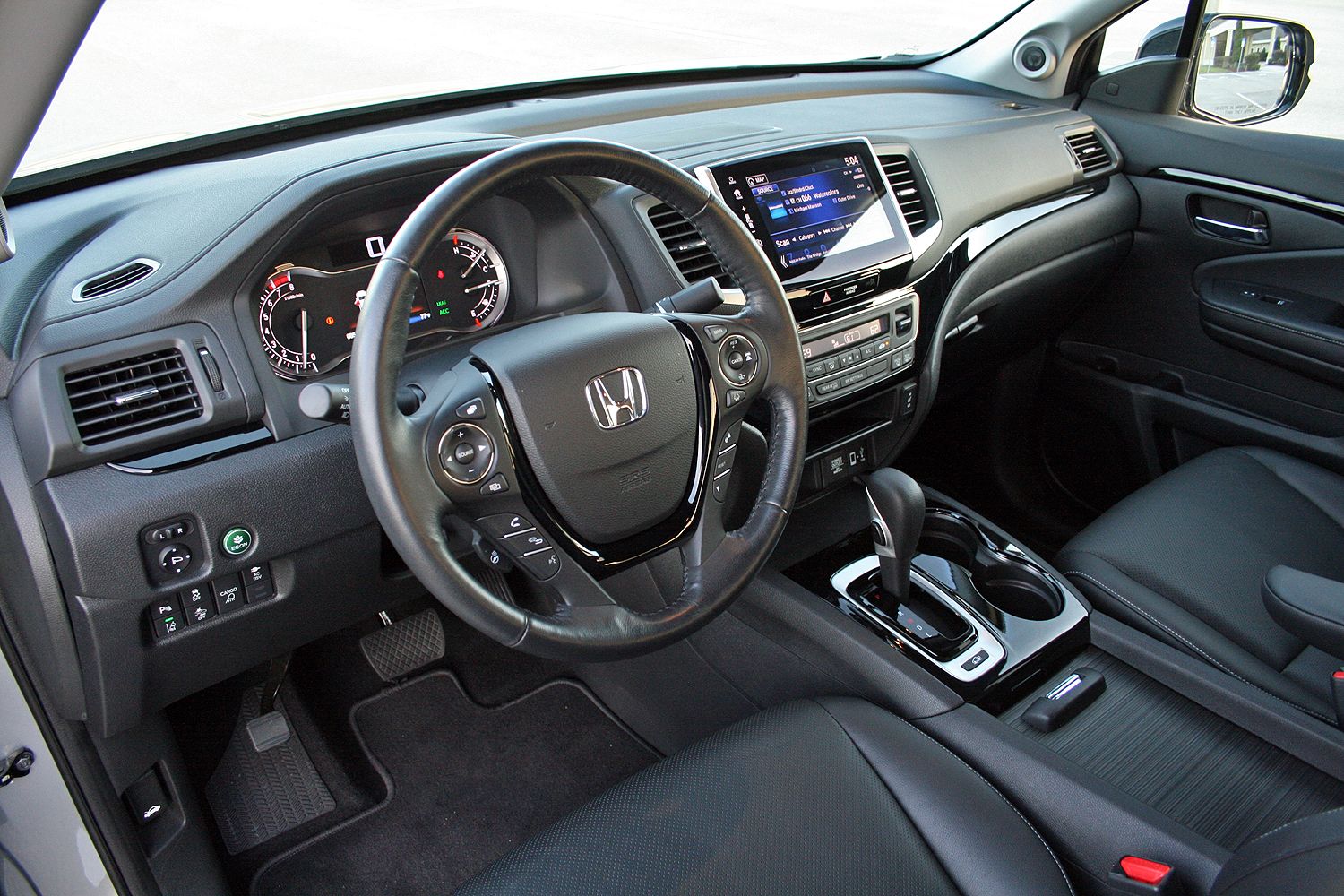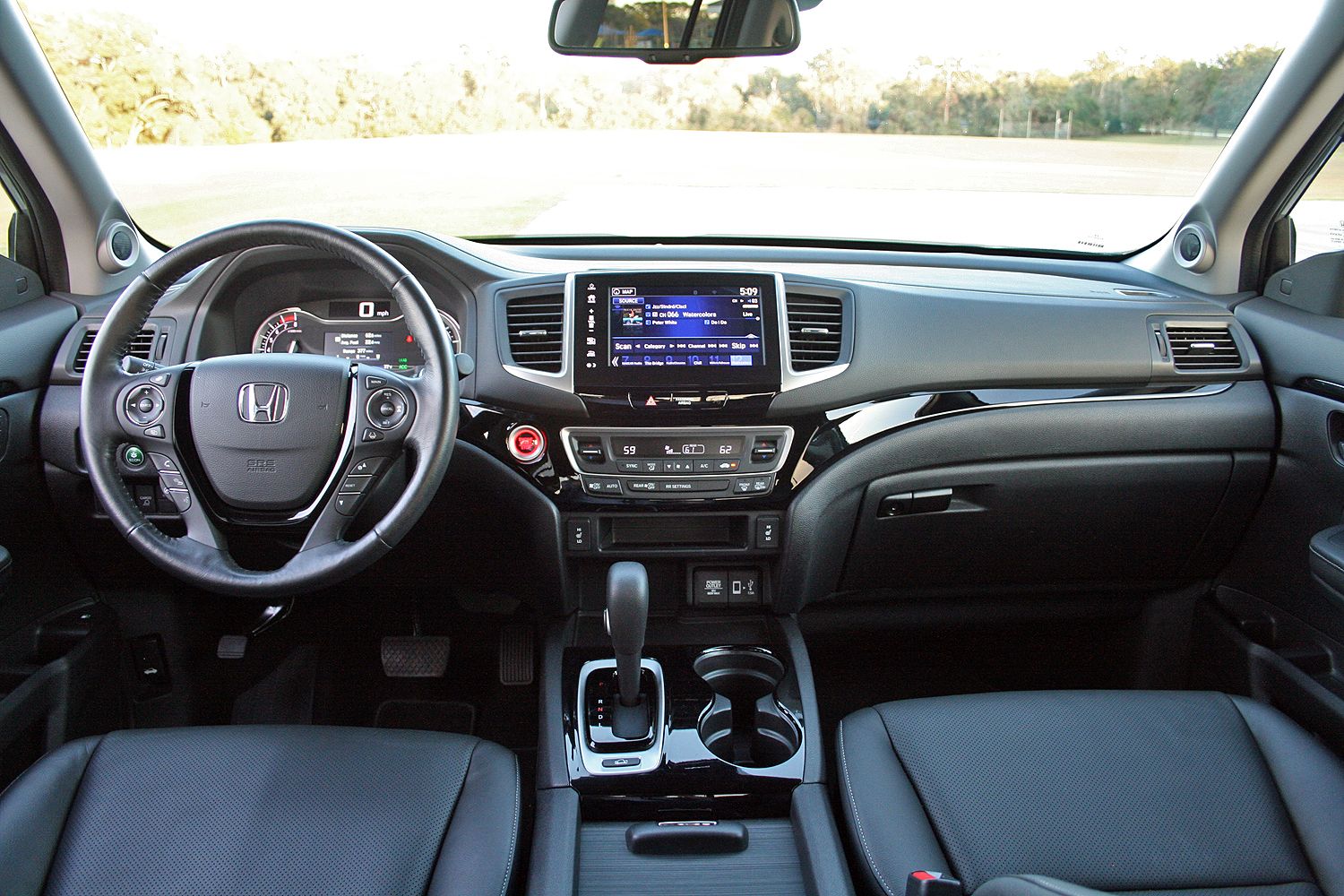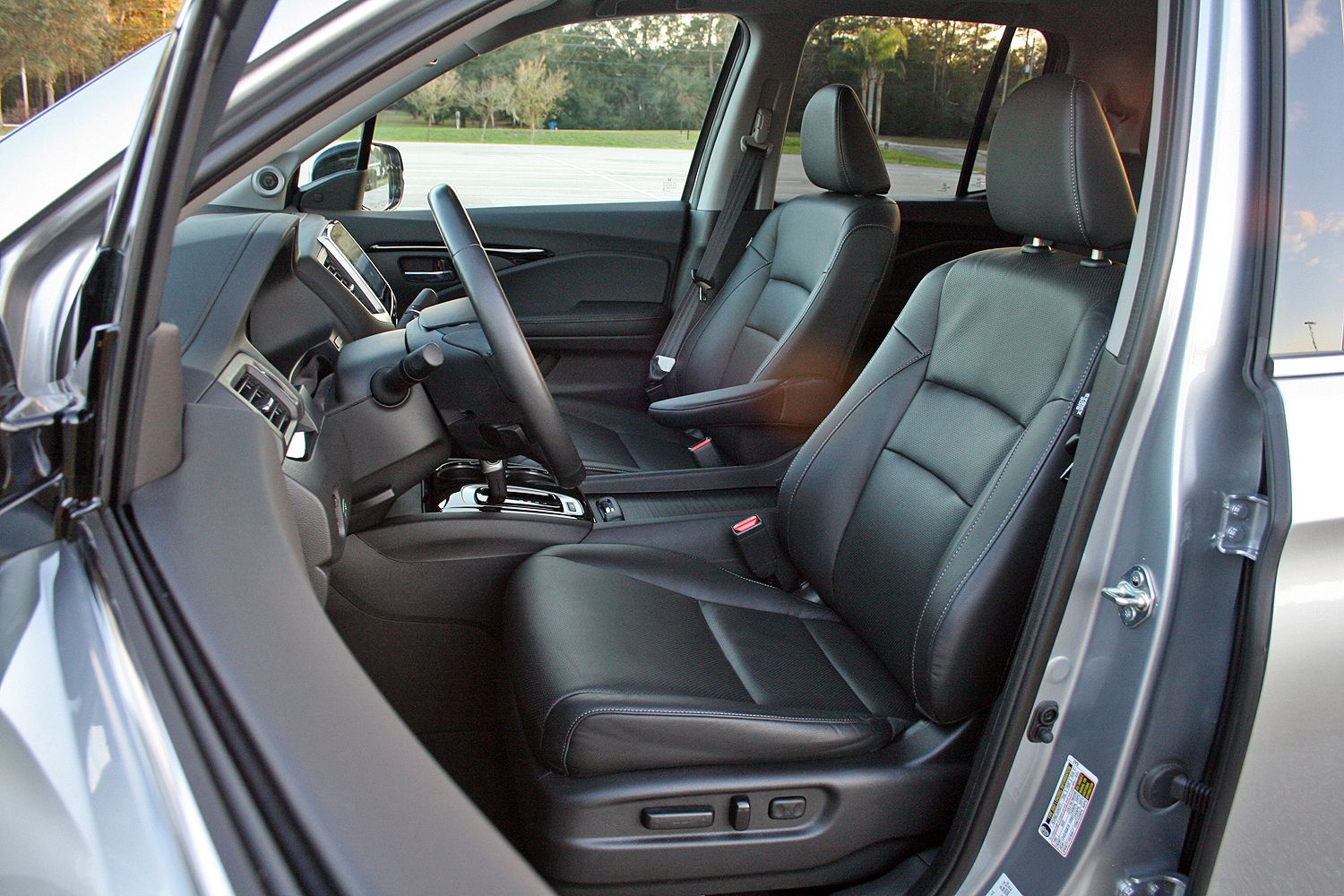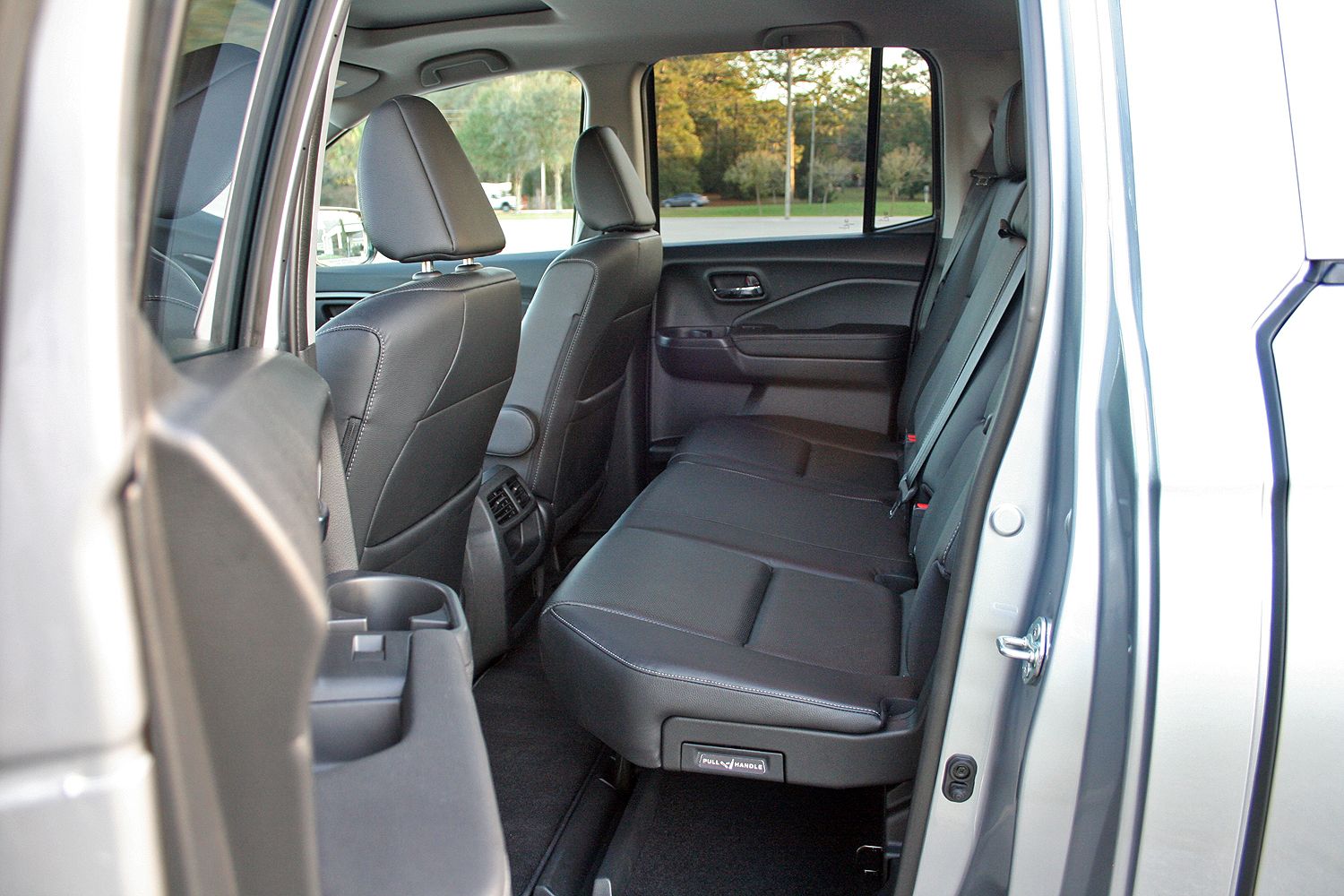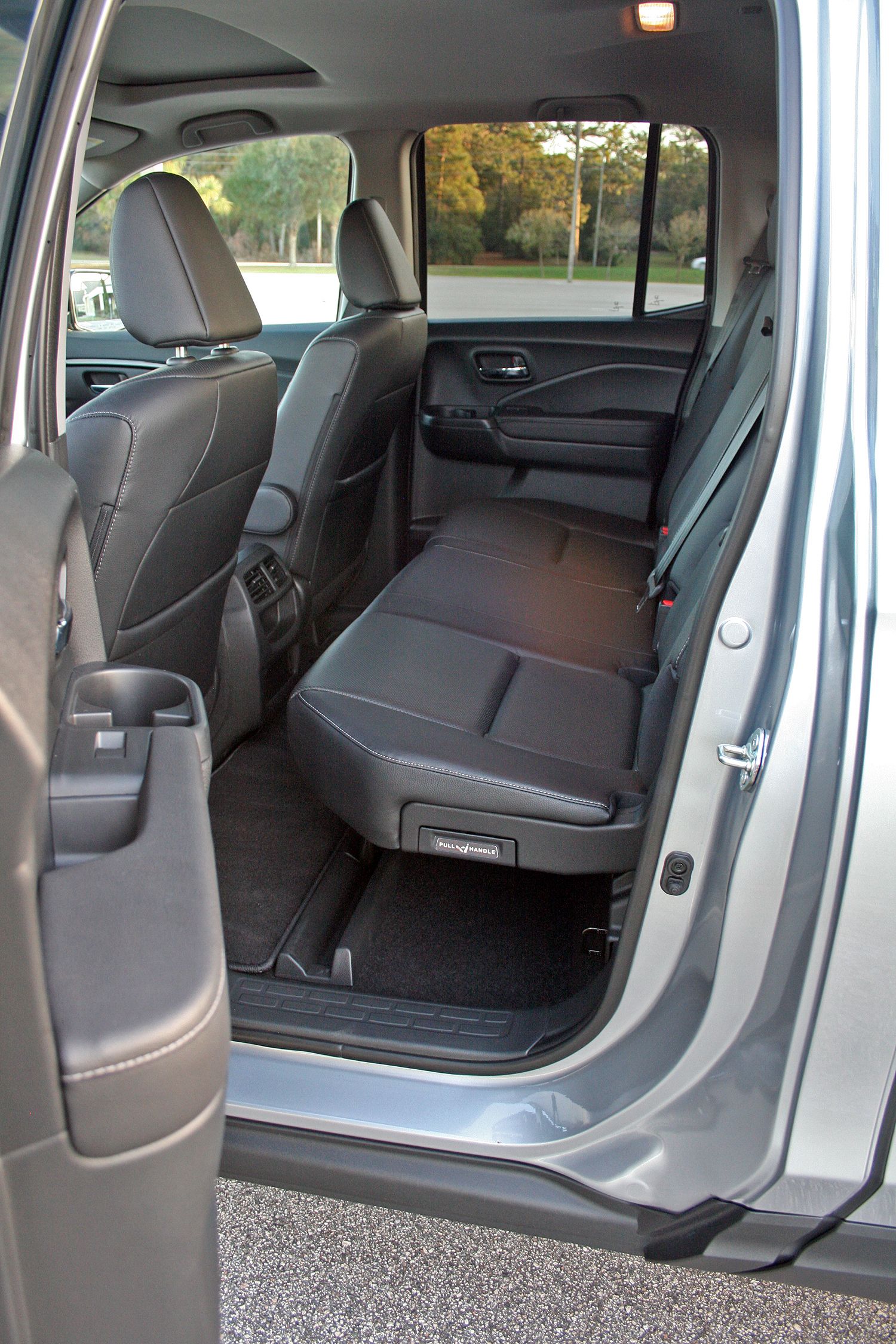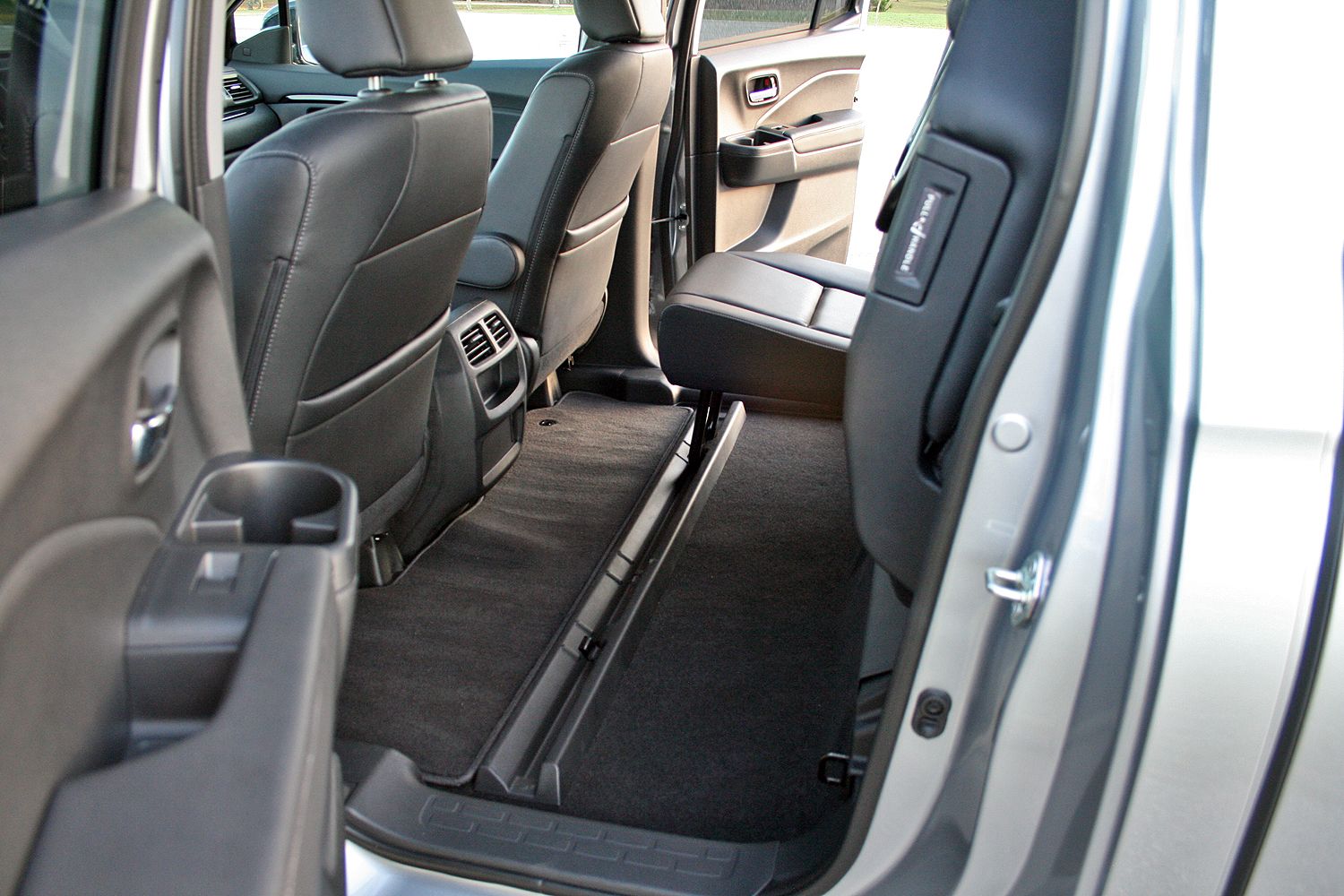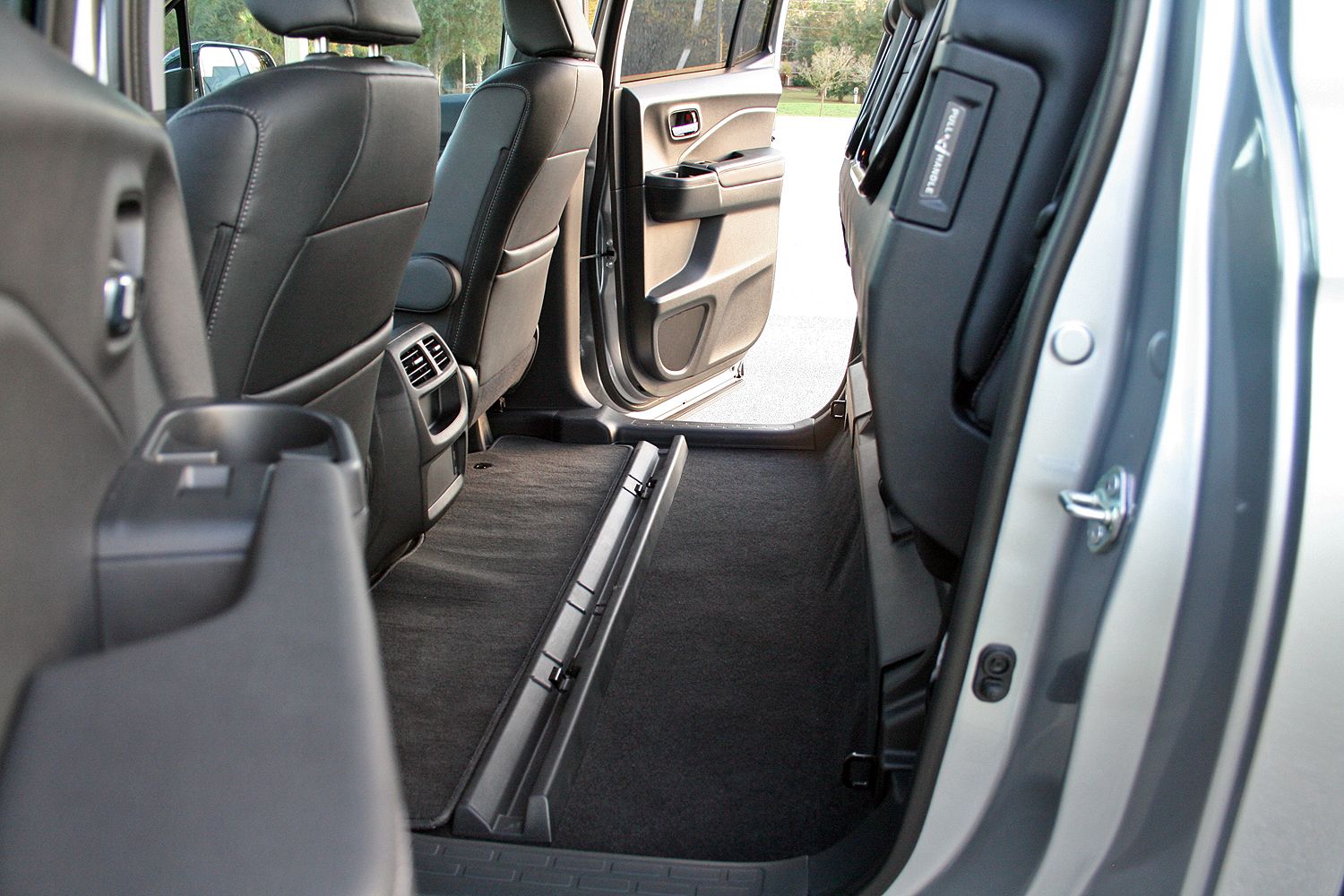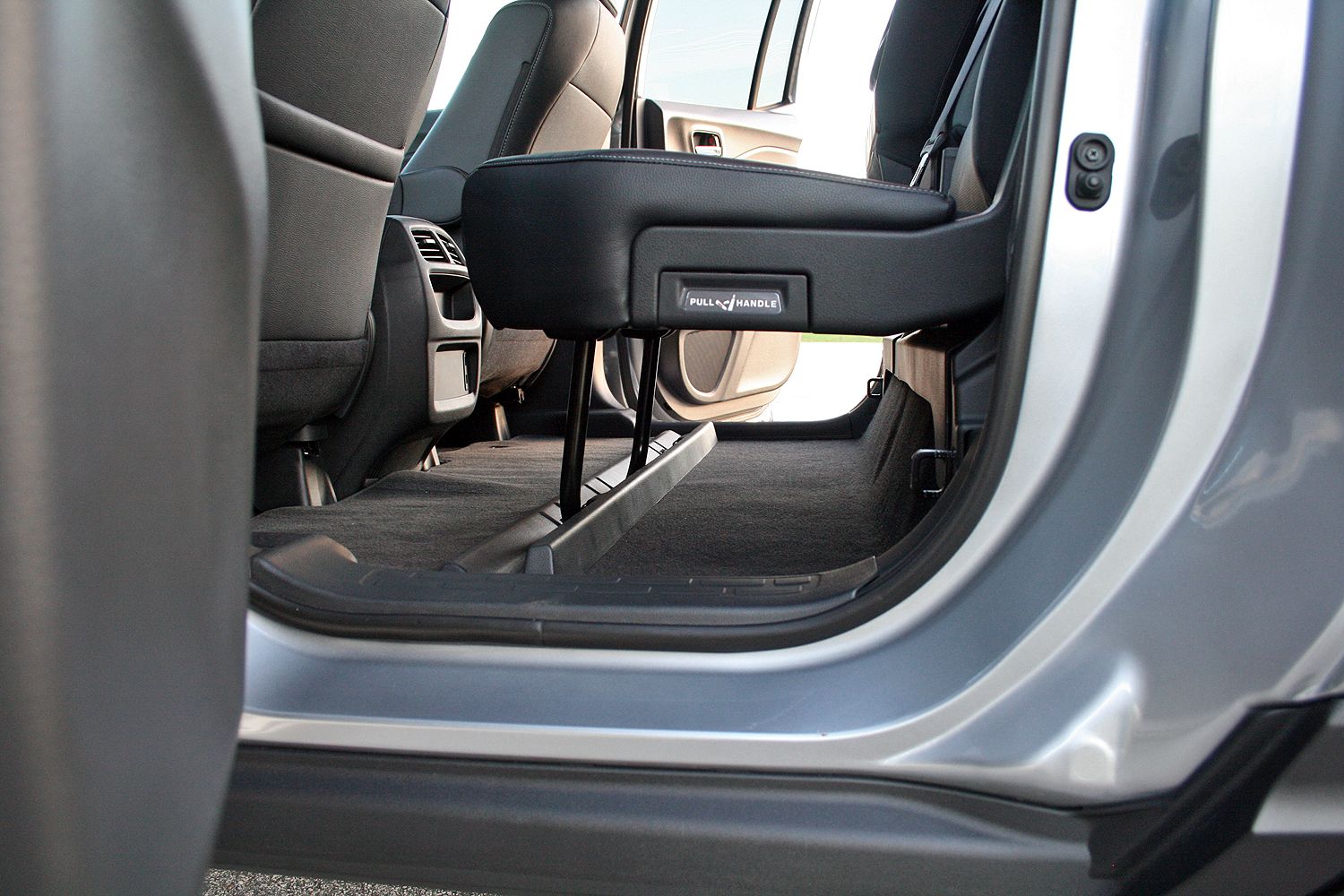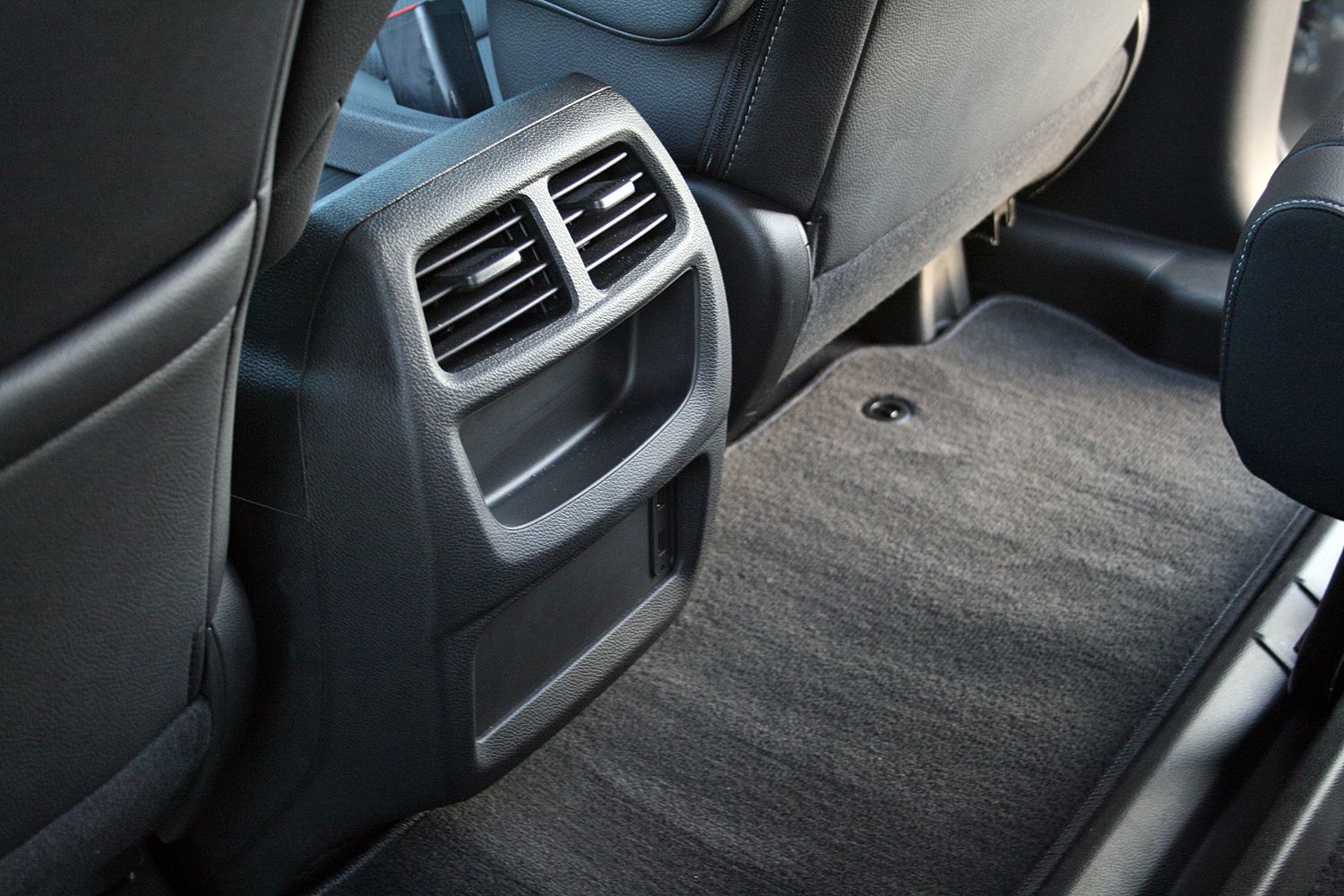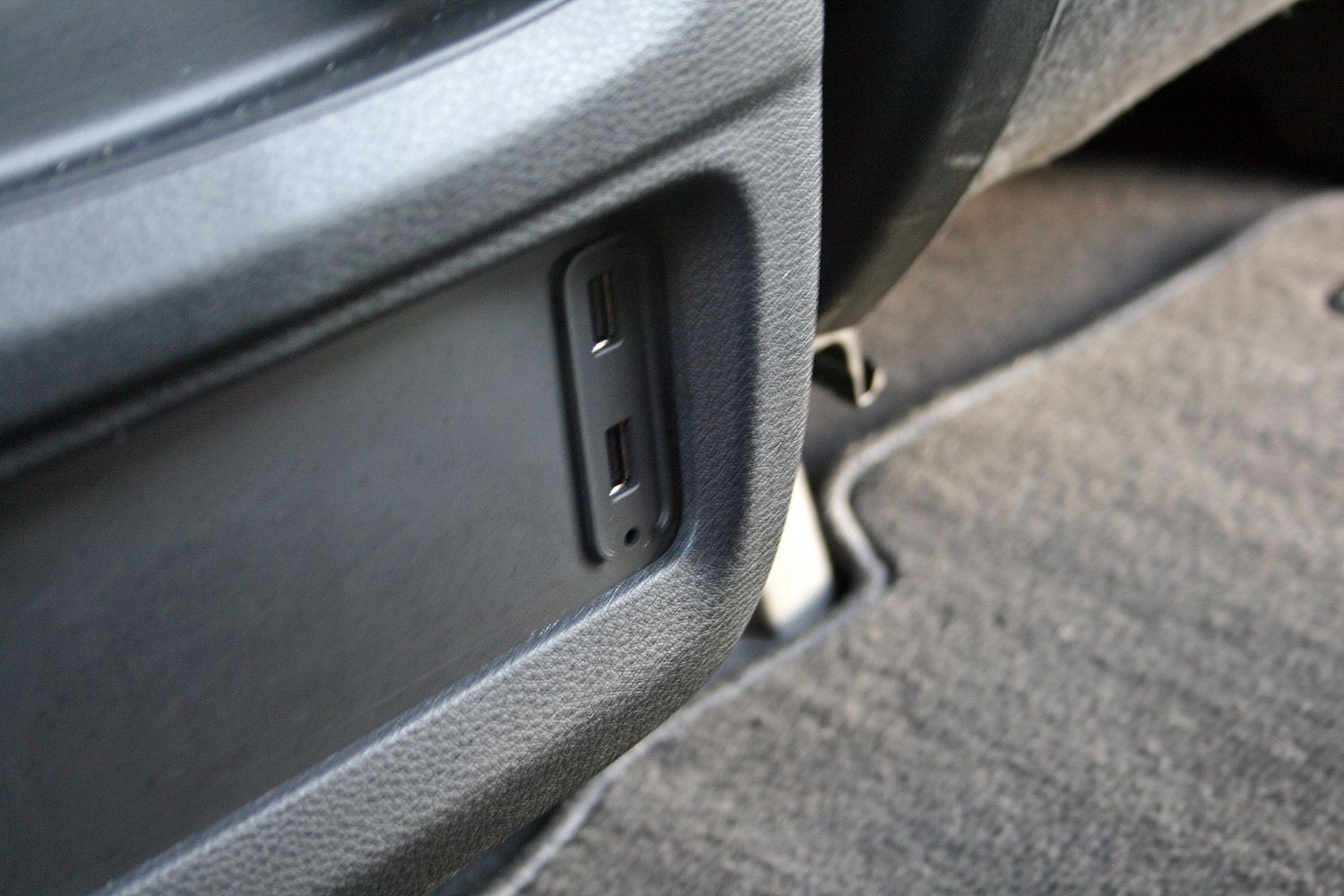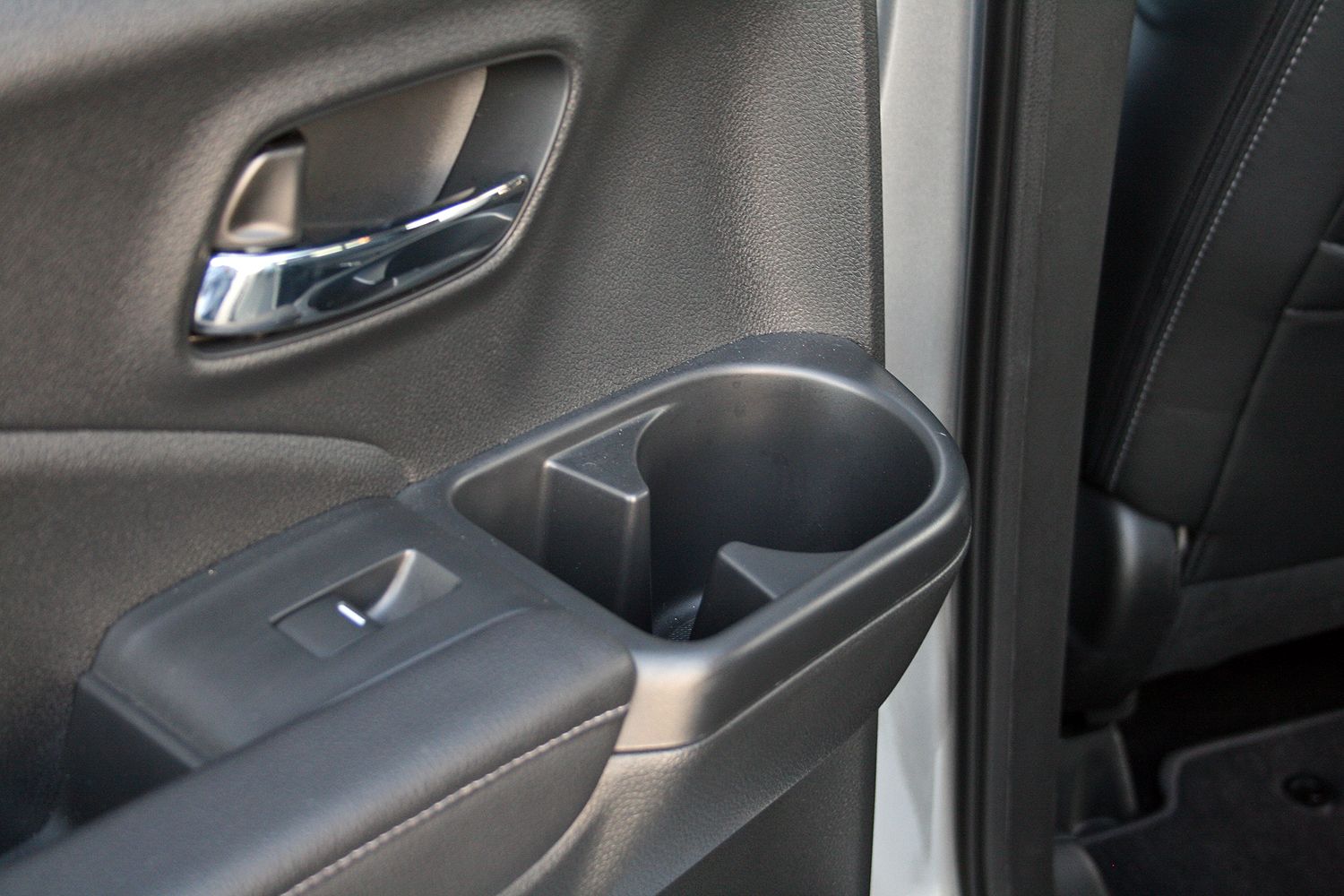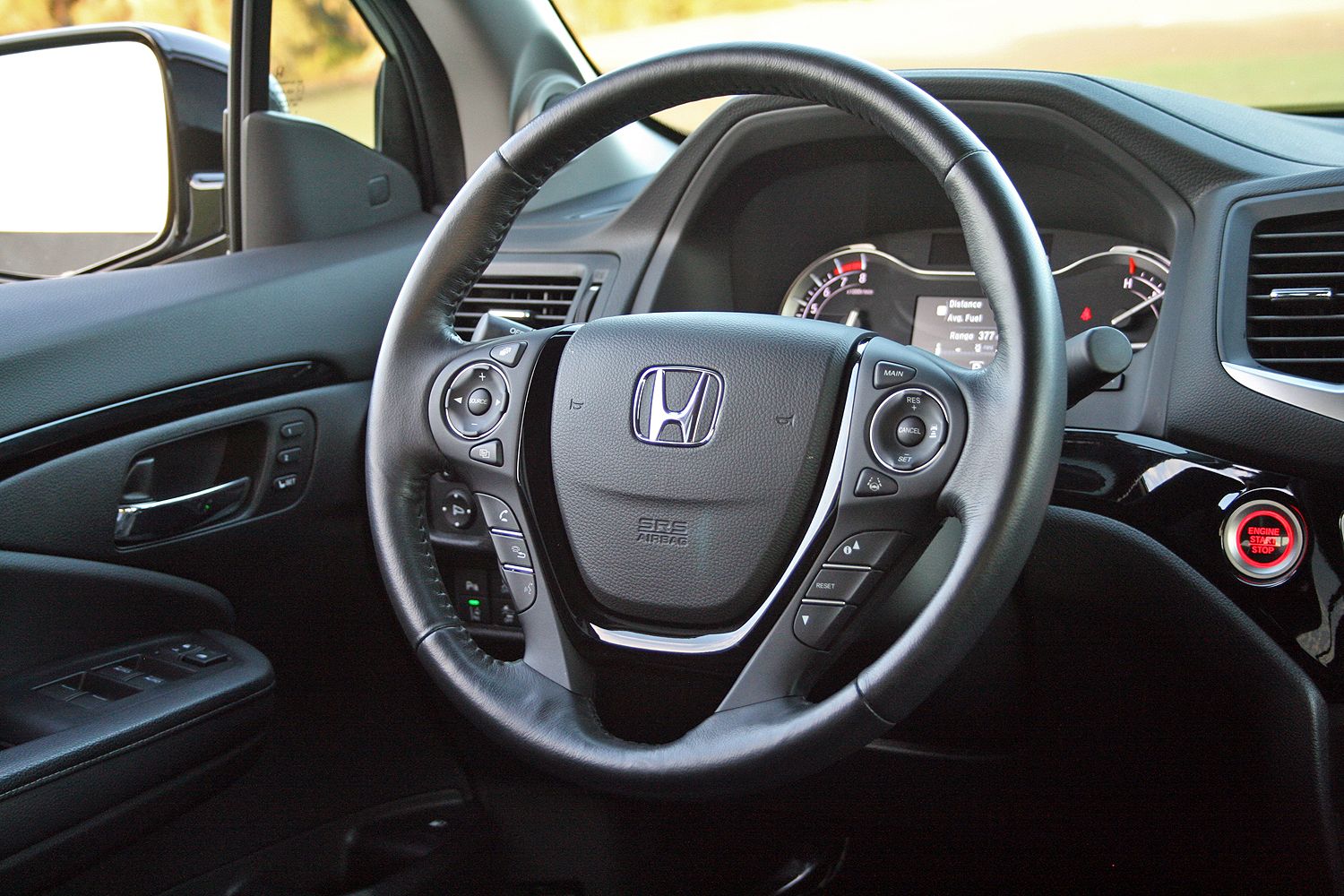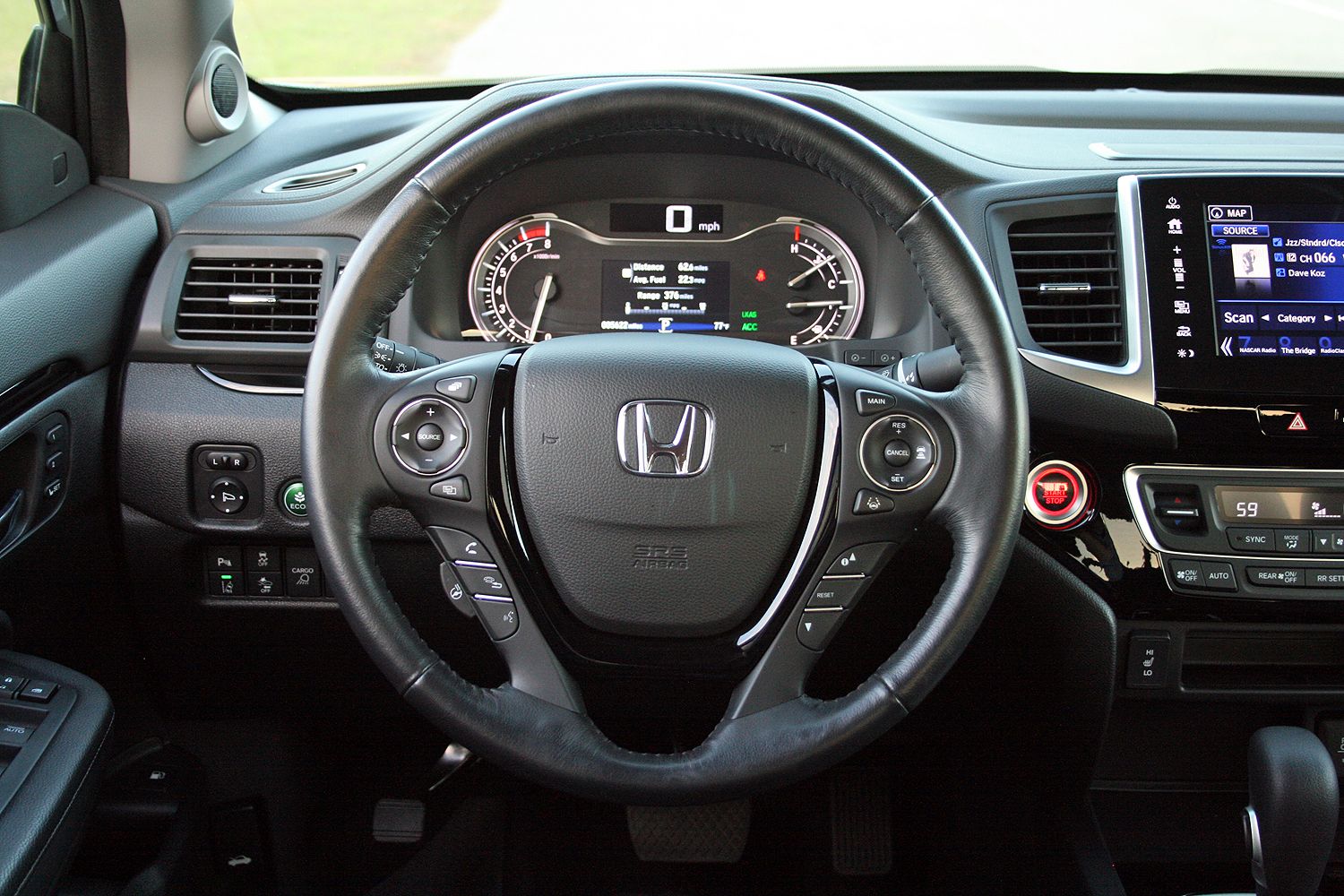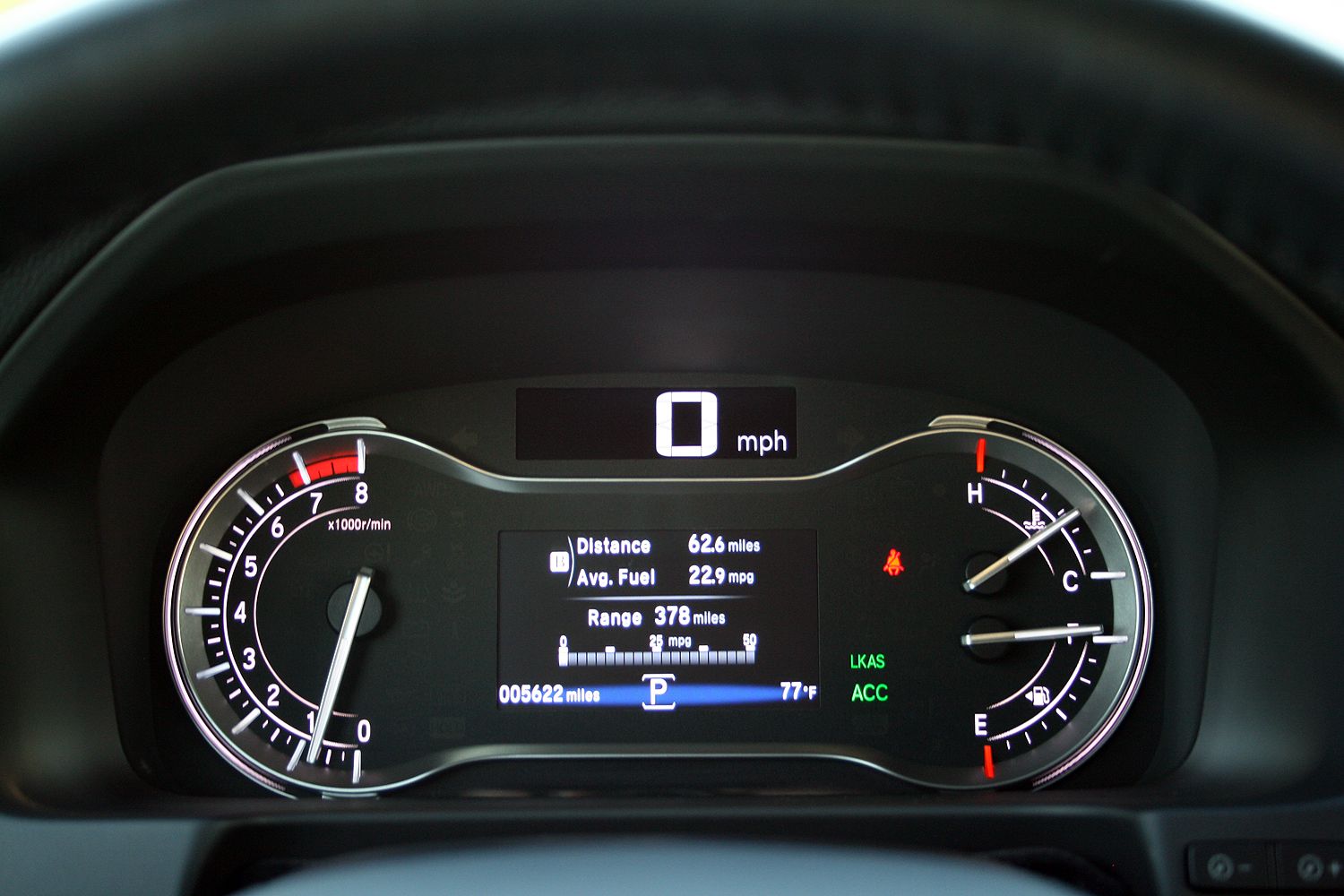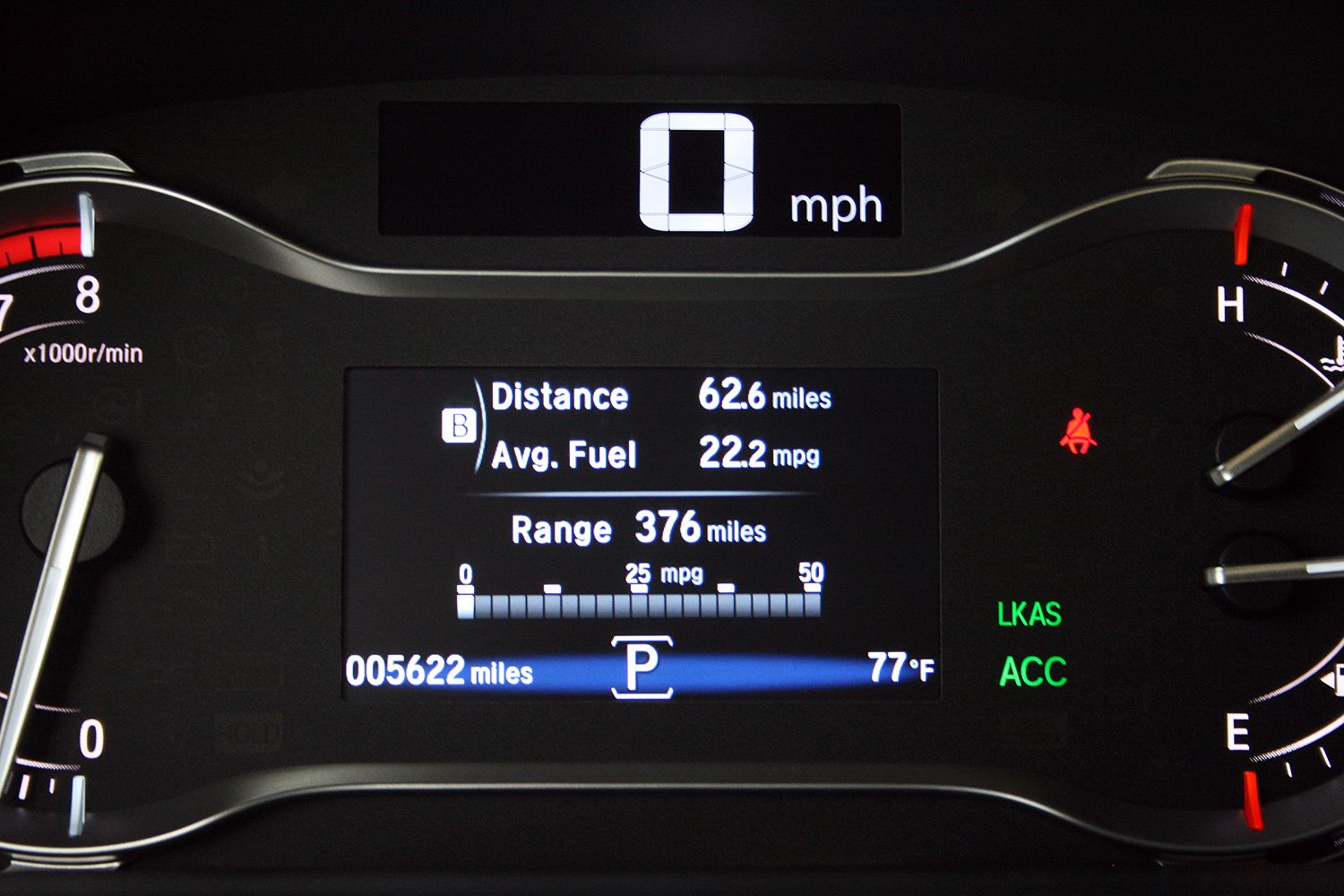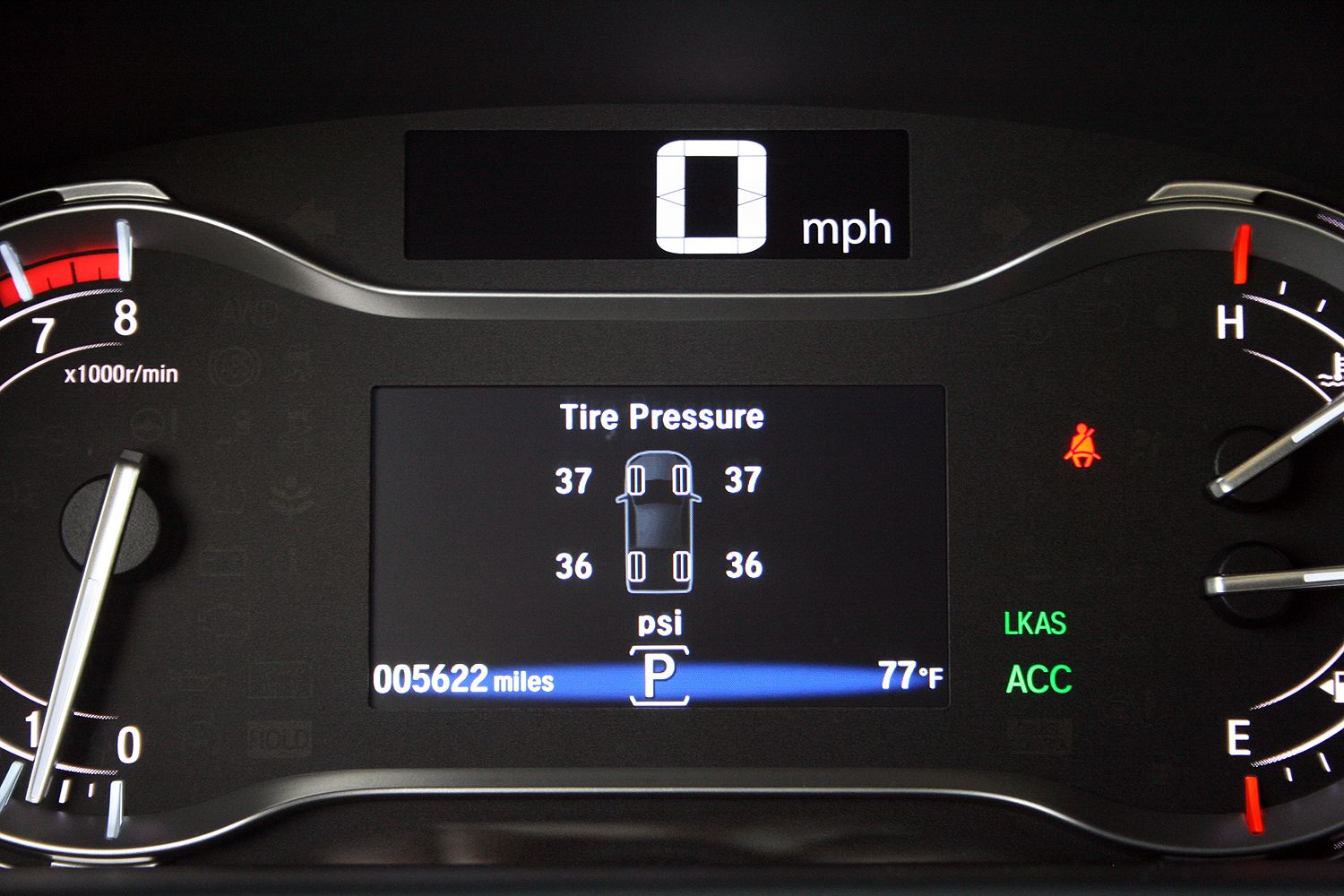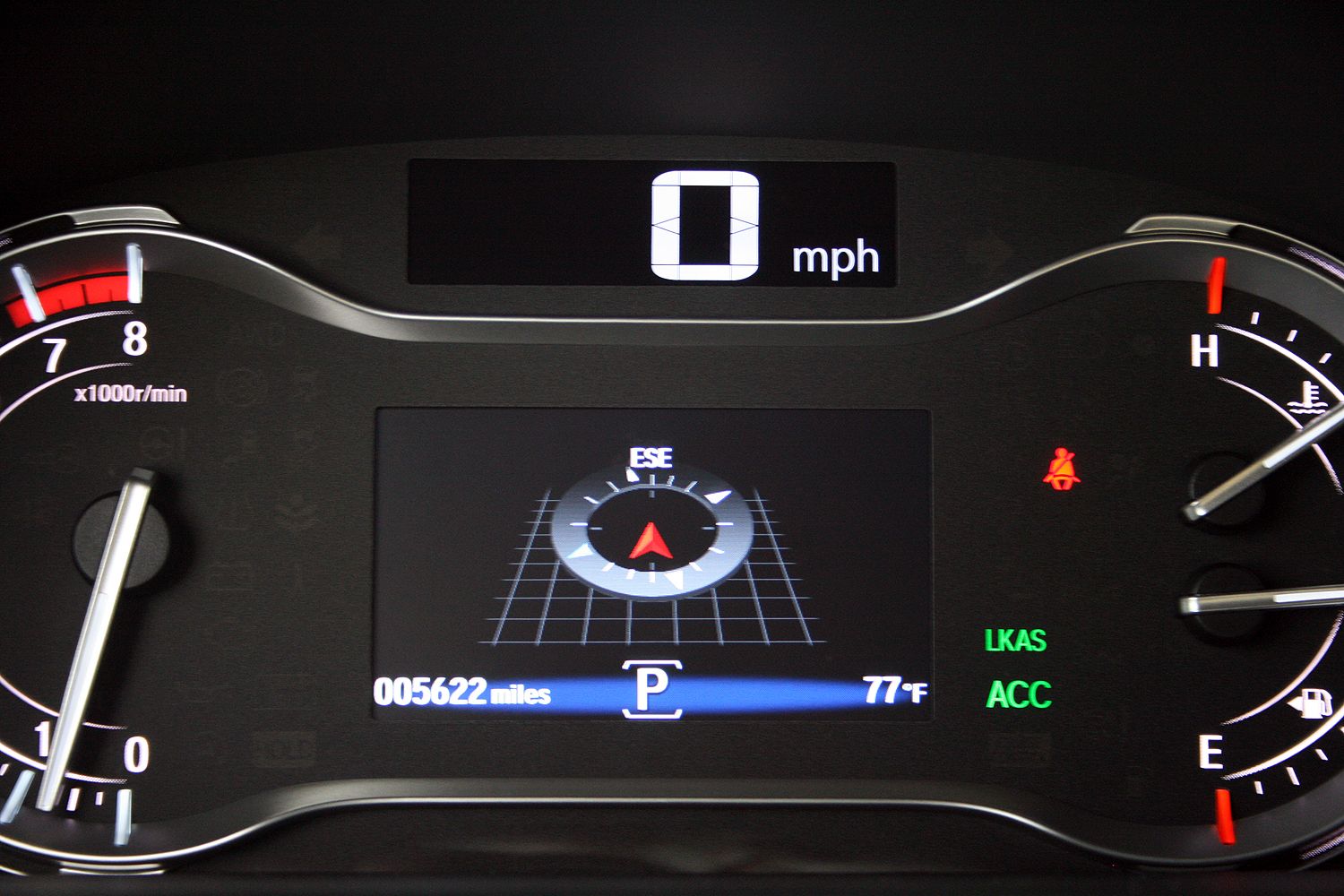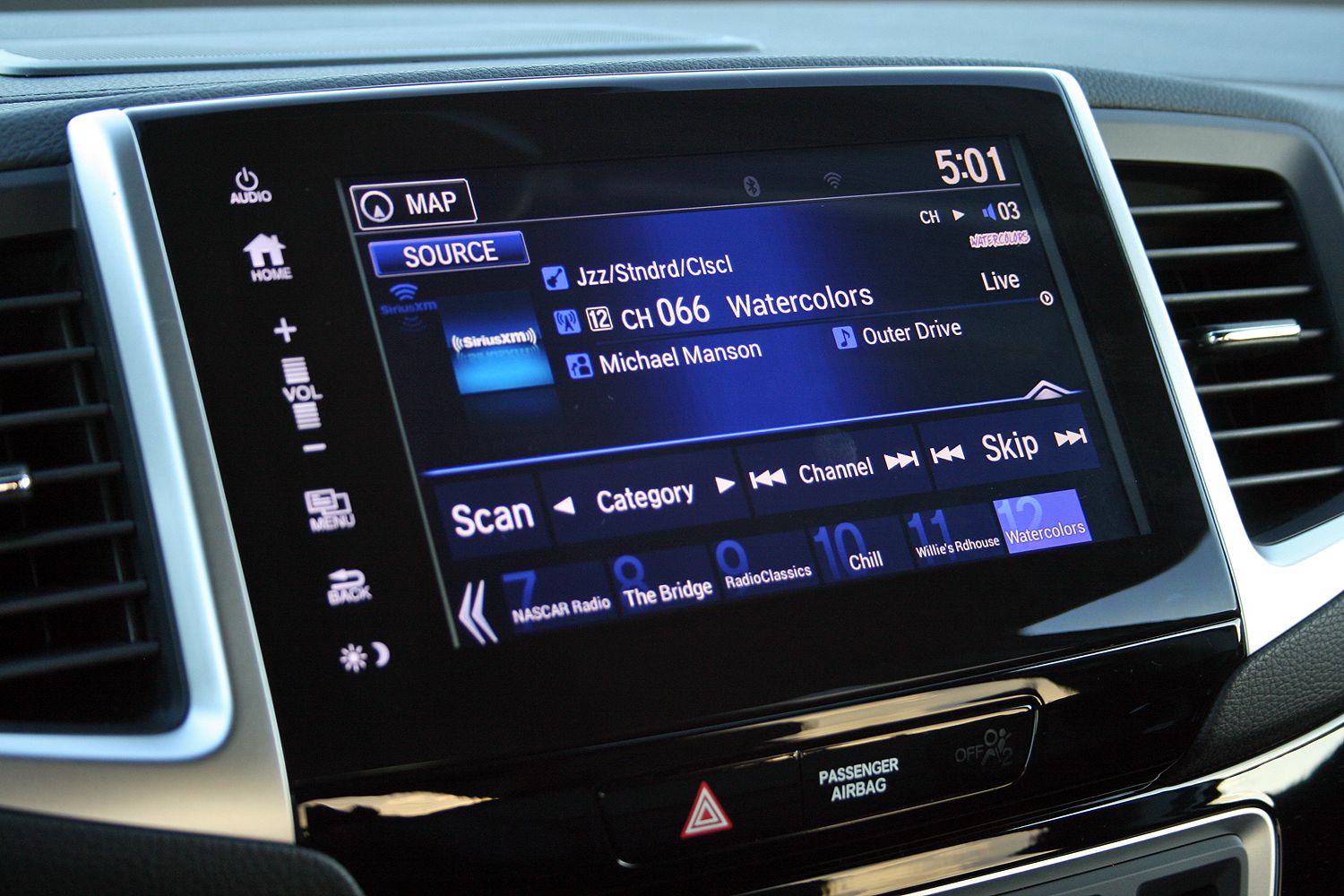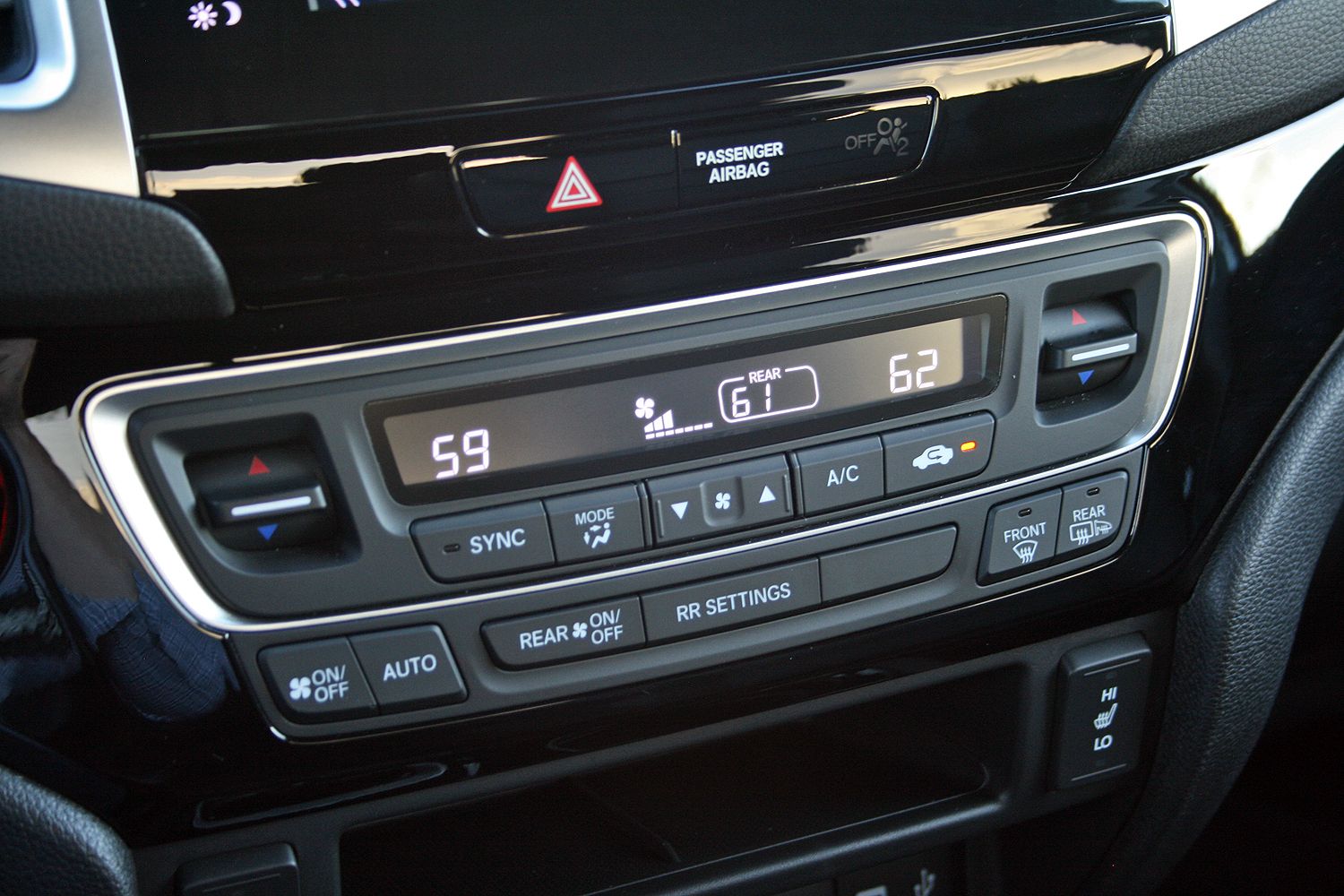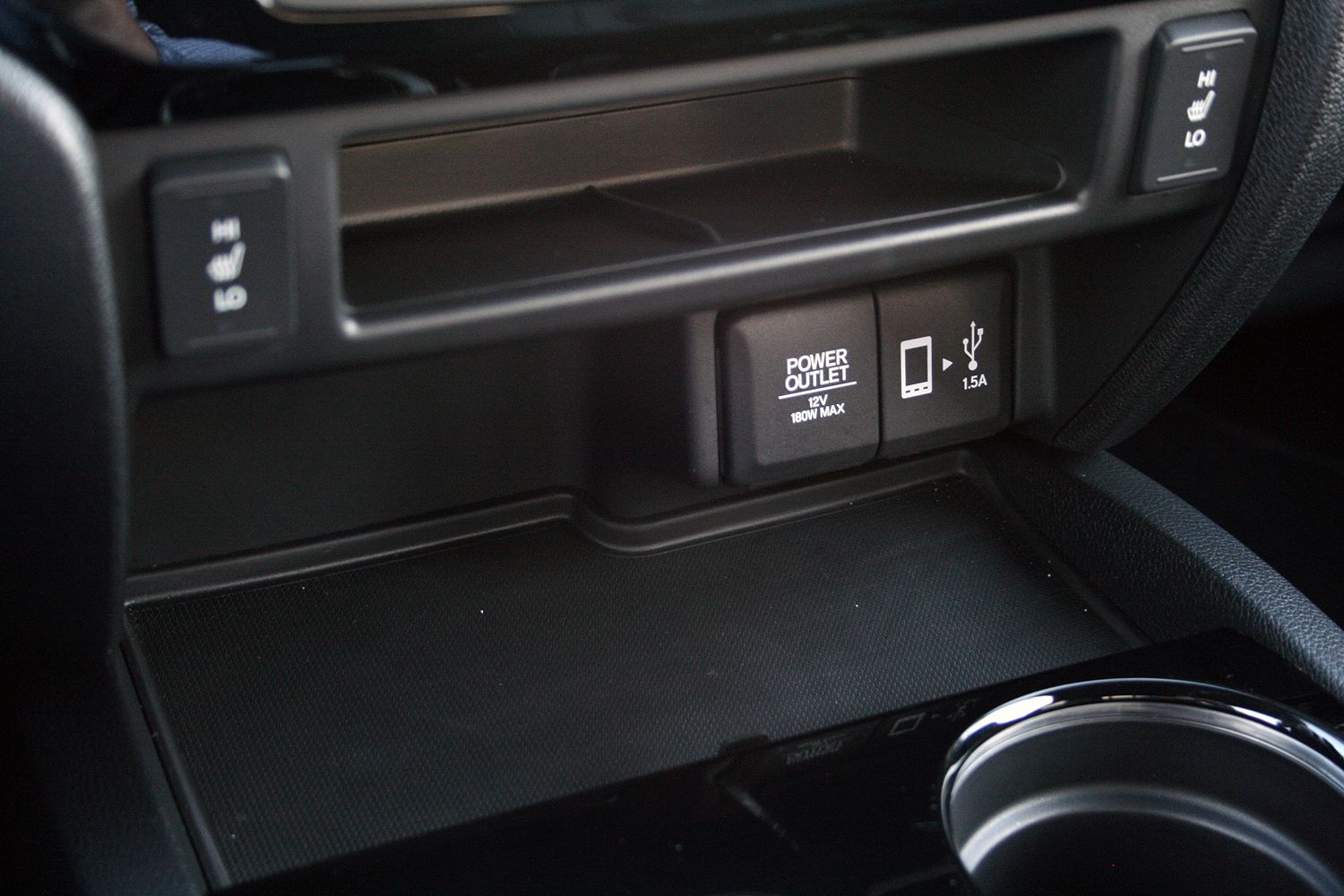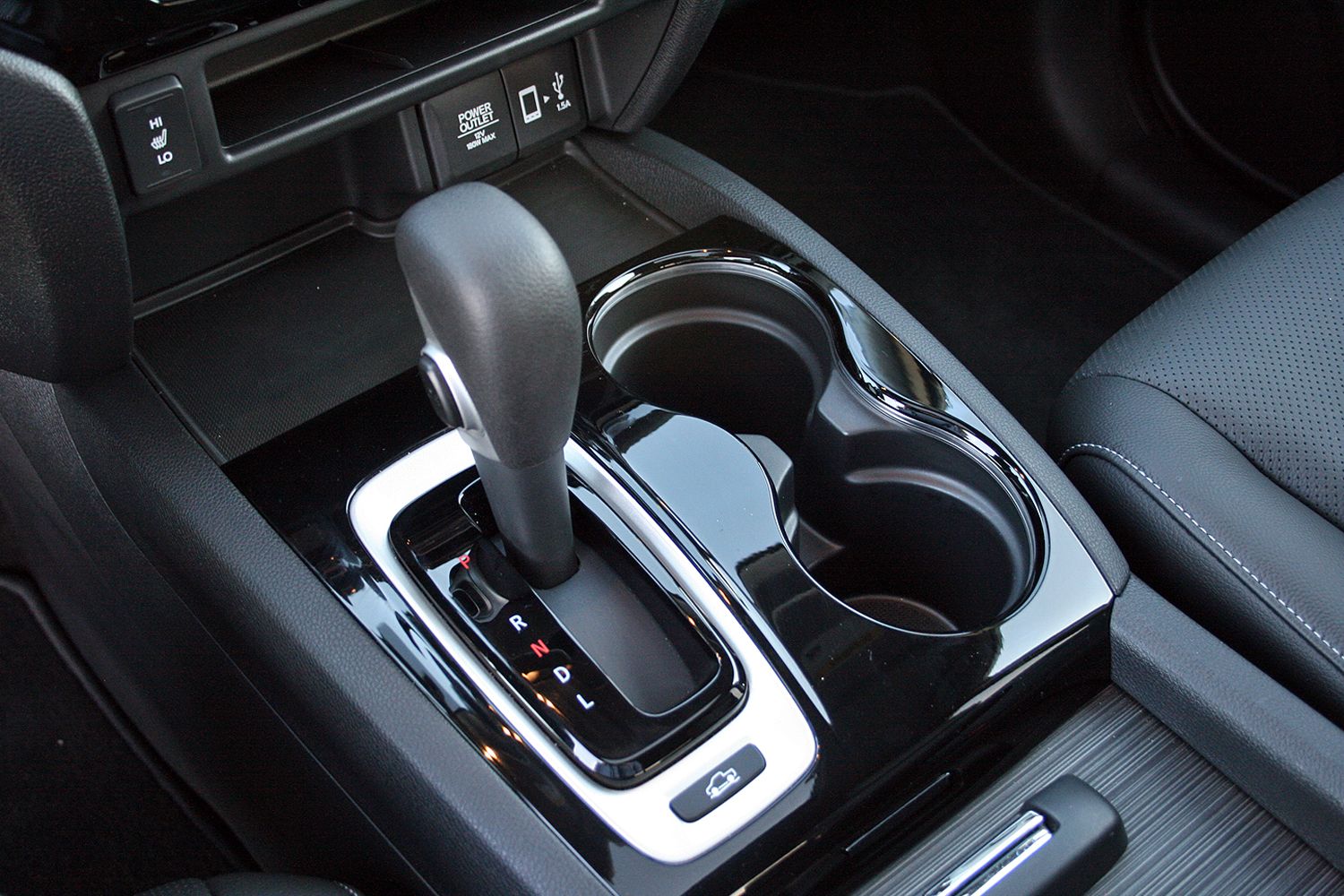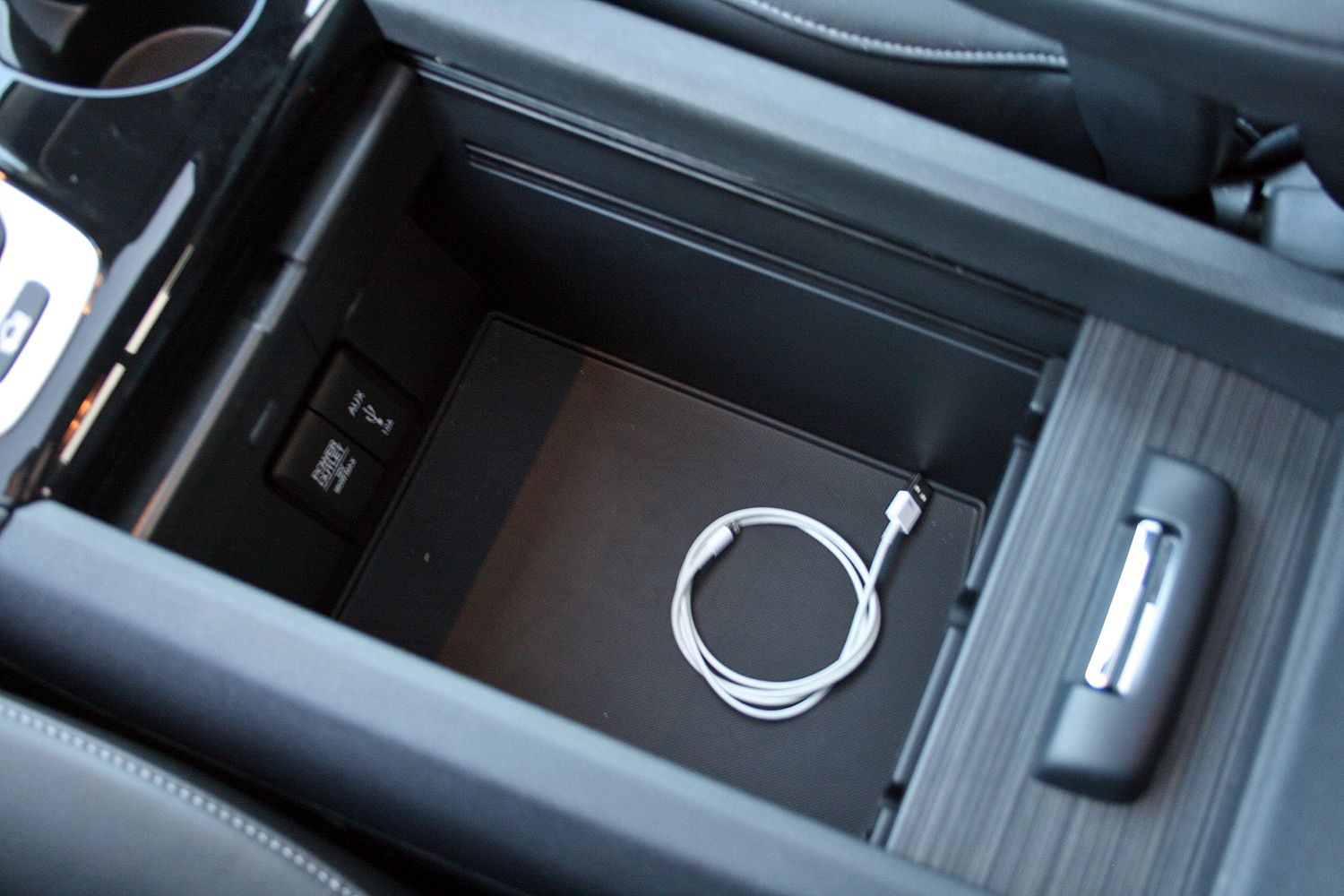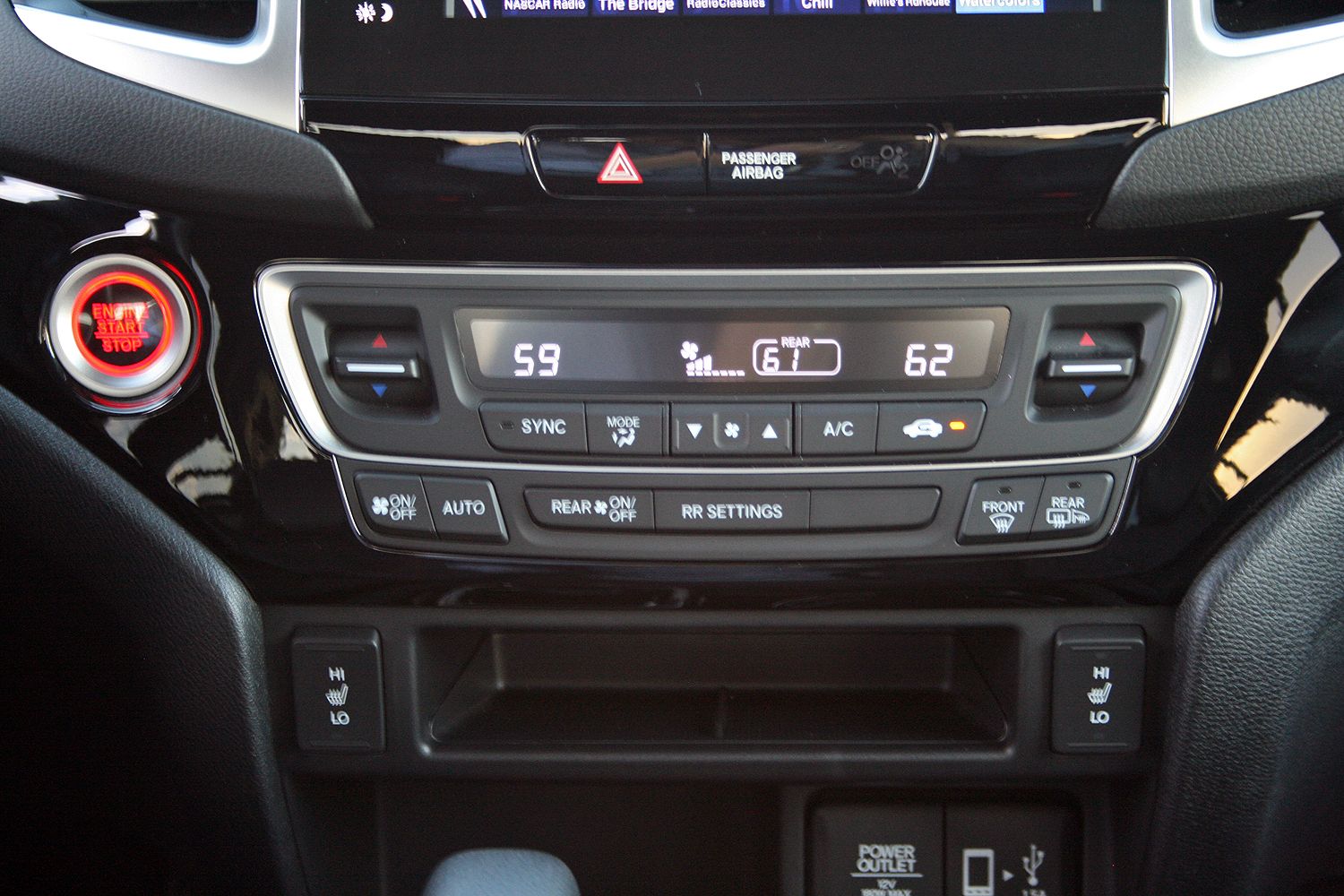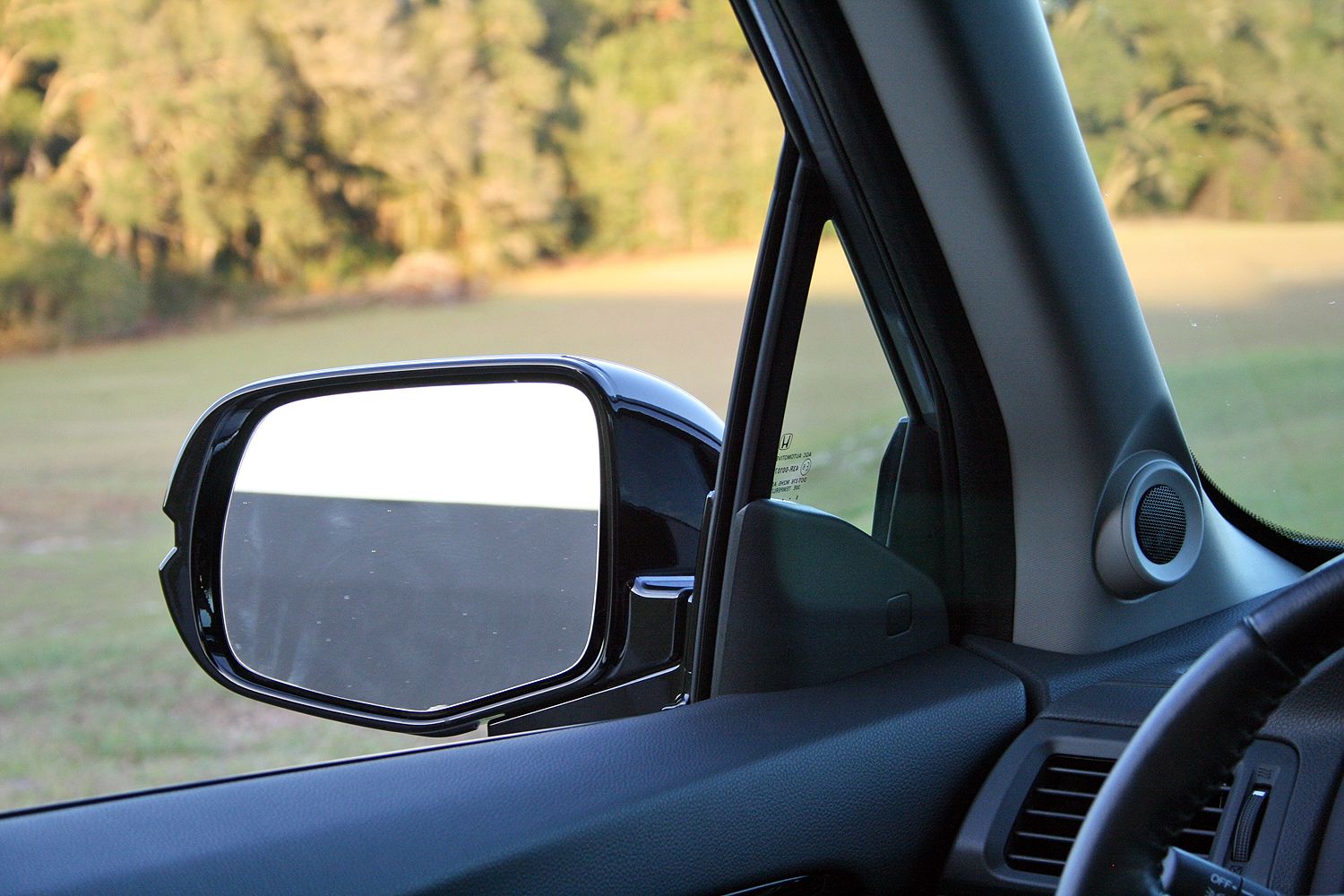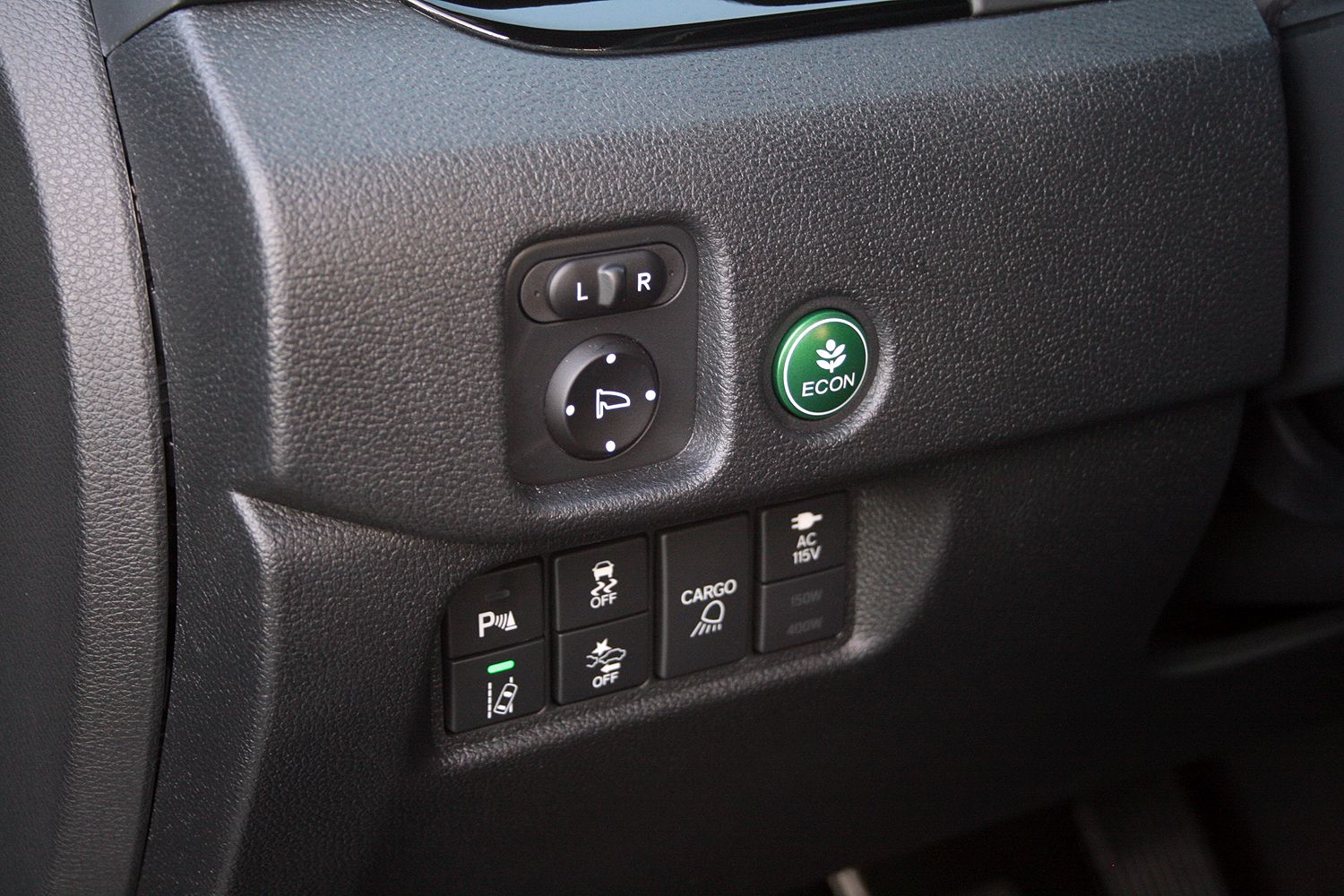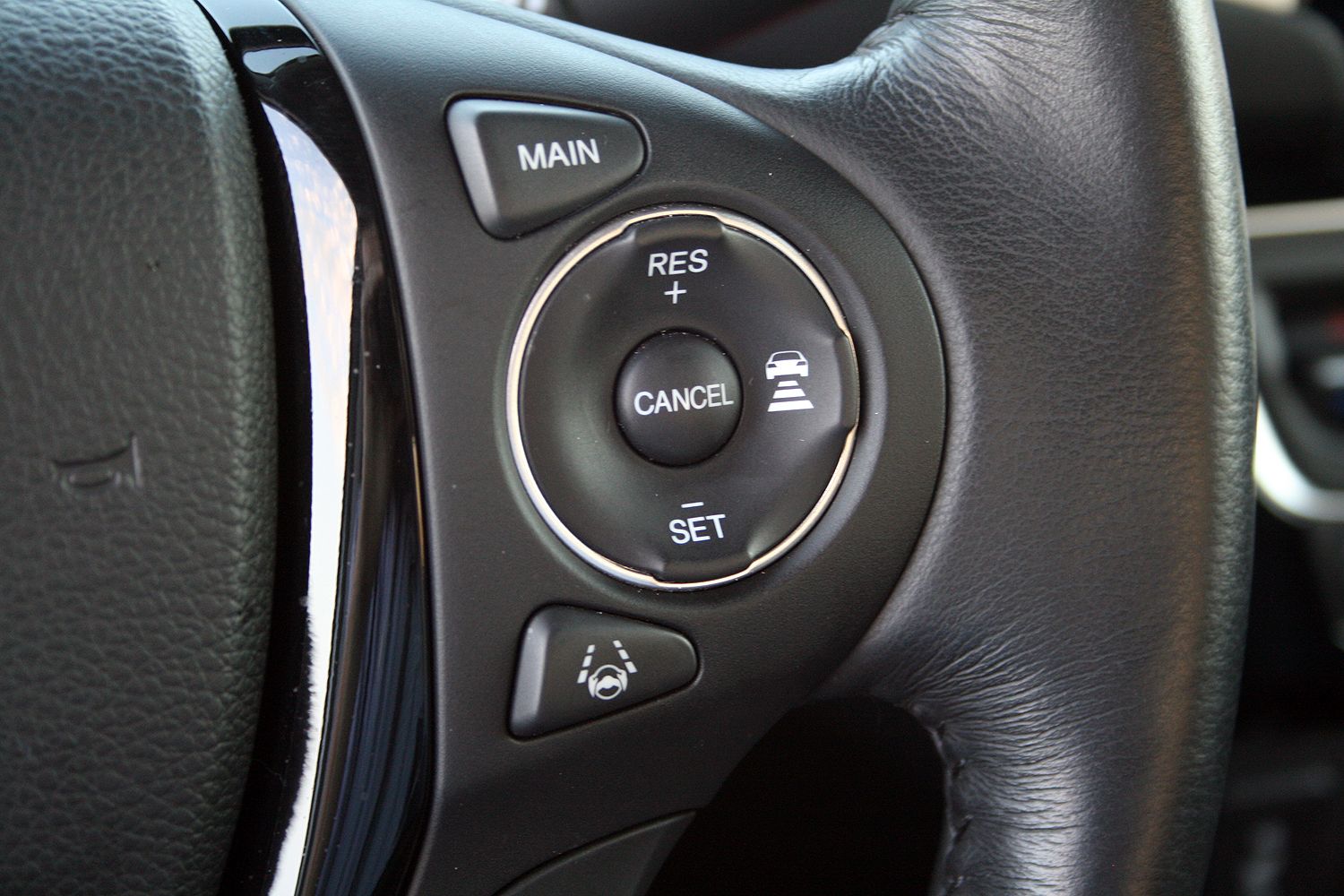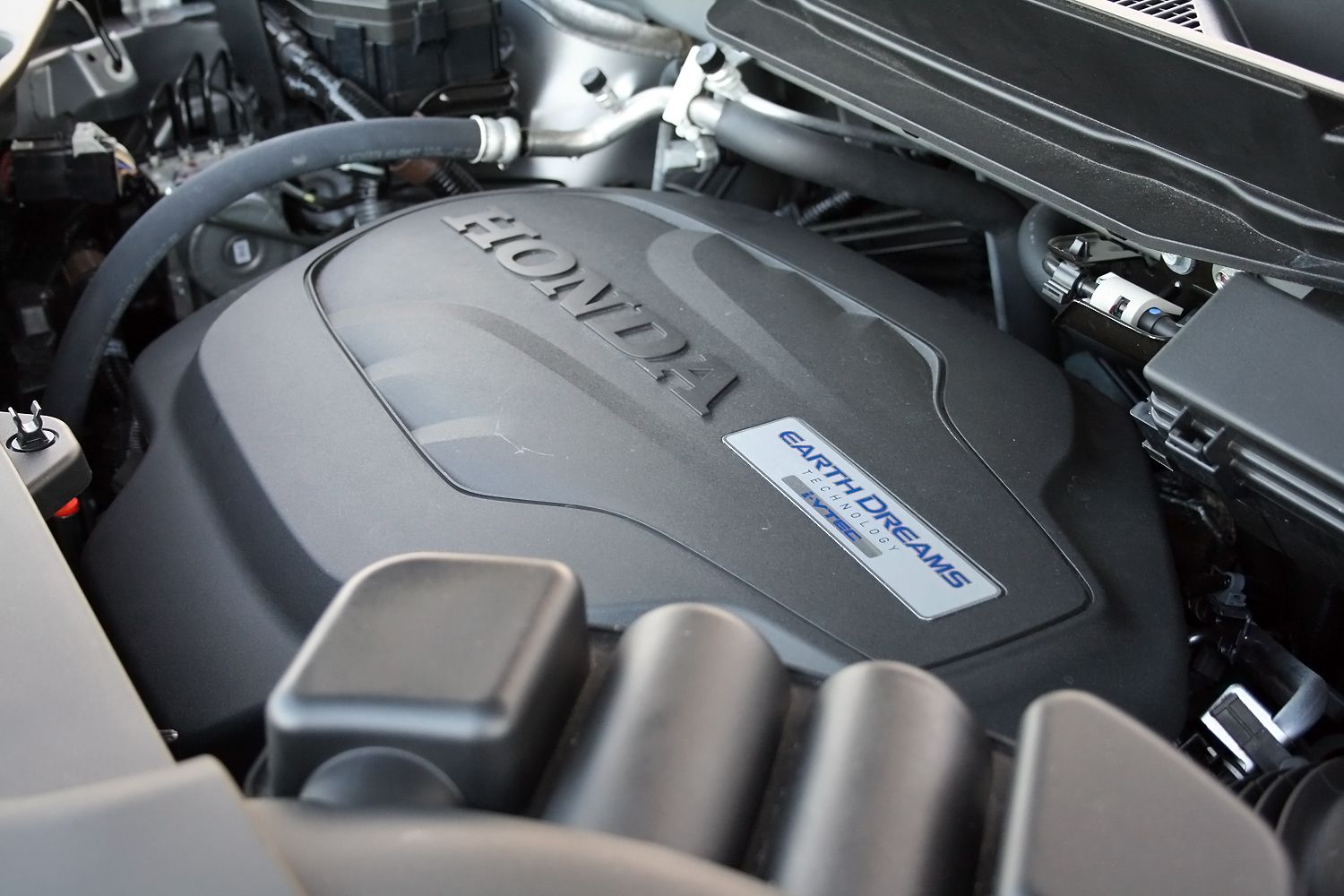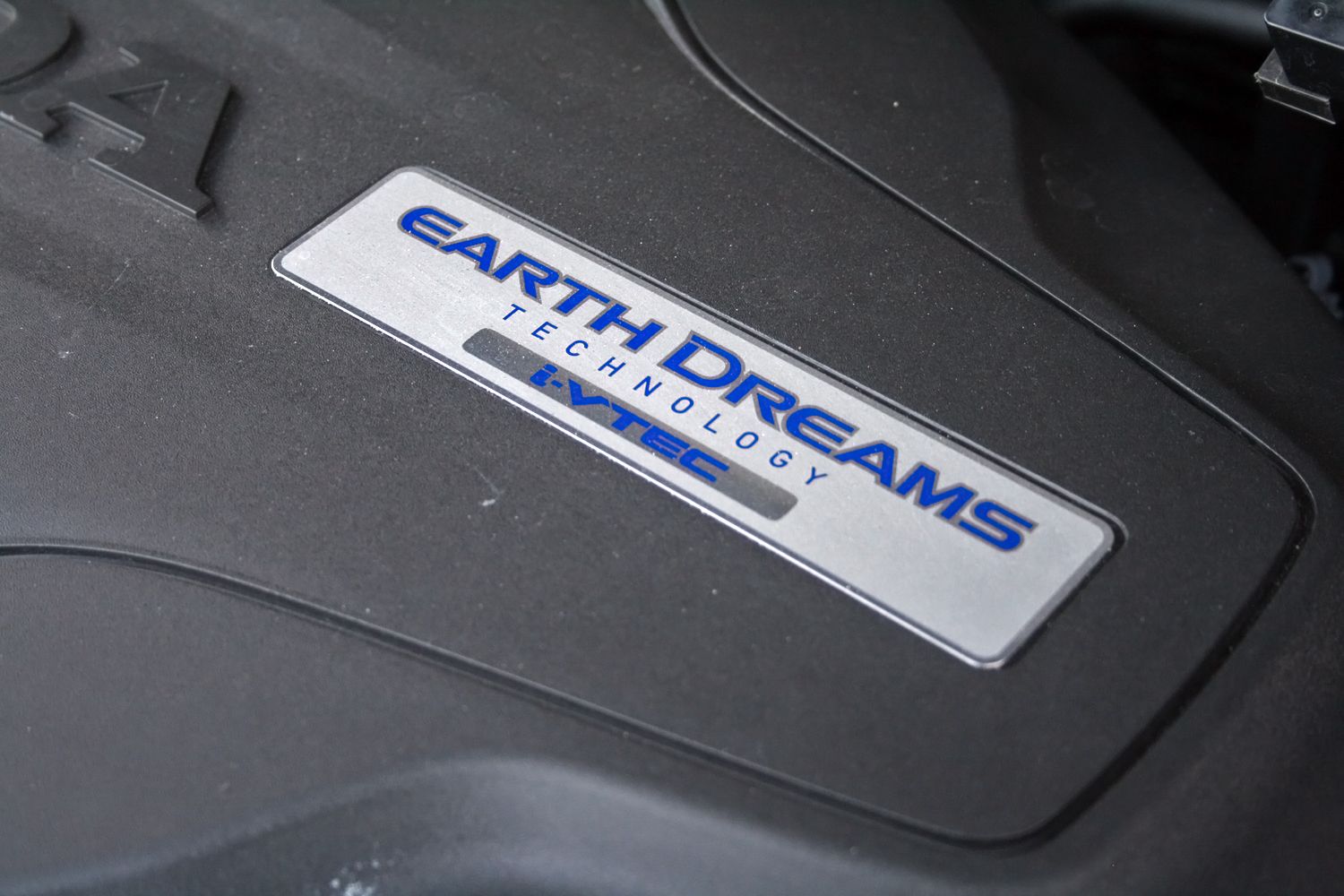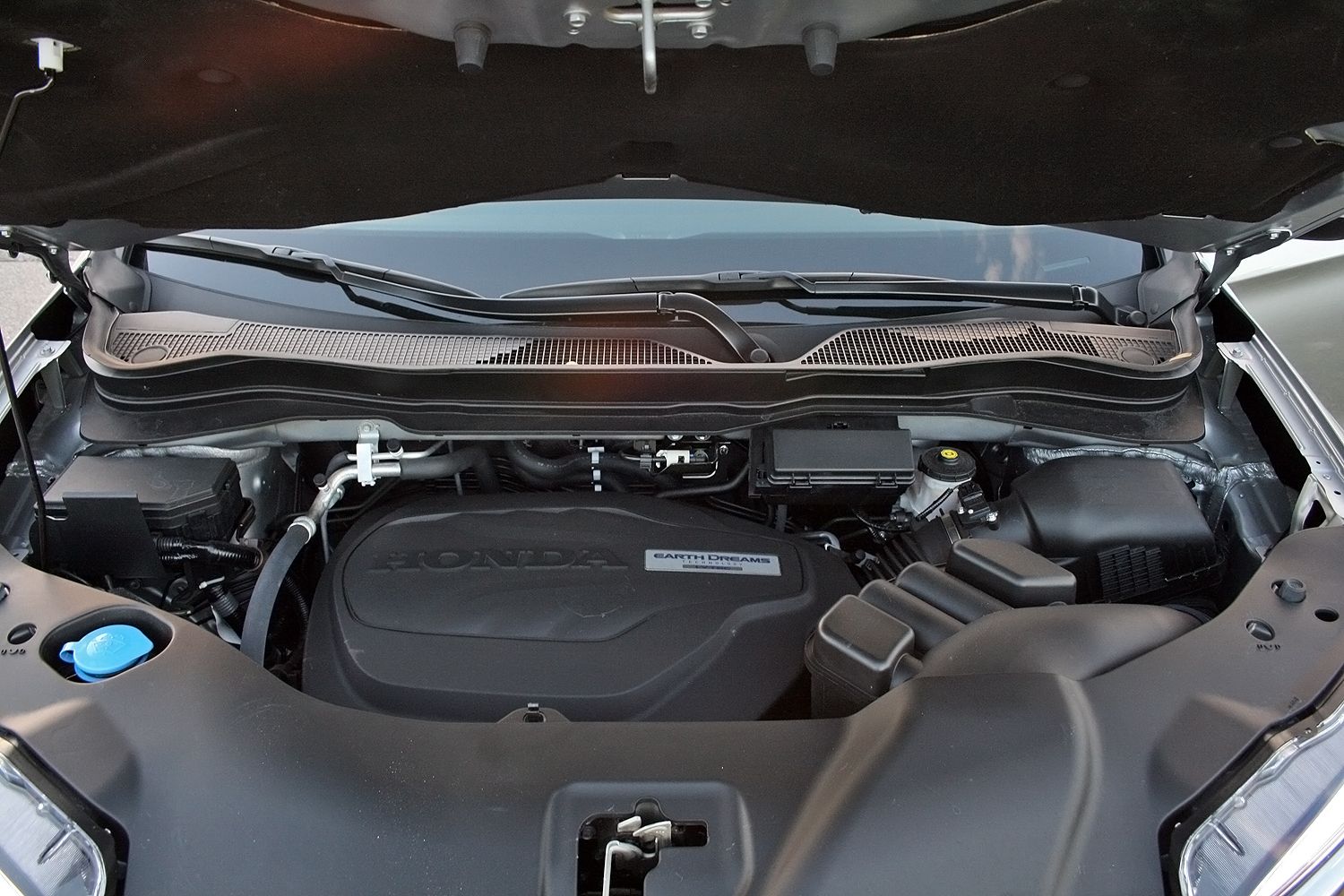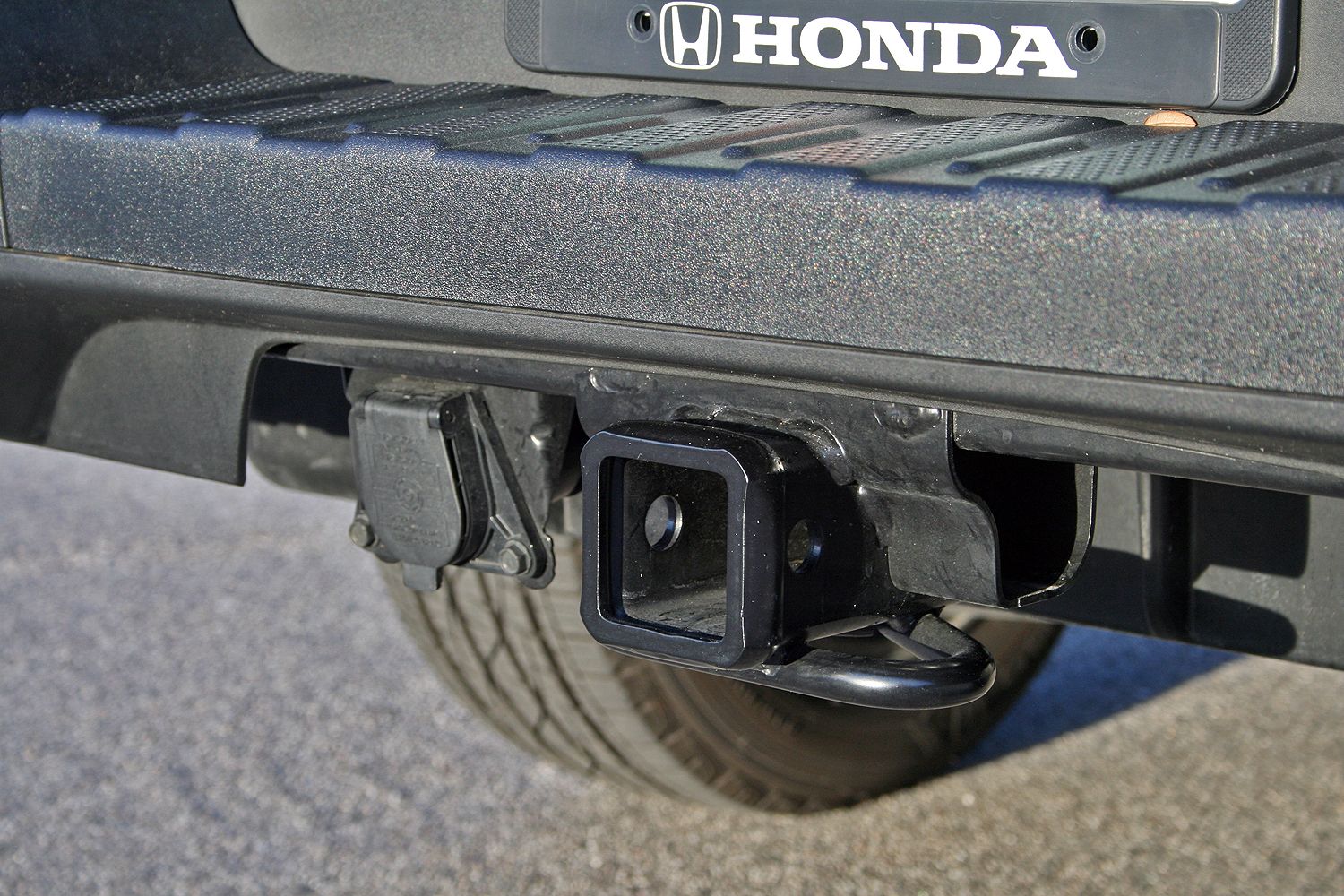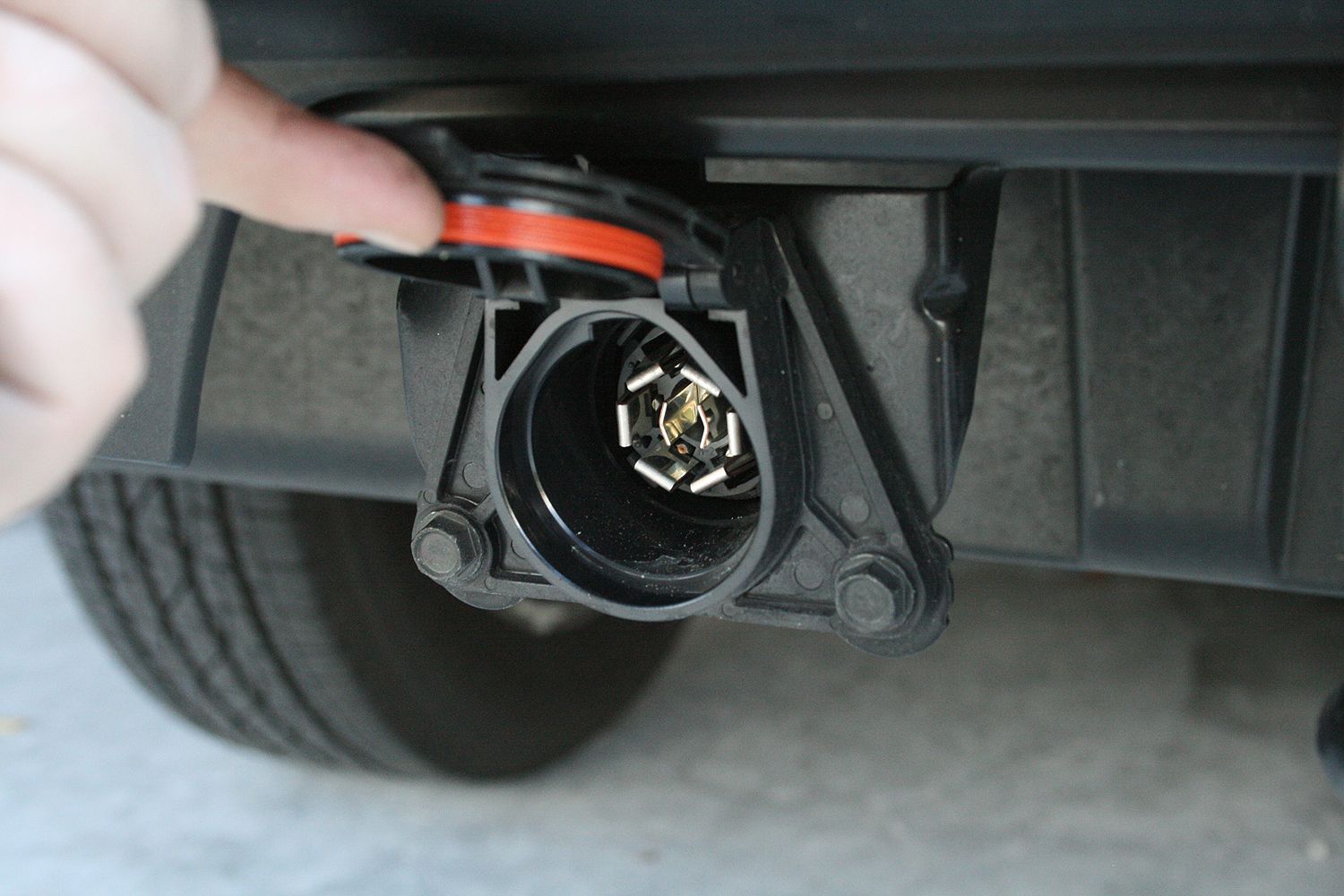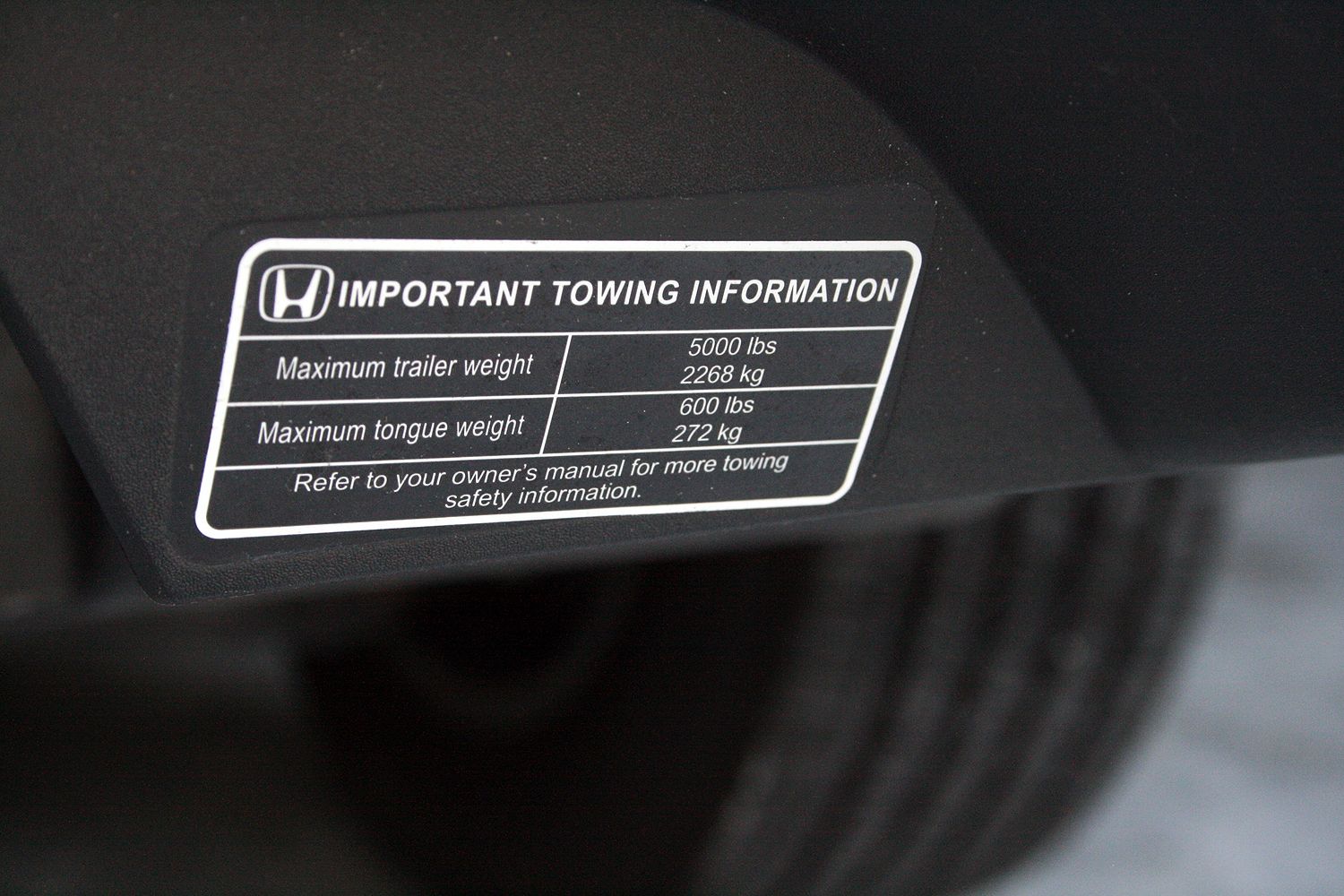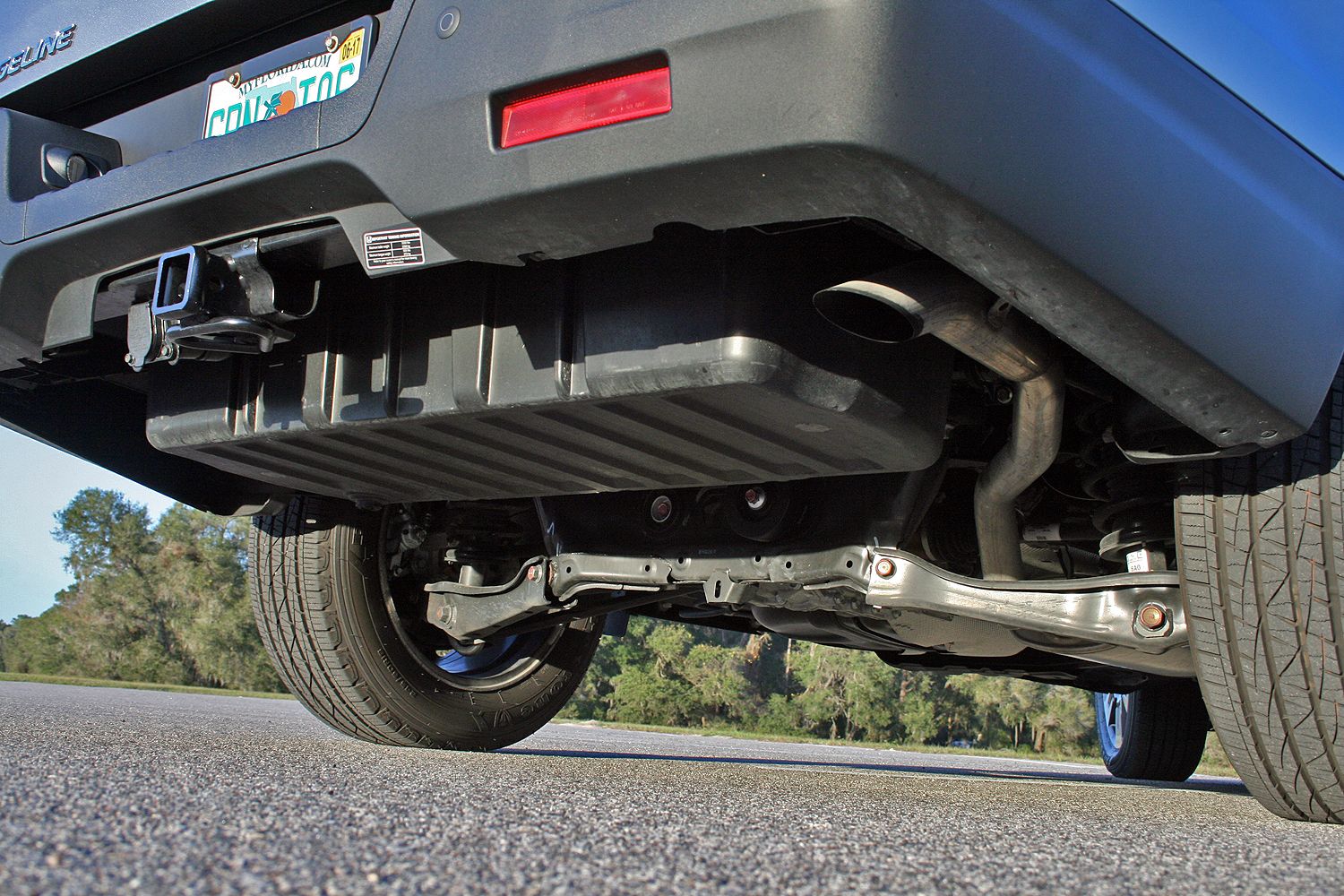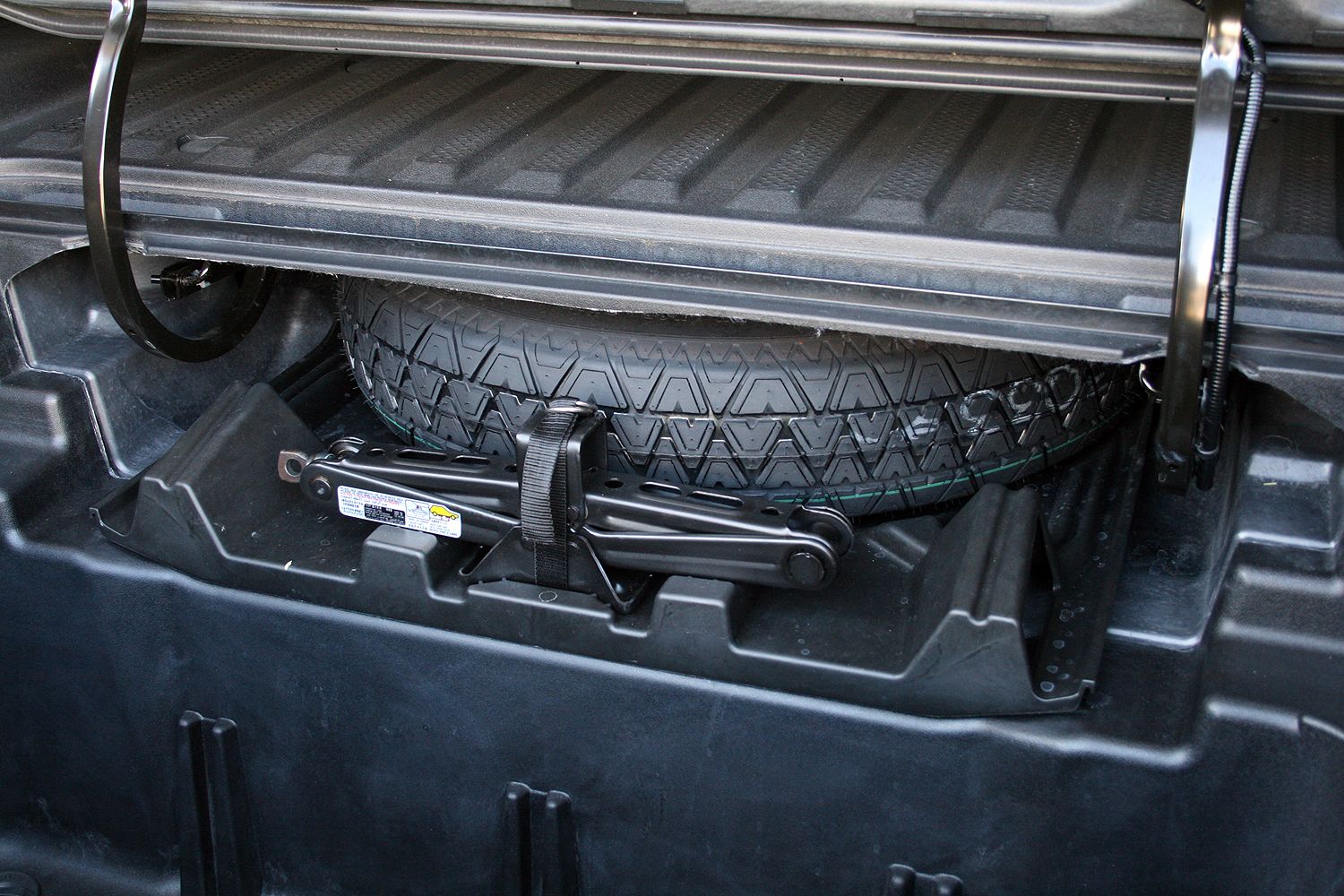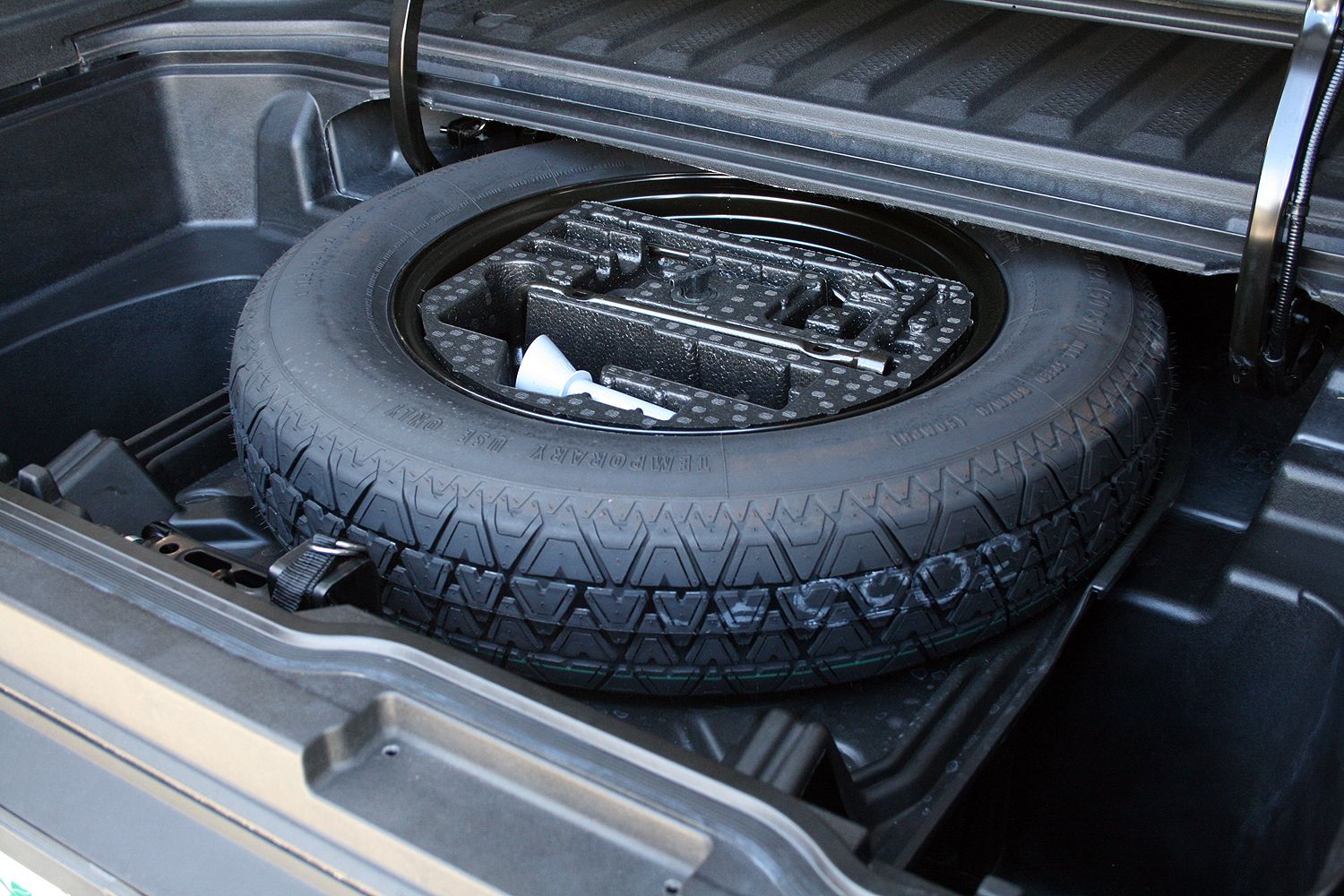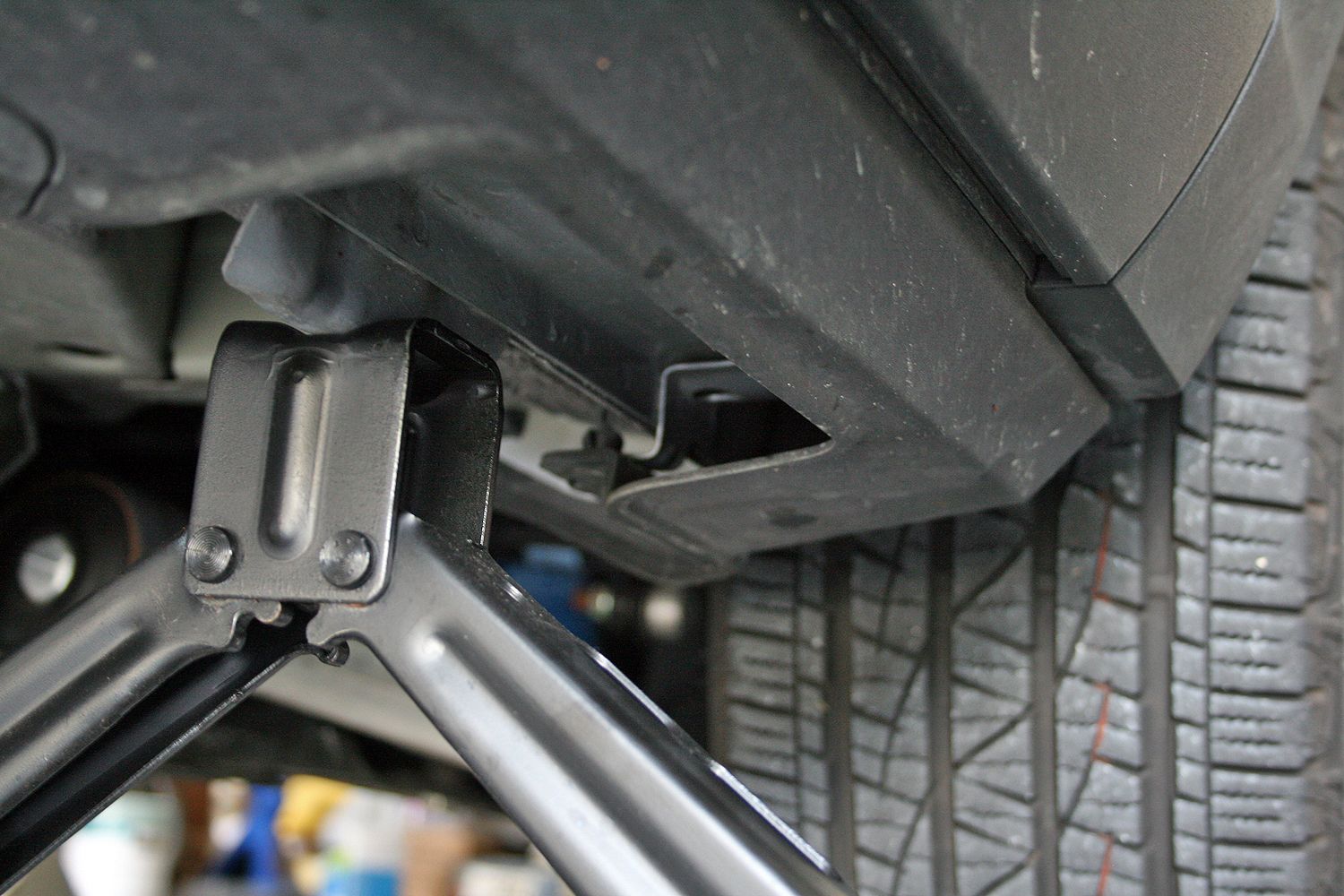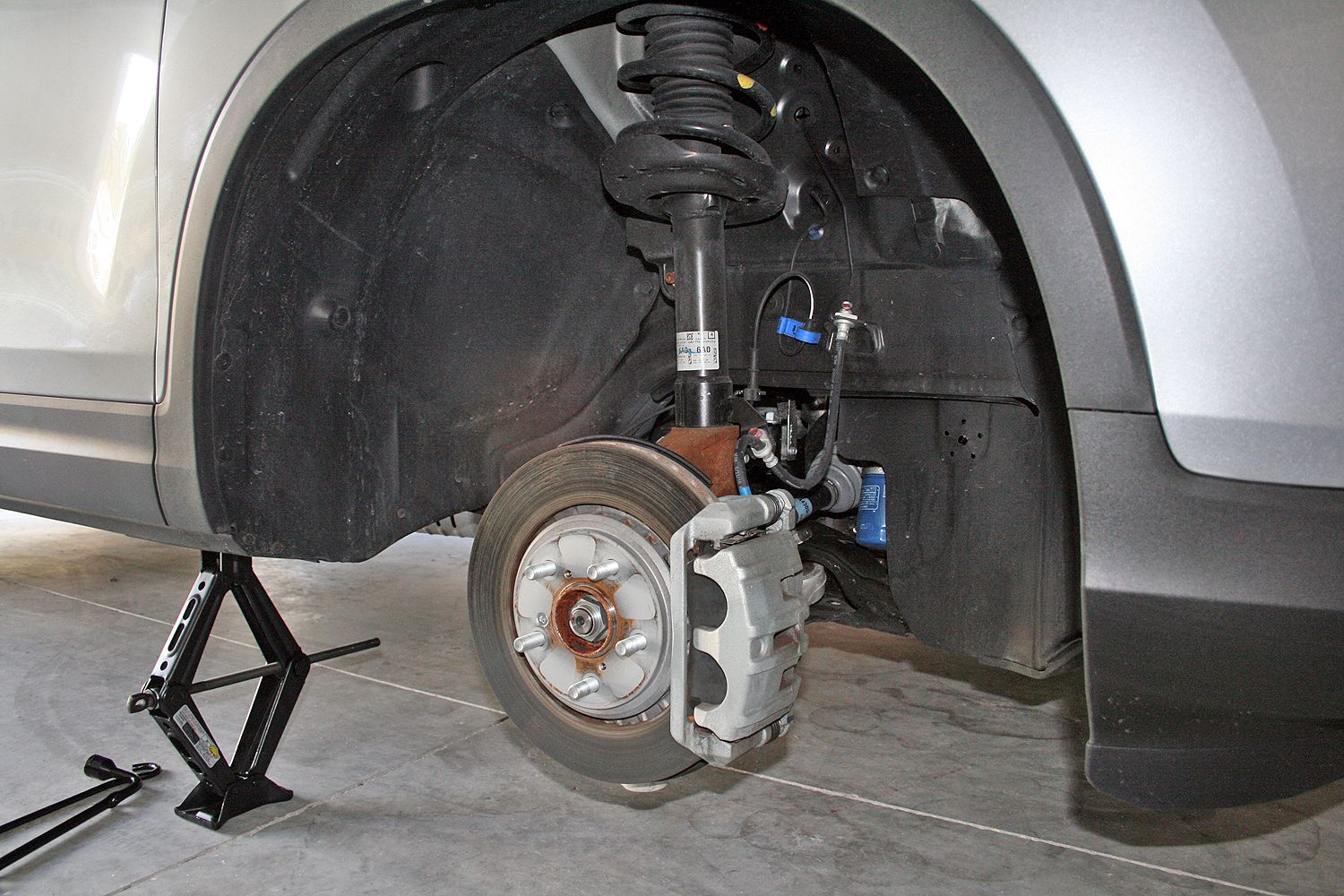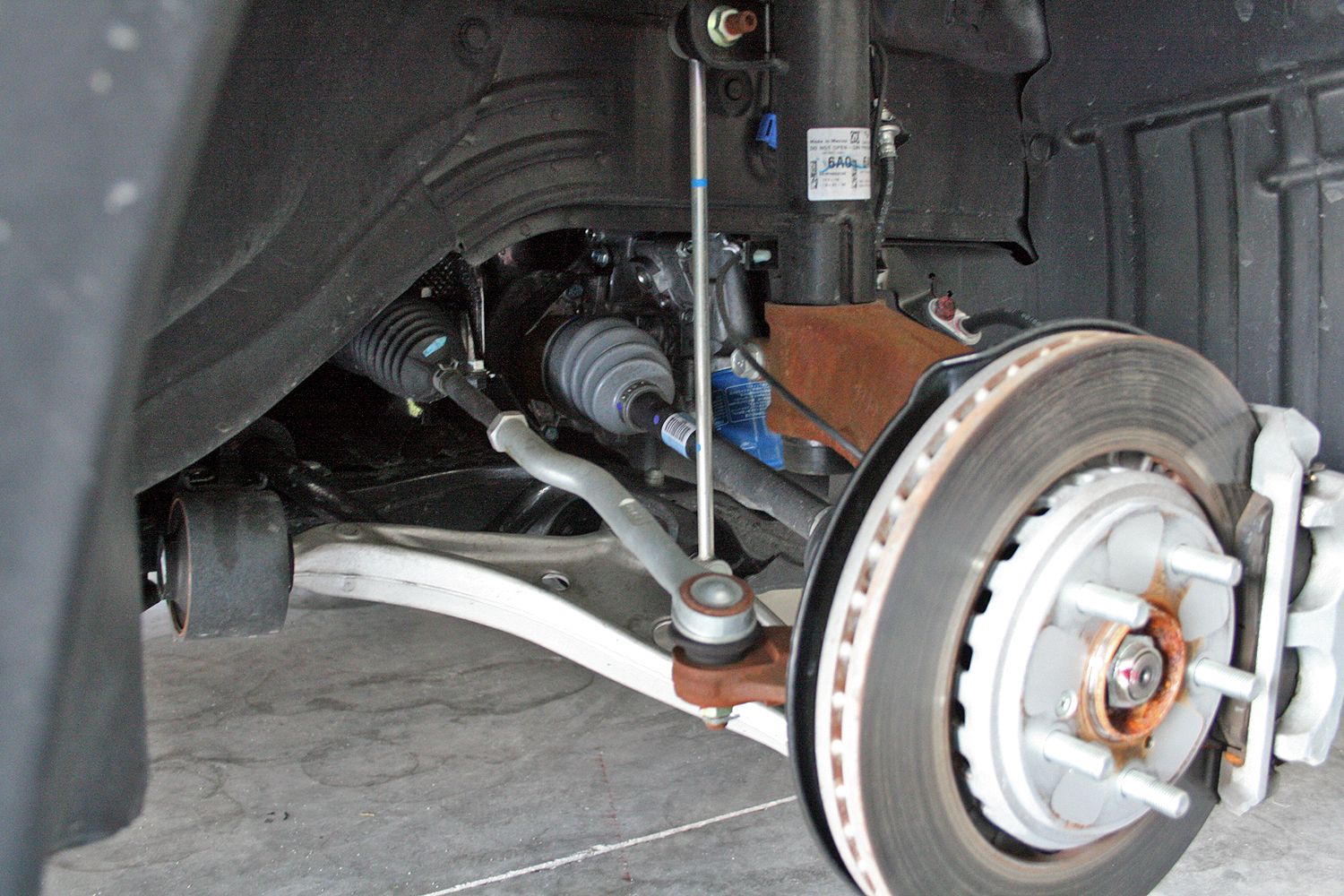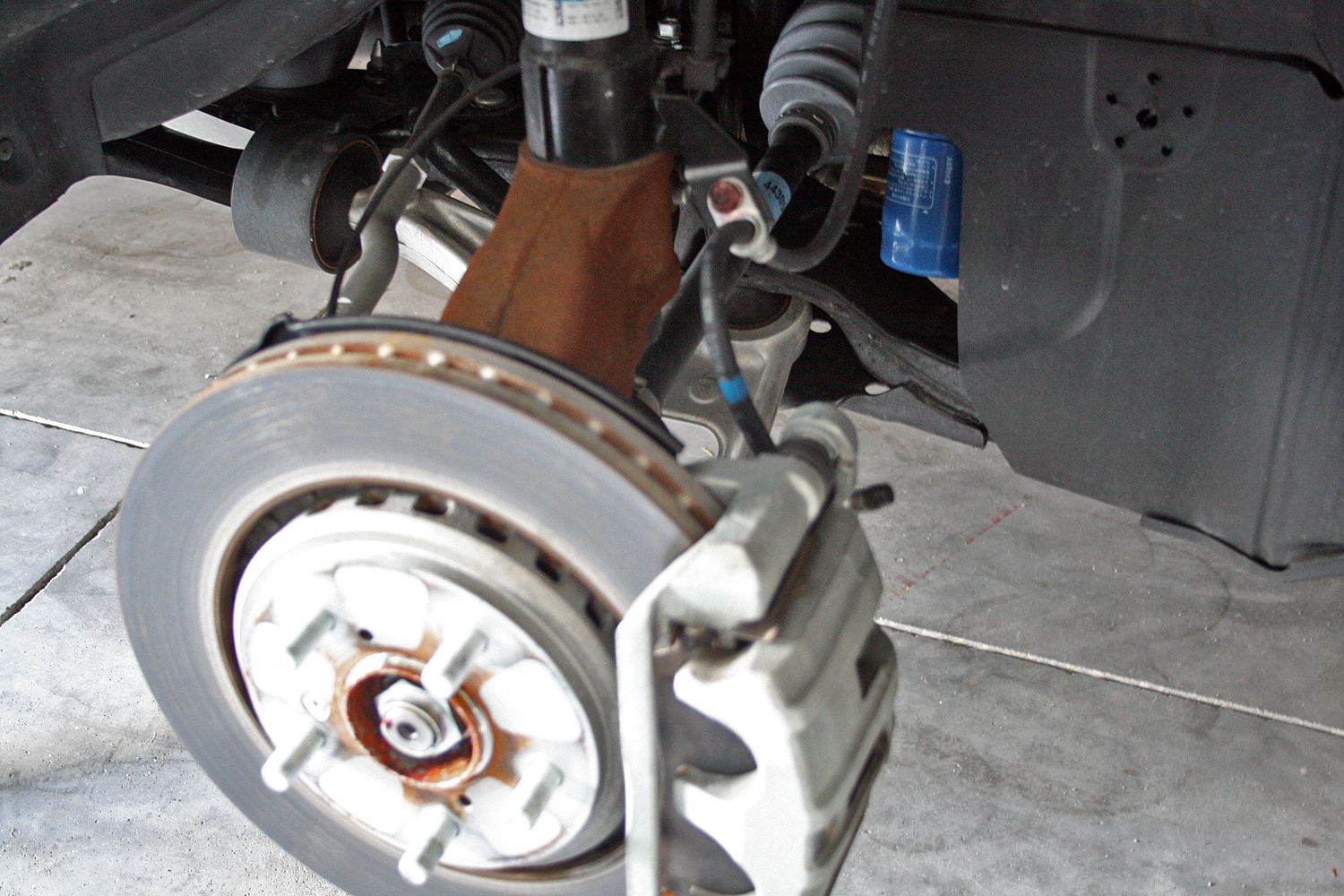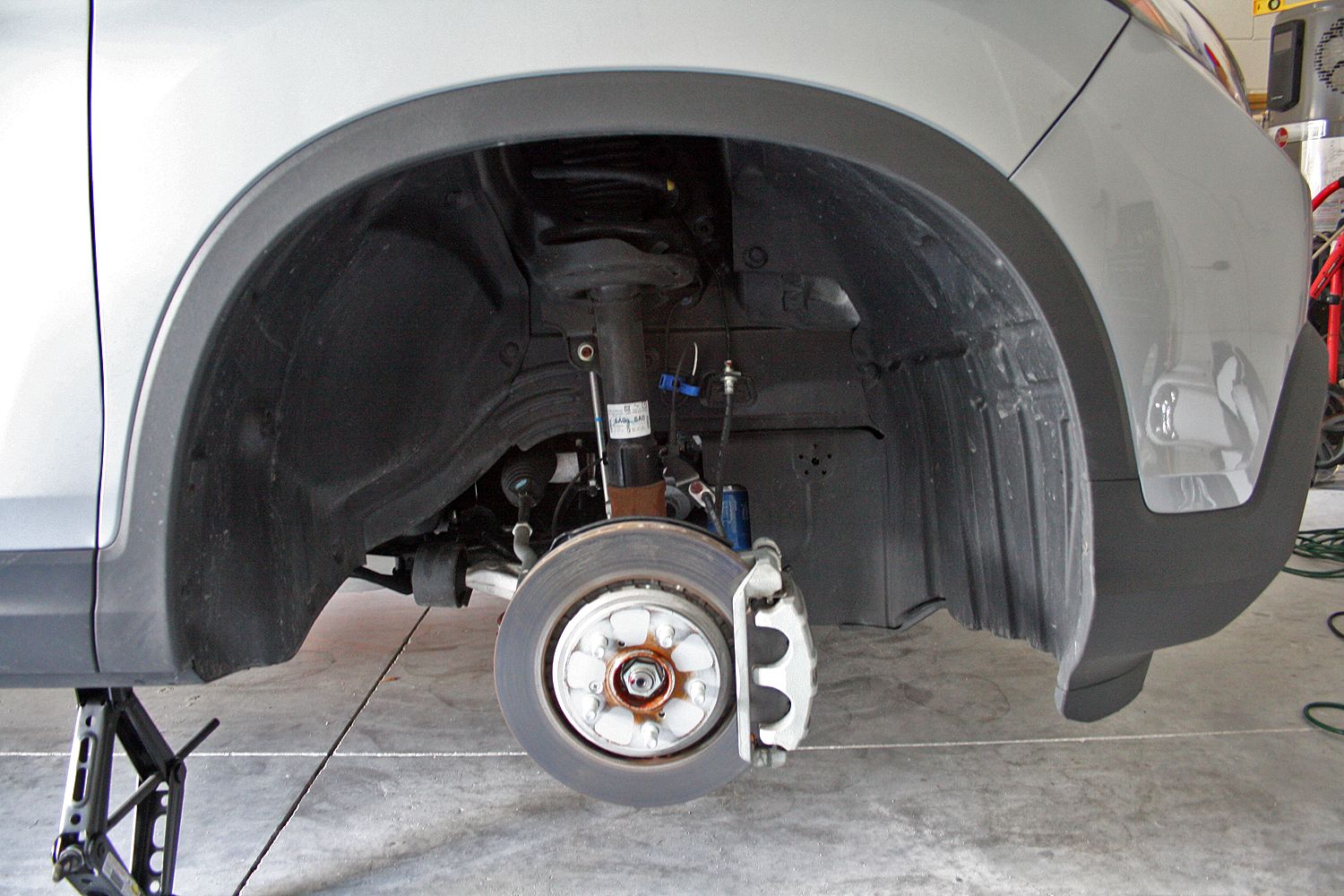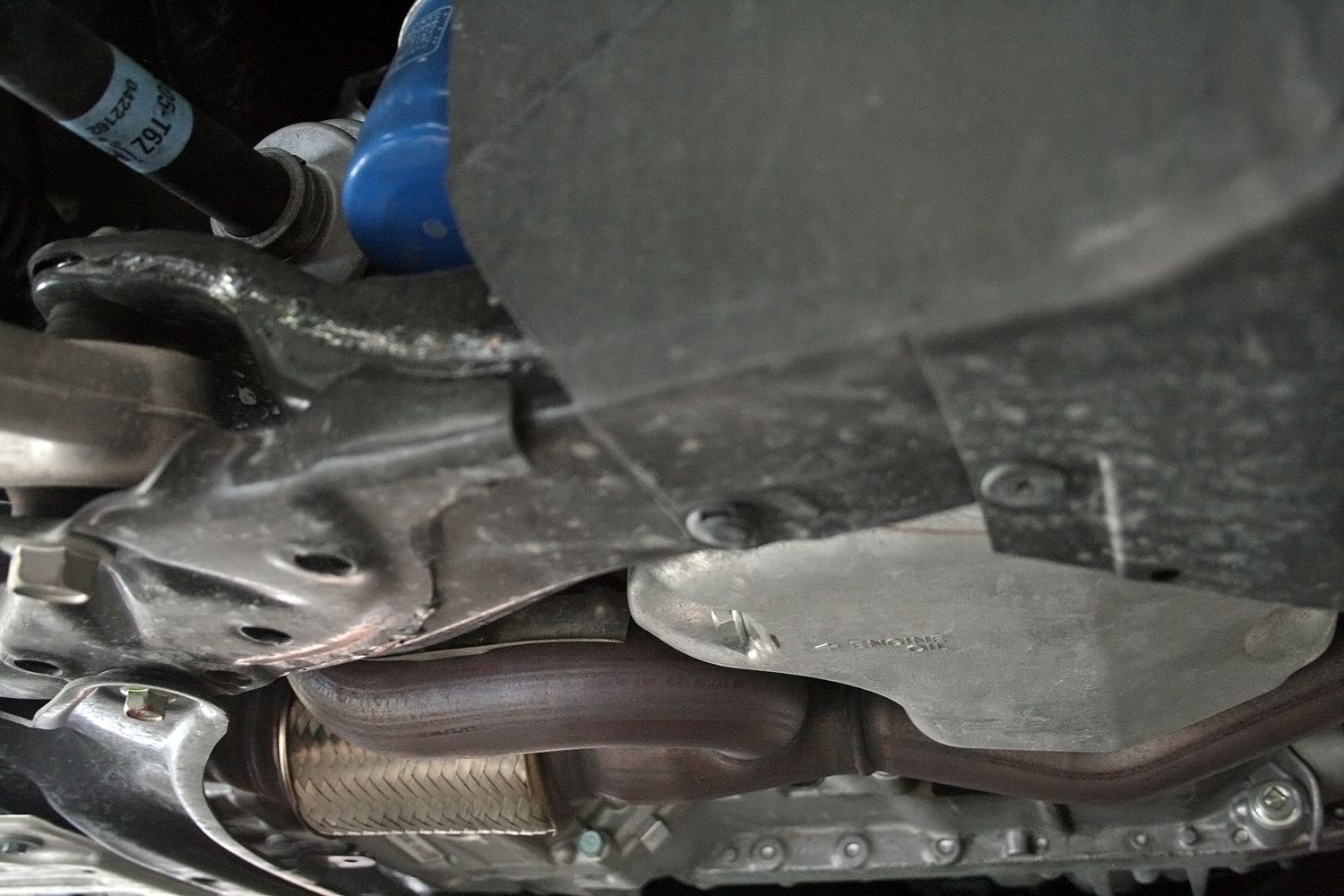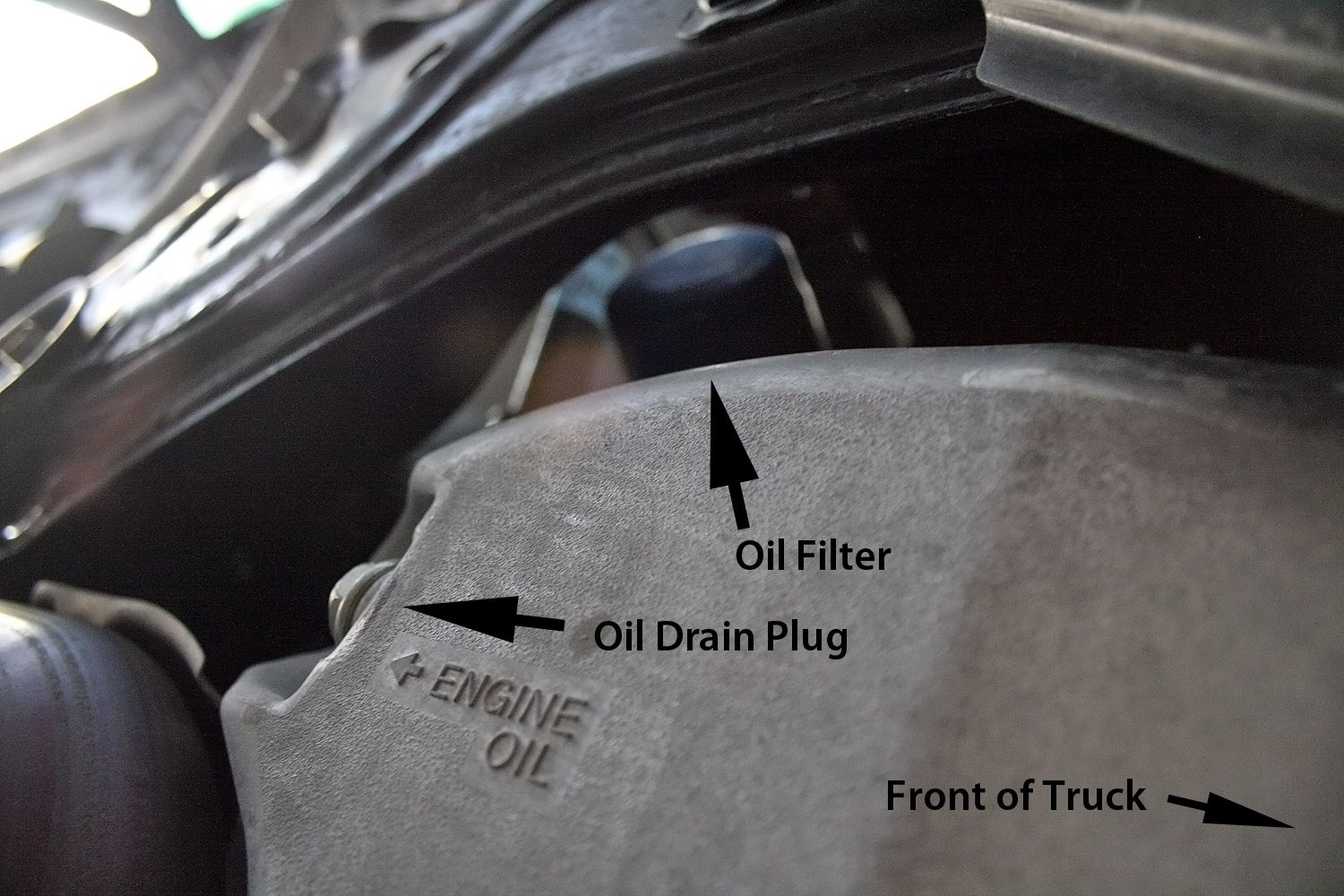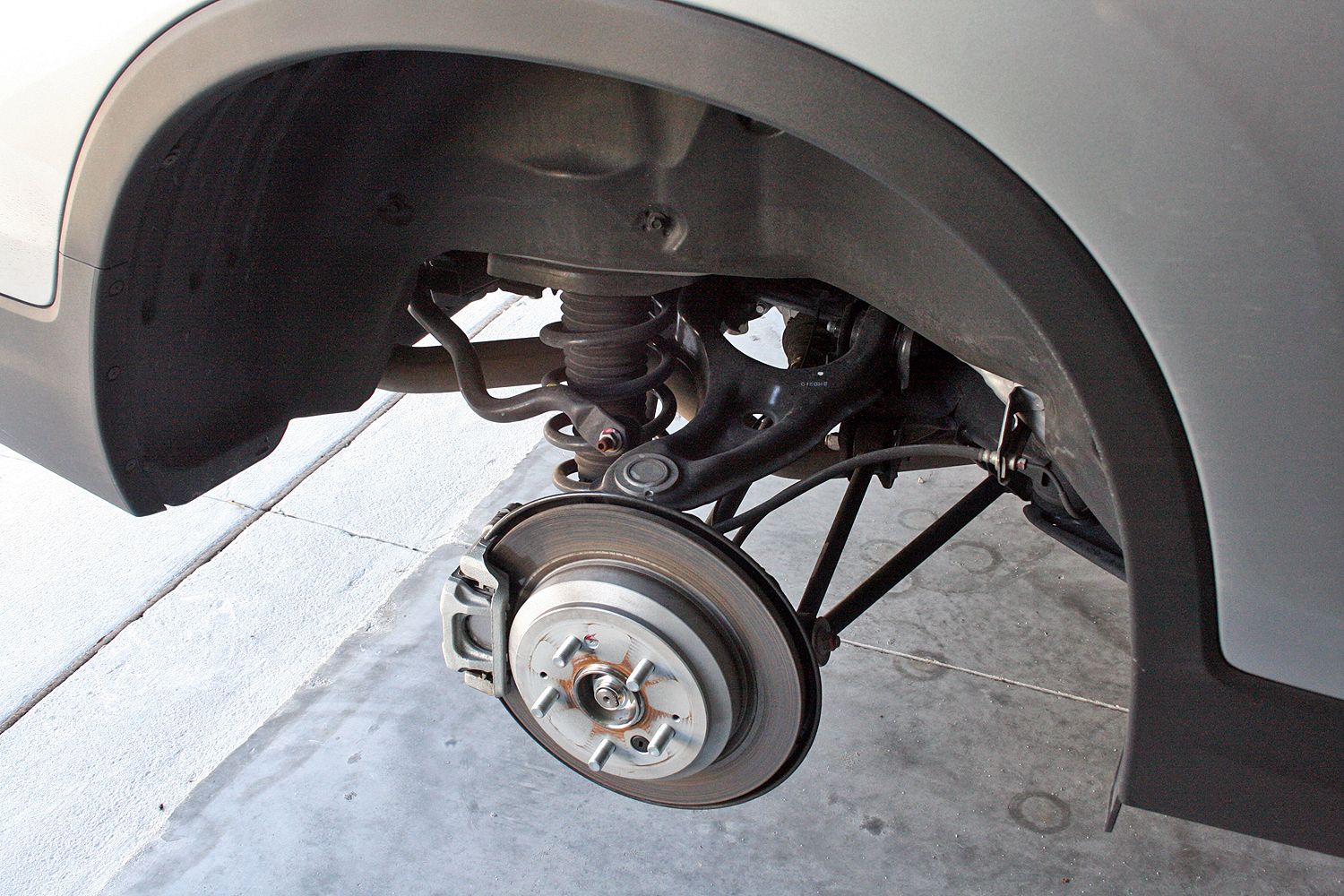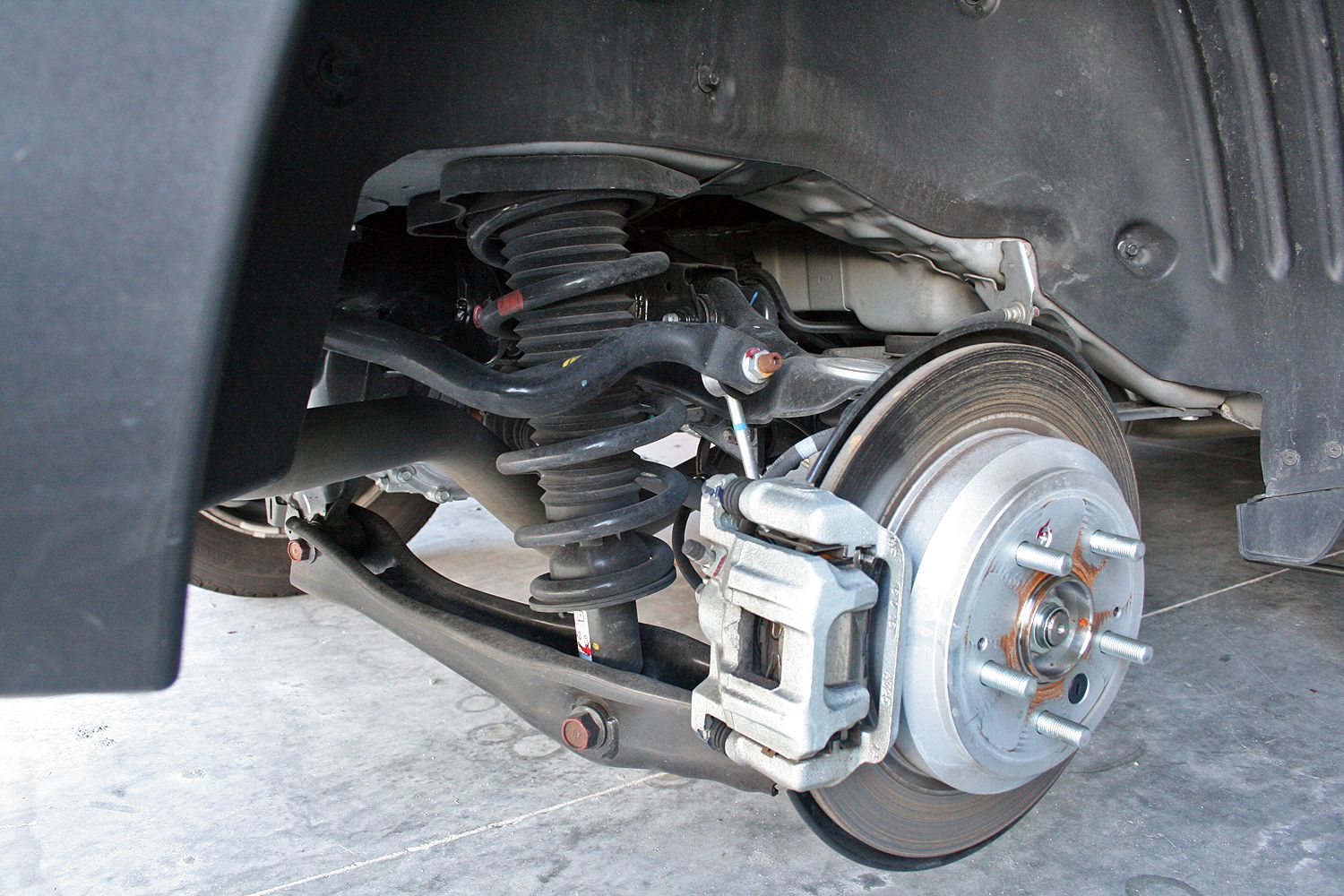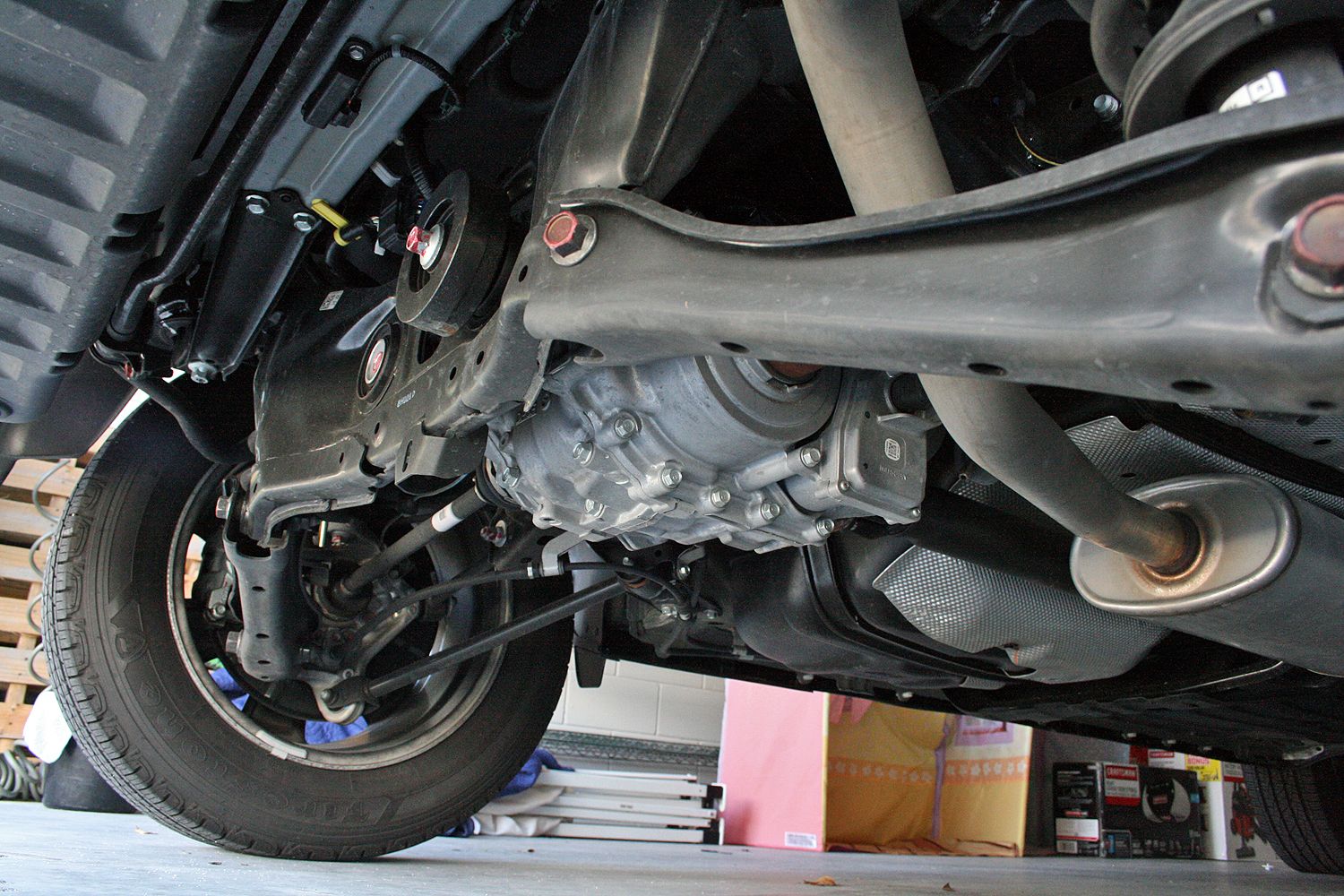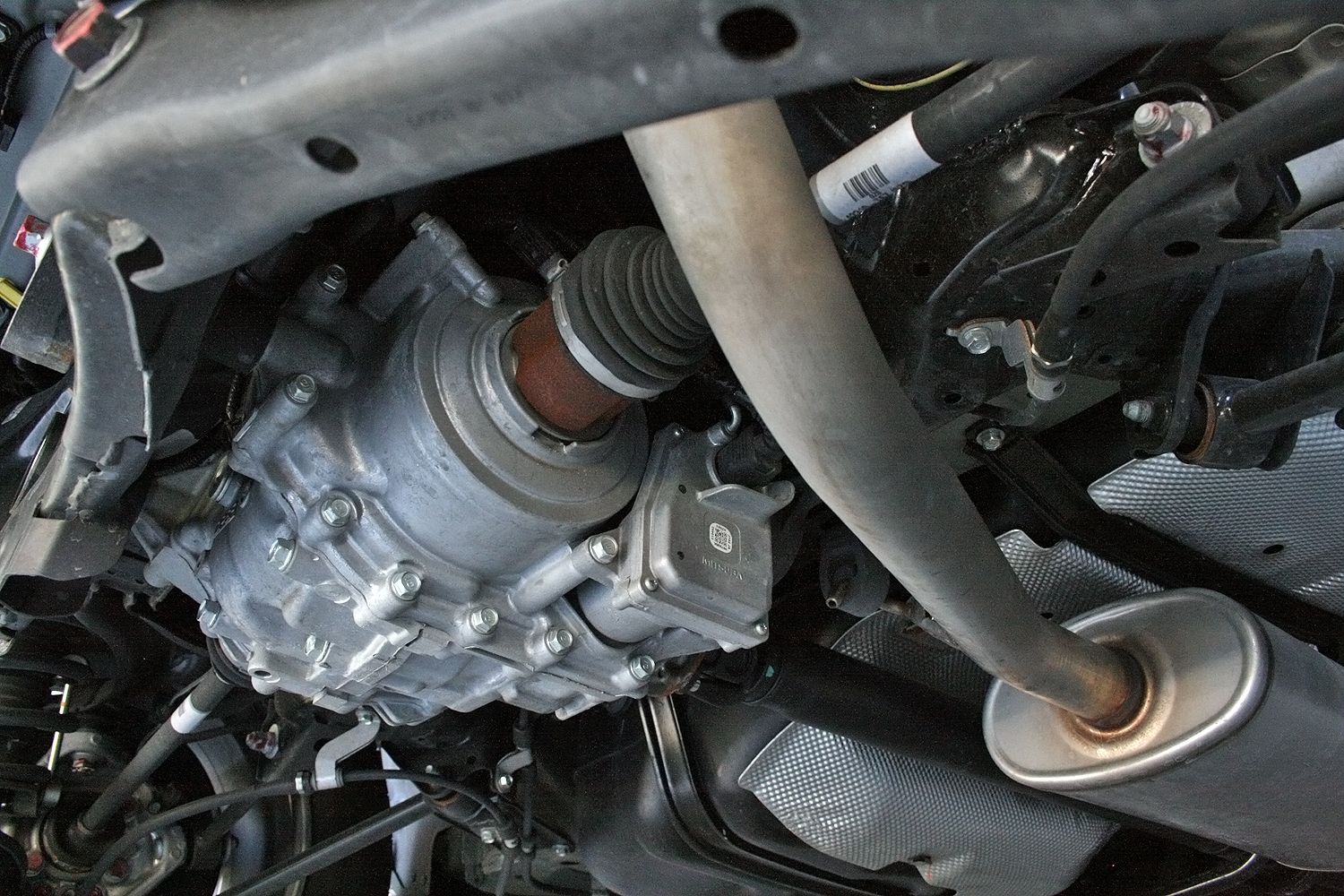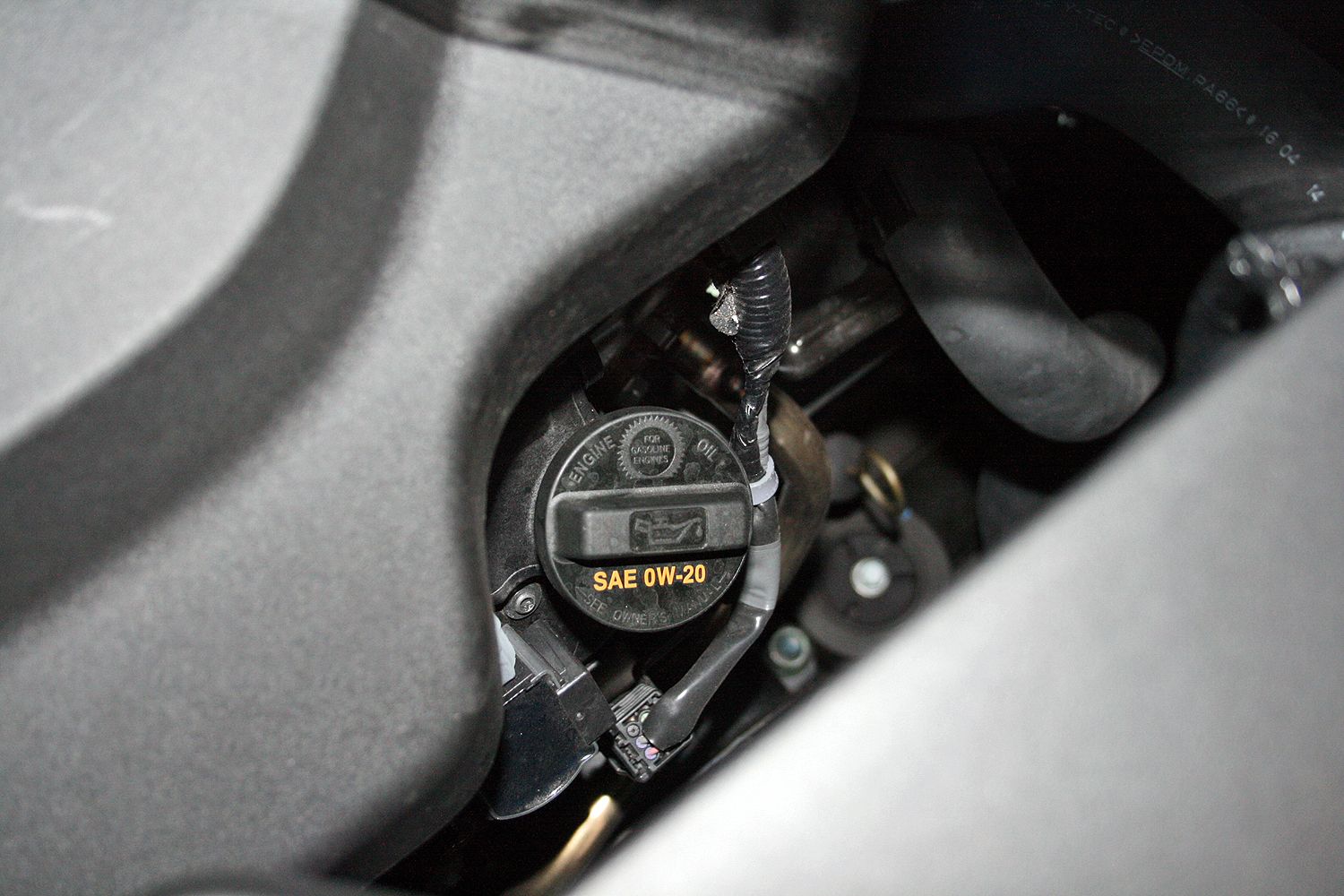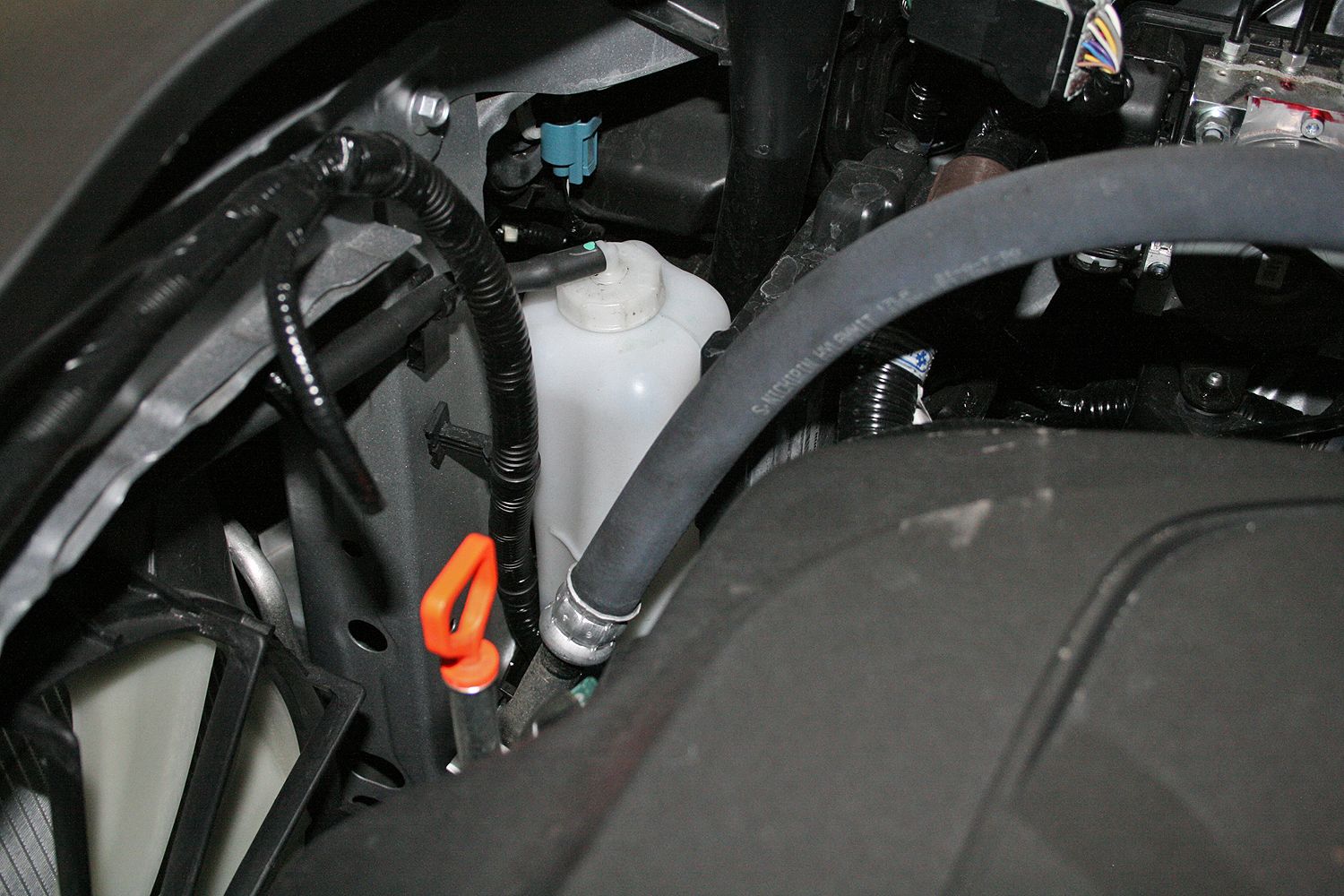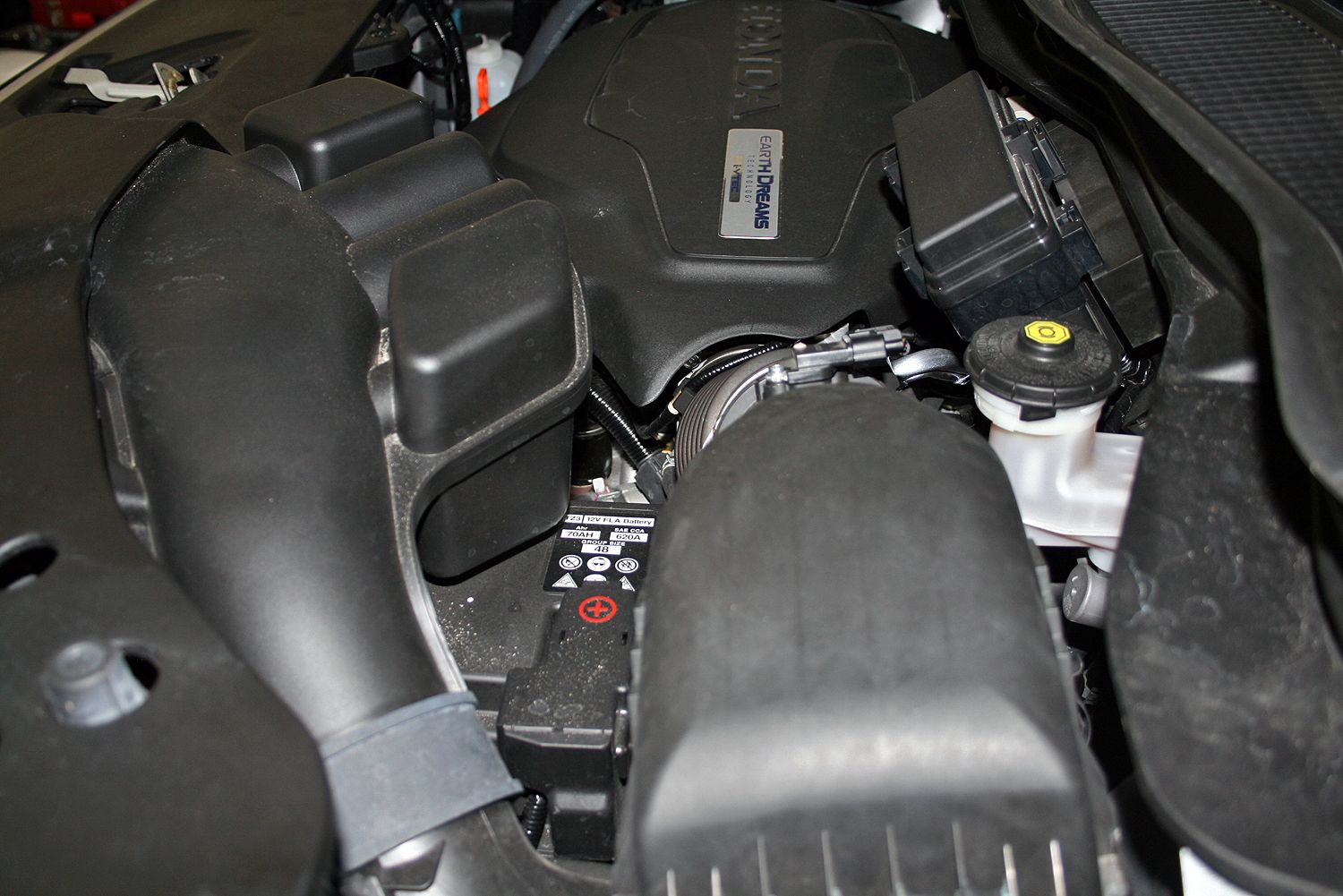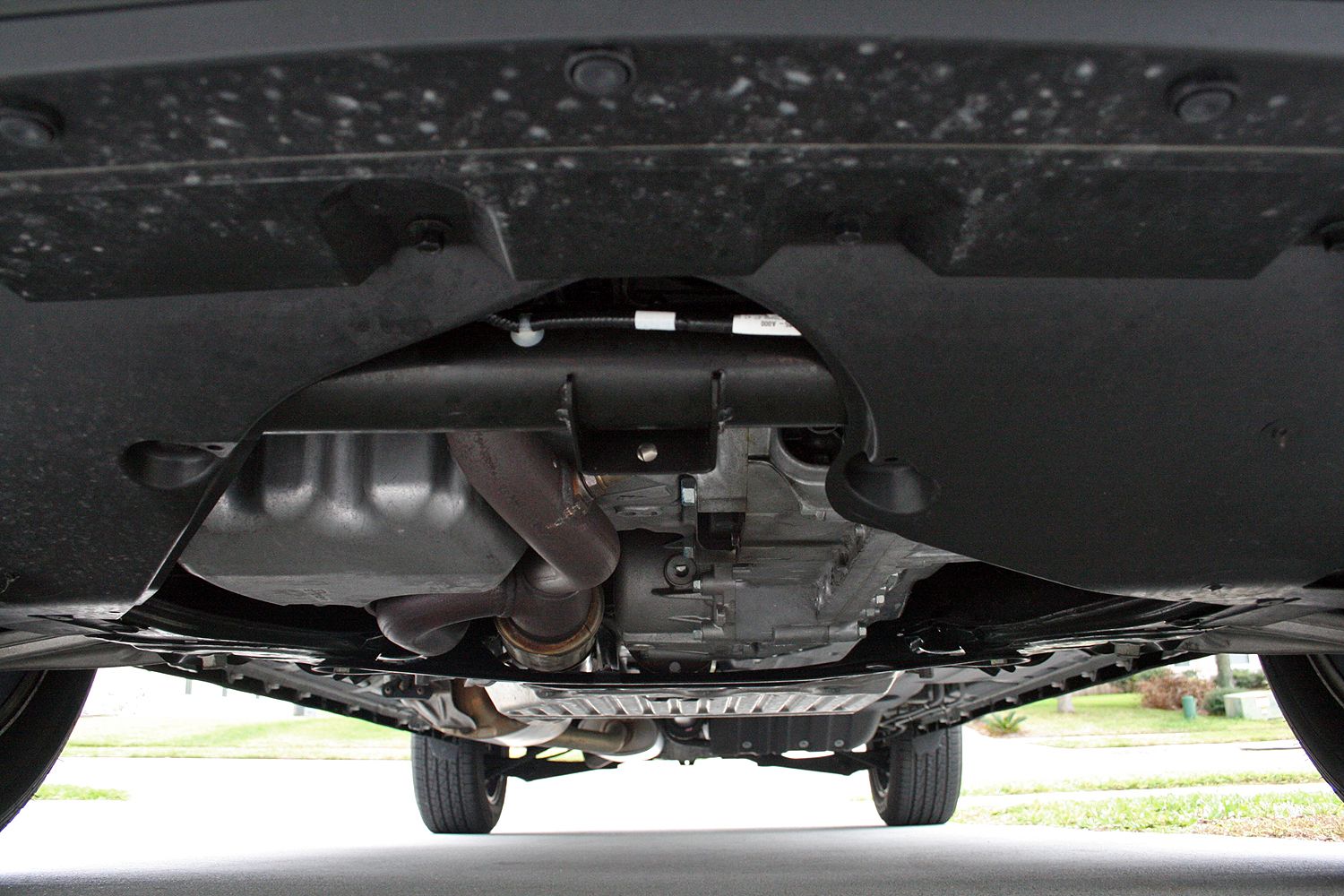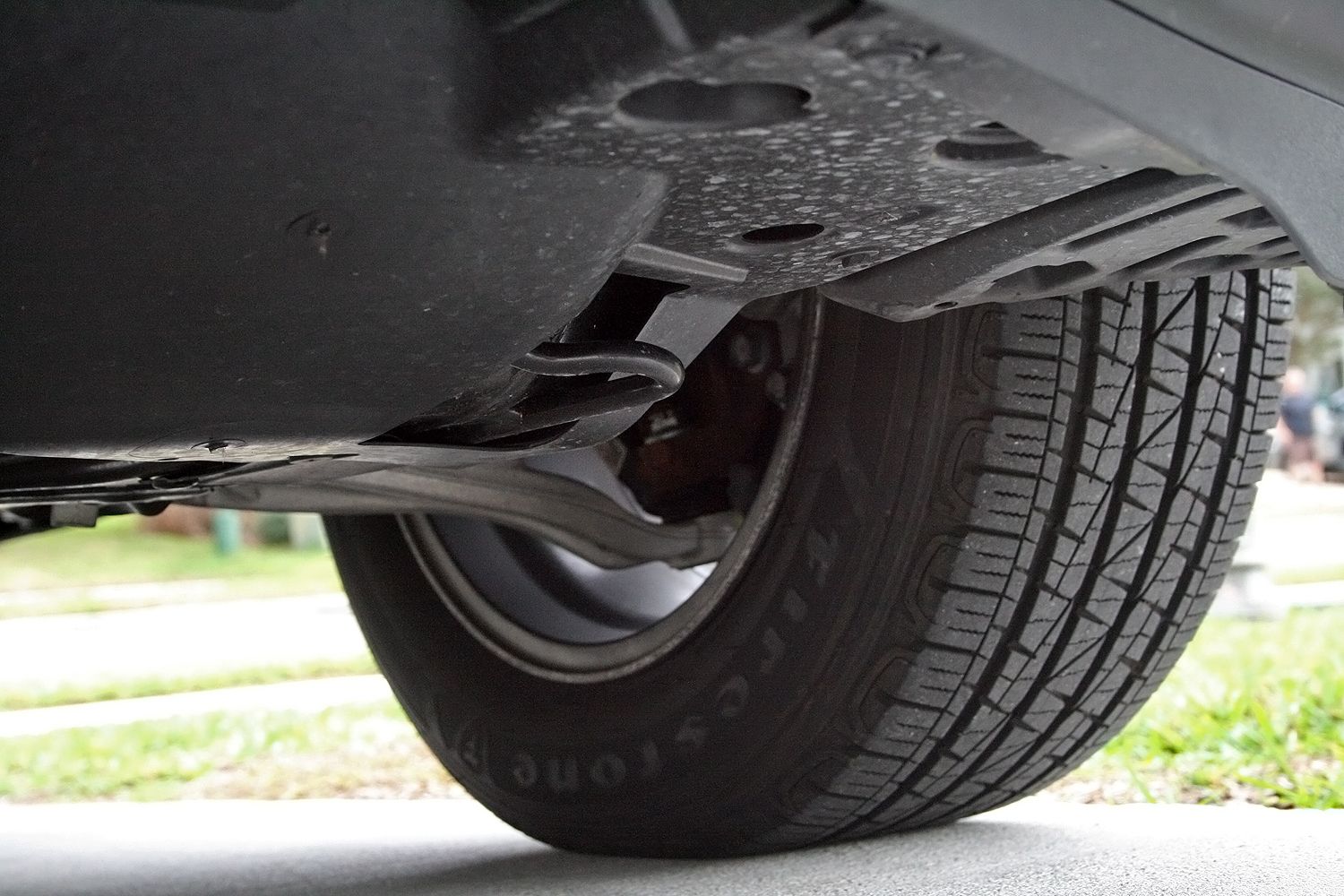The Ridgeline is completely new for 2017 and ushers in the second generation for Honda’s unibody pickup truck. It shares its underpinnings and a number of drivetrain and interior pieces with the Pilot crossover, but is designed to offer more functionality than a crossover thanks to its cargo bed – all with fewer trade-offs than a conventional body-on-frame pickup. But how does it work in the real world? Does this compromise between crossover and pickup really translate into a practical vehicle? To find out, I spent a week with the new Ridgeline and racked up nearly 1,600 miles.
In short, yes, the Ridgeline does offer a great truck-like experience for folks who might normally shop the crossover segment, but also for those who might need something to complete their weekend warrior project list. It boasts a maximum payload capacity of 1,588 pounds, so hauling mulch or firewood isn’t an issue. The bed is even wide and flat enough to haul 4x8 sheets of plywood or drywall. Yet at the same time, the Ridgeline drives like a crossover, gets respectable fuel mileage, and has a highly functional interior. But there’s more to the Ridgeline than the obvious. Let’s get down to business.
Continue reading for the full driven review.
2017 Honda Ridgeline – Driven
- Make: Array
- Model: 2017 Honda Ridgeline – Driven
- Engine/Motor: V6
- Horsepower: 280 @ 6000
- Torque: 262 @ 4700
- Transmission: Six-speed Automatic
- [do not use] Vehicle Model: Array
A special thanks to Honda for allowing the extended mileage for this review.
Video Review
Exterior
The Ridgeline may share its bones and DNA with the Pilot, but its gets a look all its own. The headlights, front fenders, hood, and side mirrors appear to be the only common components between the two vehicles. This helps differentiate the Ridgeline, while allowing Honda designers to inject some beefier styling cues. The Ridgeline’s front is more flat and bold, accented by the black plastic trim work around the bumper. The large fog light and turn signal assembly almost looks like off-road lights and the lower bumper section has a faux skid plate embossed into its plastic. A flexible air dam helps keep up fuel economy while still allowing for mild trail rides.
Speaking of trail rides, Honda continued the tough look along the lower portion of the Ridgeline. The black plastic at the front bumper continues over the wheel arches and along the rocker panels and onto the rear bumper. This achieves two purposes: one, it does help protect the paint from rock chips and two, it helps visually lighten the truck’s side-profile appearance. The result is a more rugged physique.
The classy Honda touches are present, too. The Integrated horizontal grille that flows into the headlights, the lightly creased fender arches that broadened the Ridgeline’s shoulders, the chrome trim around the widows, and the strong character line that bisects the door handles all give the Ridgeline an upscale look. The 18-inch wheels with machine-faced fronts are a nice touch, as well. They might be on the smaller side for today’s oversized trends, but they fit the truck well.
Around back, the Ridgeline continues its theme of black plastic down low and chrome accents up top. The bumper uses the plastic to its advantage, offering molded steps with anti-slip grooves along the top. Integrated reflectors and chrome accents help brighten the otherwise blackened area. Ridgeline models with AWD come standard with a two-inch receiver hitch and seven-pin wiring connector. Both are nicely tucked under the bumper for a clean finish.
Of course, the Ridgeline’s headlining feature is its cargo bed. It features Honda’s innovative Dual-Action tailgate and In-Bed Trunk, both of which set the Ridgeline apart from the competition. The tailgate opens in two ways – both as a conventional tailgate and as a swinging door. This gives the owner the ability to utilize the truck in different ways. The most exciting way is with the tailgate swung out like a door. This makes it super easy to climb into the bed via the bumper step and reach items further back in the bed. It also gives access to the In-Bed Trunk. Simply press the electronic button release and the watertight lid pops open, revealing a cavernous area below the bed floor. A smaller storage compartment resides in the bed wall on the right side and houses a 115-volt, two-prong power outlet.
I fell in love with the In-Bed Trunk thanks to its ability to keep my luggage dry during my extended road trip and its thoughtful functionality. It features slots for dividers, a drain plug, and a smartly packaged compact spare tire. The spare is bolted to a sliding tray that, with two wing nuts unscrewed, simply slides rearward and rests on the integrated grooves on the rear of the trunk. This grants easy access to the spare and all the tire-changing accessories. The only potential issue would be having a flat tire with a full-loaded cargo bed. Then again, most cars have the same issue with a trunk-mounted spare tire.
The cargo bed also holds another secret. Coming standard on the RTL-E and Black Edition is the Truck Bed Audio System. This unique feature allows 400 watts of audio to play in the cargo bed. It’s perfect for tailgating, camping, or filling a job site full of music. The system doesn’t uses speakers, though. It actually uses “exciters” behind the composite bed walls to vibrate the plastic, basically turning the entire bed into a giant speaker. The system is completely waterproof and is impervious to dirt, dust, and impact. When it’s turned off, nobody would ever suspect the system to be present.
All told, the 2017 Honda Ridgeline’s exterior is an interesting blend of class and utility with a huge dash of functionality in the cargo bed. You’ve got to give Honda credit for thinking outside the box with this one.
The Competition
Two of the Ridgeline’s strongest competitors are the main players in the mid-size truck market – the Toyota Tacoma and Chevrolet Colorado. Sure, there’s the GMC Canyon, but it’s a near carbon-copy of the Colorado. And then the Nissan Frontier is the better part of a decade old, making it rather uncompetitive in terms of modern technology and gadgetry.
As for looks, the Tacoma embodies everything a modern mid-size truck should have. There’s the tall grille, high-arching fenders, a large greenhouse, and respectable ground clearance. Well, that last part is true save for the fuel-saving air dam hanging below the front bumper on all but the Off-Road and TRD Pro models. The truck comes in both Access Cab and Double Cab, though the latter is what competes with the Ridgeline. The Tacoma is also available with two bed lengths, but most trucks come with the shorter option.
The Tacoma’s cargo bed is a composite material, like the Ridgeline’s, and comes with plenty of tie-down hooks and a 110-volt power outlet nestled inside a storage box on the inside bed wall. Toyota offers a wide array of dealer-installed bed accessories like bike racks and bed dividers for those who have a specific task in mind.
The Chevrolet Colorado has much of the same footprint, with a large grille, tall greenhouse, and available four doors. Ground clearance is respectable, again save for the front air dam. Like the Tacoma, the Colorado can be had with a short and long bed. The Colorado’s bed is constructed from the more traditional steel, giving it added strength for heavier-duty tasks. Drop-in and spray-on bed liners are available. And like the Tacoma and Ridgeline, Chevy offers a slew of dealer accessories for nearly any task. The Colorado also has handy corner steps on its rear bumper, making it extremely easy to step inside the bed. It’s complemented by a handhold where the rear stake pocket normally resides.
Both the Colorado and Tacoma offer a more traditional truck experience. Some customers will prefer this, but others will find the Ridgeline’s more crossover-like appearance and innovative cargo bed more appealing. As the old saying goes, “to each his own.”
|
Toyota Tacoma |
Chevrolet Colorado |
Honda Ridgeline |
|
|
Wheelbase (Inches) |
127.4 |
128.3 |
125.2 |
|
Length (Inches) |
212.3 |
212.7 |
210.0 |
|
Width (Inches) |
74.4 |
74.3 |
78.6 |
|
Height (Inches) |
70.6 |
70.4 |
70.2 |
Interior
Like the exterior, the interior is a combination of themes. Rather than rugged and classy like the outside, in here, it’s all about comfort and functionality. Honda has done a great job at designing a well-conceived interior full of storage spots, handy features, well-placed and ergonomic controls, and a configurable rear bench seat.
Starting off with the niftiest feature first, the rear seats offer plenty of room for two passengers, or three in a pinch. The bench is placed higher than the first row, giving the rear passengers a view over the front seats. A Honda rep once told me this helps prevent carsickness. There are also two air vents back here. They get their own temperature and fan speed settings integrated into the main HVAC system up front. But the feather in the Honda’s hat is that the bench seat also folds up, revealing a nearly flat load floor.
Now this isn’t technically unique to the Ridgeline; most other mid- and full-size pickups have a similar rear seat system. However, the Ridgeline’s seats also boast an exorbitant amount of room underneath when in place. This allows luggage or other items to fit under the rear passengers, freeing up legroom for actual legs. That same Honda rep I spoke with said the space is large enough for a golf bag. Impressive.
Up front, the cabin is a near match to the Honda Pilot. The only major difference is the gearshift. The Pilot uses Honda’s push-button shifter, while the Ridgeline uses a more traditional shift lever. This parts-bin sharing isn’t a bad thing by any means. This gives the Ridgeline the handiest interiors in the mid-size truck class. Every square inch is utilized in some way, making it a great place to spend lots of time. A 12-hour day behind the wheel will reveal a lot about an interior.
The door panels have three levels of shelving and a cup holder. The forward console has plenty of space for cell phones and random stuff, the cup holders are large enough for a full Yeti Tumbler, and the massive center console can fit an iPad and an unhealthy amount of road snacks. The use of chair-mounted armrests frees up the console. I found the roll-back lid to be a handy place for my wallet and cell phone. It also makes a perfect place for a fast-food bag.
Honda doesn’t come up short on power ports, either. There is a 1.5-amp USB port and a 12-volt outlet just ahead of the cup holders. This USB port is also an input for the infotainment system, which includes Apple CarPlay and Android Auto. Inside the center console is another 12-volt plug and a 1.0-amp USB port. Two more 1.0-amp USB ports reside at the back of the console for second-row passengers. I do wish the interior had a 110-volt outlet, however.
The Competition
The Tacoma’s interior is rather nice, especially in the upper trim levels. Things like leather seats and a matching leather dash insert and door panels give the otherwise sporty truck an upscale look. Different trim levels bring different levels of luxury, of course. Lower trims come with cloth seats and a standard 6.1-inch Entune infotainment system. The 7.0-inch Entune system with navigation comes with the higher spec trucks. Other welcomed features include heated front seats and dual-zone climate controls.
When it comes to hauling people, the Double Cab Tacoma offers room for five. The rear bench can be folded in two ways – the seat bottoms tumble forward to reveal a storage compartment and the seatbacks can be laid flat to make a somewhat flat load surface. While it works, there’s not nearly the space as found in the Ridgeline and its operation isn't as intuitive.
The Colorado also has a well-appointed interior but is held back by cheap materials and a somewhat uninspired design. Cloth seats come standard, as does a basic radio with a 4.2-inch display. Stepping up into a higher trim level brings leather seats, more features, and Chevy’s 8.0-inch MyLink infotainment system with Apple CarPlay and Android Auto. The Colorado does not offer dual-zone climate controls.
And like the Tacoma, the Colorado does not offer a flat load floor, but rather relies on folding the rear bench’s seat backs to create a flat load surface. That then cuts down on the available height for storing cargo. A storage container for smaller items does reside under the seat bottoms.
It’s easy to see the Ridgeline’s advantage of a unibody structure when comparing these three rear seats. The Ridgeline is also the most refined, by a long shot, with the Toyota coming in second and the Chevy following by at a distant third.
|
Toyota Tacoma Access Cab |
Toyota Tacoma Double Cab |
Chevrolet Colorado Extended Cab |
Chevrolet Colorado Crew Cab |
Honda Ridgeline |
|
|
Headroom (Inches) (Front/Rear) |
39.7/34.9 |
39.7/38.3 |
41.4/36.7 |
41.4/38.3 |
40.1/38.8 |
|
Legroom (Inches) (Front/Rear) |
42.9/24.6 |
42.9/32.6 |
45.0/28.6 |
45.0/35.8 |
40.9/36.7 |
|
Shoulder Room (Inches) (Front/Rear) |
58.3/56.5 |
58.3/58.9 |
57.5/57.3 |
57.5/56.2 |
62.0/61.5 |
|
Hip Room (Inches) (Front/Rear) |
57.2/51.7 |
57.2/56.3 |
55.0/52.2 |
55.0/53.3 |
59.1/56.6 |
Drivetrain
Powering the 2017 Ridgeline is the latest version of Honda’s 3.5-liter Earth Dreams i-VTEC V-6. This all-aluminum, transversely mounted engine is packed full of technology that helps it save fuel while production plenty of power. Direct fuel injection now makes the list, as does cylinder deactivation. Combined with a new ECU tune, the engine makes 30 more horsepower and 15 more pound-feet of torque than the old 3.5-liter V-6. This results in 280 horsepower at 6,000 rpm and 262 pound-feet of torque at 4,700 rpm.
The engine’s cylinder deactivation is called Variable Cylinder Management and it gives the V-6 the ability to run on three cylinders in low-stress situations. The three remaining cylinders continue to operate, though with no fuel or spark. Reigniting them happens instantaneously and with no indication to the driver.
Honda’s legendary VTEC system controls the twin overhead camshafts, manipulating valve timing, the lift profile, and lift duration of the intake valves. The engine uses a low lift, short duration timing map for increased torque and good fuel efficiency when below 5,350 rpm. Above that engine speed, the timing changes to a high-lift, long-duration profile, allowing more air to enter the cylinder.
The engine block features a 60-degree V-angle and is die-cast from an aluminum-alloy. Iron cylinder liners are used for strength, as are the four-bold main caps and deep-skirt design. The piston connecting rods are forged steel and are manufactured using the “crack separated” method. This process creates a unique remounting surface for the rod end caps to be bolted together once on the crankshaft.
The engine is mated to a six-speed automatic transmission that sends power to the front wheels. Optionally, AWD can be had. This brings Honda’s iVTM4 torque vectoring transfer case, rear differential, and half shafts. The transfer case works with both front and rear differential to send power to the wheels that have traction. This happens both front to back, and side to side. Four drive modes further help the driver give the Ridgeline’s computer a heads-up about the terrain. The modes include Normal, Sand, Snow, and Mud.
The EPA rates the Ridgeline in FWD at 19 mpg in the city, 26 mpg on the highway, and 22 mpg combined. My AWD tester is estimated by the EPA to get 18 mpg in the city, 25 mpg on the highway, and 21 mpg combined. During my 1,500-mile road trip, I averaged right at 23 mpg. Not bad for long highway stints combined with mixed driving while stuck in Atlanta’s rush-hour traffic and city driving once I reached my destination in the hills of East Tennessee.
The Competition
Note: Toyota Tacoma engine pictured here.
The Tacoma has two available engines: the standard 2.7-liter four-cylinder with 159 horsepower and 180 pound-feet of torque and the 3.5-liter V-6 with 278 horses and 265 pound-feet of torque. The V-6 is the better choice and offers some high-tech features like direct injection, variable valve timing, and both Otto and Atkinson combustion cycles. It can be mated to a six-speed manual or a six-speed automatic.
As for driveline configurations, the Tacoma comes standard with RWD, but 4WD is optional. When selected, the system uses an electronically controlled, two-speed transfer case that delivers power to the front axle. The system is only intended for off-road or low traction situations. An electronically locking rear differential is also available.
The Tacoma has a maximum payload capacity of 1,620 pounds and a max towing capacity of 6,400 pounds.
Note: Chevy Colorado engine pictured here.
The Chevy Colorado has the most engine choices of the trio. It comes standard with a 2.5-liter four-cylinder making 200 horsepower and 191 pound-feet of torque. Most folks will skip that in favor of the 3.6-liter V-6. This engine makes 308 horsepower and 275 pound-feet of torque thanks to direct injection and variable valve timing. For those wanting the ultimate in fuel economy and towing capability, Chevy offers the 2.8-liter Duramax turbodiesel four-cylinder. It makes 181 horsepower and 369 pound-feet of torque. When configured correctly, a Duramax-equipped Colorado can get 30 mpg on the highway.
The gasoline four-cylinder can be had with a six-speed manual, but a six-speed automatic is more common. An eight-speed automatic is new for 2017 and is paired exclusively with the V-6. The Duramax comes with a six-speed automatic. And like the Tacoma, the Colorado comes in RWD, with 4WD being an option. Its 4WD system works in much the same way, using an electronic transfer case. The Colorado does have a mechanically locking rear differential called the Eaton G80.
The Colorado has a maximum payload capacity of 1,516 pounds and a max trailering capacity of 7,700 pounds.
|
Toyota Tacoma 4-cyl |
Toyota Tacoma V-6 |
Chevrolet Colorado 2.5 |
Chevrolet Colorado 3.6 |
Chevrolet Colorado 2.8 |
Honda Ridgeline |
|
|
Engine |
2.7-liter inline 4-cylinder |
3.5-liter V-6 D4S Injection |
2.5-liter DOHC inline-4 |
3.6-liter V-6 VVT DI |
2.8-liter turbo-diesel |
3.5-liter V-6 |
|
Horsepower |
159 HP @ 5,200 RPM |
278 HP @ 6,000 RPM |
200 HP @ 6,300 RPM |
305 HP @ 6,800 RPM |
181 HP @ 3,400 RPM |
280 HP @ 6,000 RPM |
|
Torque |
180 LB-FT @ 3,800 RPM |
265 LB-FT @ 4,600 RPM |
191 LB-FT @ 4,400 RPM |
269 LB-FT @ 4,000 RPM |
369 LB-FT @ 2,000 RPM |
262 LB-FT @ 4,700 RPM |
|
Transmission |
5-speed manual/6-speed ECT automatic |
6-speed manual/6-speed ECT automatic |
6-speed manual |
6-speed manual |
6-speed manual |
6-Speed Automatic |
|
Weight |
3,980/4,095 |
4,060/4,180 Lbs |
3,960 Lbs |
4,090 Lbs |
4,460 Lbs |
4,242 Lbs |
|
Fuel Economy |
19/21/20 |
19/24/21 |
19/26 |
18/26 |
TBA |
19/26/22 |
Capability
Though the Ridgeline rides on a unibody structure, has a transversely mounted engine, and has a four-wheel independent suspension system, it provides a rather respectable level of capability. Most owners will never need anything more than what the Ridgeline offers. And if they do, it would be more cost-effective to rent a full-size truck for the weekend than to pay for the full-size truck trade-offs for years on end.
The Ridgeline boasts a maximum towing capacity of 5,000 pounds and can handle 600 pounds of trailer tongue weight. When it comes to payload, the composite bed and independent rear suspension can actually handle 1,588 pounds worth of stuff. That’s darn impressive. While the Ridgeline’s towing specs are less than the both the Colorado and Tacoma, the Honda isn’t marketed toward those who haul heavy loads. Its 5,000-pound capacity is plenty for most consumers who only tow a U-haul trailer ever couple of years or pull a bass boat to the lake on the weekends. The rest of the time, the Ridgeline rewards its owner with a comfortable ride and budget-friendly fuel mileage.
|
Chevy Colorado max towing |
7,700* Lbs |
|
Toyota Tacoma max towing |
6,800** Lbs |
*requires 2.8-liter Duramax turbodiesel
** requires V-6 Tow Package
Toyota Tacoma - payload
|
Access Cab |
Access Cab V6 |
Double Cab |
Double Cab V6 |
|
|
4x2 4-cyl. (man/auto) |
---/1,620 |
---/--- |
---/1,505 |
-----/----- |
|
4x2 V6 (man/auto) |
---/1,540 |
--- /1,540 |
1,420 (1,370 long bed) |
1,420 (1,370 long bed) |
|
4x4 4-cyl. (man/auto) |
1,405/1,380 |
----/---- |
---/--- |
----/---- |
|
4x4 V6 (man/auto) |
1275/1295 |
1,275/1,295 |
1,155/1,175 (1,120 long bed) |
1,155/1,175 (1,120 long bed) |
Chevrolet Colorado - payload
|
Extended Cab (6’2” box) |
Crew Cab (5’2” box) |
Crew Cab (6’2” box) |
|
|
2WD |
1,410 (2.5L w/ manual) |
1,450 (2.5L) |
N/A (2.5L) |
|
4WD |
1430 (2.5L) |
N/A (2.5L) |
N/A (2.5L) |
When it comes to getting dirty, the Ridgeline isn’t afraid. When equipped with AWD, the truck is able to handle medium-duty off-roading, or so Honda calls it. My experience with the Ridgeline at the 2016 Texas Truck Rodeo proved it was far more capable than its low-hung chin would suggest. I took it places no reasonable owner would dare traverse. The Ridgeline simply kept pushing forward through mud and over medium-sized rocks. The four drive modes allow for customization of the AWD system’s torque split and the calibration of the ABS and traction control systems. Sand mode, for instance, allows for much more wheel spin than Snow mode.
In short, the Ridgeline is no substitute for a Ford Raptor, Chevrolet Colorado ZR2, or Ram 3500 HD, but it works just fine at tackling the lighter stuff typically done by the average American.
Do-It Yourself Maintenance Items
Owning a truck is a point of pride for many. The same can be said for do-it-yourself work like changing a flat tire, performing an oil change, and other routine tasks. Some owners want to do these things themselves. So how easy does the Ridgeline make it? I did the dirty work to find out.
Changing a tire is actually quite simple with the Ridgeline. The spare tire and all the necessary accessories are stored in the In-Bed Trunk. Two wing nuts easily unscrew and allow the plastic tray to slide rearward and rest on form-fitted lips at the rear of the trunk. The scissor jack, lug wrench, and tire are easily removed. Jacking points under the Ridgeline are incredibly easy to find. Cut-outs in the black plastic molding along the rocker panels reveal the two jack points on either side of the truck. The scissor jack requires only moderate effort to lift the 4,445-pound truck.
As for an oil change, I didn’t actually perform the task, but I physically touched all the points a mechanic would need to access. Interestingly enough, during my tire-changing test, I found that removing the right front tire grants easy access to the oil filter. It also makes it easy to reach the oil pan drain. Removing this tire and securing the truck with jack stands would make a driveway oil change a simple task. The same can’t be said for the oil fill spout. Honda has it located flush on top of the valve cover, down past the top of the radiator. You’ll definitely need a funnel to refill the 0W-20 weight oil. Thankfully, the dipstick is easy to access, even without getting dirty.
Safety
The Ridgeline also leads the way in terms of active and passive safety systems. These systems help keep the Ridgeline from becoming involved in a crash, or if the worst happens, help to keep occupants safe during a crash. On the active side, the Ridgeline can be optioned with the Honda Sensing Package. This includes blind spot monitoring with rear cross-traffic alert, lane departure alert, lane keep assist, road departure mitigation, collision mitigation braking, and adaptive cruise control.
These systems not only work to keep the Ridgeline from having a crash, they also make driving on the highway a much more relaxing experience. I was able to engage these safety systems know that it would help keep me in my lane should I start to drift. It intervened a couple times, saving me the embarrassment of an upset wife at my driving. Thanks Honda!
Thankfully, I did not test the passive systems, but if the worst were to have happened, the Ridgeline’s body structure is fully capable of protecting its occupants from frontal, side, rear, and roof impacts. Its list of airbags includes dual front, side curtain, and side impact torso. Of course, it features antilock brakes, traction control, stability control, roll stability control, and daytime running lights.
The IIHS awarded the 2017 Ridgeline with its highest honor, the Top Safety Pick+ award. The Ridgeline earned a “Good” rating in every category except for the ease-of-use for the rear seat LATCH system where it earned an “Acceptable." Its front crash prevention earned the best rating of “Superior” and its headlights scored a “Good” in the IIHS’ new headlight test for 2017 models.
The Competition
The Tacoma doesn’t have the high-tech active safety features found on the Ridgeline, so it can’t earn an IIHS Top Safety Pick+ award. As for crash test ratings, the Tacoma did well, scoring “Good” in both moderate front overlap and side impact protection. Its headlights didn’t score so well, however, and ranked “Poor.”
The Colorado does offer Forward Collision Alert and Lane Departure Warning, but is far more basic than the Ridgeline’s slew of active safety systems. The Colorado does not offer automatic braking, adaptive cruise control, or any other high-end feature of that caliber. The Colorado did earn a “Good” rating in the moderate front crash test and is classified as having “Basic” front crash prevention.
Pricing
The Ridgeline’s seven trim levels create a wide swath of prices that fits roughly within a $13,000 range. The base Ridgeline RT starts at $29,475. For that, you get the all hardware that makes the Ridgeline special, including the four-door, five seat configuration, the feature-laden cargo bed (sans audio system), and the 3.5-liter V-6 with FWD. Of course, the higher you travel up the trim level tree, the more features become standard and the higher the price.
The Black Edition is currently the highest Ridgeline trim level for 2017 and carries a starting price of $42,970. Beyond accessories, the Black Edition comes standard with all the packages and safety features offered by Honda. My RTL-E trimmed tester slots right under the Black Edition. It has a $41,470 starting price, and like the Black Edition, comes decked out with every available feature as standard. As such, Honda didn’t add any options or accessories to my tester, meaning it only incurred the $900 destination and handling fee. The total price comes to $42,270. It’s worth noting the paperwork included with my tester lists the pre-destination price as $41,370 – a $100 discrepancy from Honda’s website.
|
Model |
MSRP |
|
Ridgeline 2WD, 4 Door, 6-Speed Automatic |
|
|
RT |
$29,475 |
|
RTS |
$31,515 |
|
Sport |
$33,015 |
|
RTL |
$33,780 |
|
RTL-T |
$35,930 |
|
Ridgeline AWD, 4 Door, 6-Speed Automatic |
|
|
RT |
$31,375 |
|
RTS |
$33,415 |
|
Sport |
$34,915 |
|
RTL |
$35,680 |
|
RTL-T |
$37,830 |
|
RTL-E |
$41,470 |
|
Black Edition |
$42,970 |
Note: $940 destination charge and options
The Competition
The Tacoma technically starts at $24,120, but that gets you a stripped down Access Cab with the four-cylinder. For a more comparable truck, the Tacoma should be spec with the SR5 trim, Double Cab, V-6 in RWD. That configuration carries a starting price of $33,415 and would be comparable to the Ridgeline RT. Of course, the Tacoma comes in several trims – five to be exact, not including the off-road-ready TRD Pro.
Building a Tacoma comparable to my tester requires getting the Limited trim level, Double Cab, V-6, and 4WD. That pushes the price to $39,445. That is less than my kitted-out Ridgeline tester, but I’d argue the gain in interior and cargo bed functionality is worth the $2,825 difference. Not to mention the everyday drivability.
The Chevy is similar to the Toyota in that it carries a low starting price, but that’s for the Extended Cab and four-cylinder model. For a comparable Crew Cab and V-6 example, the price starts at $30,890. That’s rather close to the Ridgeline’s base asking price. Specing a Colorado as close to my Ridgeline tester requires the LT trim package, LT Convenience Package, Luxury Package, and Safety Package – all of which brings the Colorado’s price to $36,630. Again, that is less expensive than the Honda, but the Colorado can be ordered with more options that raise its price into the low $40,000 mark. And my point still stands about the Ridgeline being a better daily driver than these traditional pickups. However, if it's hauling, towing, or going into terrible off-road situations, both the Tacoma and Colorado would be better choices.
The Competition
|
2017 Toyota Tacoma 4x2 SR5 Access Cab 6AT |
$26,405 |
|
2017 Toyota Tacoma 4x2 SR5 Access Cab V6 6AT LB |
$28,900 |
|
2017 Toyota Tacoma 4x2 TRD Sport Access Cab V6 6AT |
$30,685 |
|
2017 Toyota Tacoma 4x2 SR5 Double Cab V6 6AT |
$29,890 |
|
2017 Toyota Tacoma 4x2 TRD Sport Double Cab V6 6AT |
$31,940 |
|
2017 Toyota Tacoma 4x2 TRD Off Road Double Cab V6 6AT |
$31,940 |
|
2017 Toyota Tacoma 4x2 SR Access Cab 6AT LB |
$24,320 |
|
2017 Toyota Tacoma 4x2 SR5 Access Cab V6 6AT LB |
$30,390 |
|
2017 Toyota Tacoma 4x2 TRD Sport Double Cab V6 6AT LB |
$32,440 |
|
2017 Toyota Tacoma 4x2 Limited Double Cab V6 6AT |
$35,920 |
|
2017 Toyota Tacoma 4x2 SR5 Double Cab 6AT |
$27,295 |
|
2017 Toyota Tacoma 4x2 SR Double Cab 6AT |
$25,150 |
|
2017 Toyota Tacoma 4x4 SR Access Cab 5M LB |
$25,845 |
|
2017 Toyota Tacoma 4x4 SR Access Cab 6A LB |
$27,395 |
|
2017 Toyota Tacoma 4x4 SR5 Access Cab 6AT LB |
$29,480 |
|
2017 Toyota Tacoma 4x4 SR5 Double Cab V6 6AT |
$32,965 |
|
2017 Toyota Tacoma 4x4 TRD Sport Double Cab V6 6MT |
$33,275 |
|
2017 Toyota Tacoma 4x4 TRD Sport Double Cab V6 6AT |
$34,905 |
|
2017 Toyota Tacoma 4x4 TRD Off Road Double Cab V6 6MT |
$33,905 |
|
2017 Tacoma 4x4 TRD Off Road Double Cab V6 6AT |
$34,905 |
|
2017 Toyota Tacoma 4x4 SR5 Access Cab V6 6AT LB |
$32,075 |
|
2017 Toyota Tacoma 4x4 SR5 Double Cab V6 6AT LB |
$33,465 |
|
2017 Toyota Tacoma 4x4 TRD Sport Double Cab V6 6AT LB |
$35,515 |
|
2017 Toyota Tacoma 4x4 TRD Off Road Double Cab V6 6AT LB |
$35,515 |
|
2017 Toyota Tacoma 4x4 TRD Sport Access Cab V6 6MT LB |
$32,590 |
|
2017 Toyota Tacoma 4x4 TRD Sport V6 6AT LB |
$33,970 |
|
2017 Toyota Tacoma 4x4 TRD Off Road Access Cab V6 6AT LB |
$33,970 |
|
2017 Toyota Tacoma 4x4 Limited Double Cab V6 6AT |
$38,995 |
|
2017 Toyota Tacoma 4x4 SR Double Cab V6 6AT |
$29,935 |
|
2017 Toyota Tacoma 4x4 TRD Pro Double Cab 6MT |
$40,960 |
|
2017 Toyota Tacoma 4x4 TRD Pro Double Cab 6AT |
$42,960 |
It's important to note the prices inside the chart for the Tacoma are "official," while the prices listed in the written section are from the Toyota's Build and Price website. Toyota's website uses location and regional inventory to list online pricing, which explains the differences in MSRPs between the chart and the review.
2017 Chevrolet Colorado - Prices
|
Chevrolet Colorado Extended Cab, Long Box, 2WD, 2.5L I4 DI DOHC VVT engine |
$20,995 |
|
Chevrolet Colorado Extended Cab, Long Box, 4WD, 2.5L I4 DI DOHC VVT engine |
$28,790 |
|
Chevrolet Colorado Extended Cab, Long Box, 2WD, 3.6L V6 DI DOHC VVT engine |
$31,200 |
|
Chevrolet Colorado Extended Cab, Long Box, 4WD, 3.6L V6 DI DOHC VVT engine |
$34,960 |
|
Chevrolet Colorado Crew Cab, Short Box, 4WD, 3.6L V6 DI DOHC VVT engine |
$33,120 |
|
Chevrolet Colorado Crew Cab, Short Box, 2WD, 2.8L Duramax® Turbo-Diesel I-4 engine engine |
$36,950 |
|
Chevrolet Colorado Crew Cab, Short Box, 4WD, 2.8L Duramax® Turbo-Diesel I-4 engine engine |
$40,550 |
|
Chevrolet Colorado Crew Cab, Long Box, 2WD, 2.8L Duramax® Turbo-Diesel I-4 engine engine |
$37,385 |
|
Chevrolet Colorado Crew Cab, Long Box, 4WD, 2.8L Duramax® Turbo-Diesel I-4 engine engine |
$40,850 |
2017 Ford F-150
Read more about the 2017 Ford F-150 here.1
Okay, so the Ridgeline isn’t a full-size truck, but the F-150 is the best-selling pickup on the market, so the potential for cross-shopping is definitely there. Unlike the Ridgeline, the F-150 comes in more flavors and varieties than imaginable with a wide choice in cab and bed sizes, drivetrain options, and an abundant number of trims and options.
For this comparison, the F-150 Crew Cab would be the fairest matchup. The truck can be had with four different engines, six different trim levels, and in RWD or 4WD. Perhaps the most common engine cross shopped with the Ridgeline would be the 2.7-liter EcoBoost V-6. It offers an impressive 325 horsepower and 375 pound-feet of torque. A six-speed automatic is does the shifting while a driver-selectable 4WD system sends power to all four wheels only when traction is an issue.
Pricing is, of course, more expensive for the F-150. A 2.7-liter equipped F-150 Crew Cab starts at $34,240 for the base XL, though the Ridgeline doesn’t have a comparable trim. It’s the XLT trim that more closely aligns with the Honda’s base RT trim. It costs $38,330 before options. Of course, an F-150 can be optioned as high as $65,000, well above the steepest Ridgeline price tag.
Find out more about the 2017 Chevrolet Silverado High Desert Edition here.
2017 Chevrolet Silverado High Desert Edition
Perhaps a shopper likes the idea of the Ridgeline’s innovative cargo bed, but would rather have a full-size truck. Chevrolet has the only comparable option – the Silverado High Desert Edition. This optional package adds a slide-in cargo management system that looks an awful lot like the old Chevy Avalanche. The system includes weatherproof bed rail boxes that open for ground-level access, a slidable cargo divider, and a hard tonneau cover that keeps the elements out. All the compartments lock for security.
The High Desert is available with the LT, LTZ, and High Country trim levels, with varying degrees of luxury and standard equipment. Because of this, all three of the Silverado’s engines are available. This includes the 4.3-liter V-6, the 5.3-liter V-8, and the 6.2-liter V-8.
Prices for the High Desert package start around $40,000 for a Silverado Crew Cab short box with the LT package and V-6. As always, adding options and graduating to a higher trim level results in a higher price.
Find out more about the 2017 Chevrolet Silverado High Desert Edition here.
Conclusion
The Honda Ridgeline certainly separates itself from the other mid- and full-size trucks on the market. Its unibody construction, transversely mounted V-6 and standard FWD configuration, and optional full-time AWD system definitely make it different than the body-on-frame, RWD/4WD trucks it competes with. However, its different approach allows it to offer unique features like the In-Bed Trunk, the Dual-Action Tailgate, and a crossover-like smooth ride.
It’s important to remember the Ridgeline isn’t trying to be a traditional pickup. It’s trying to split the difference between a traditional truck and a crossover – giving shoppers a solid compromise between the two vehicle categories. From my experience, the Ridgeline walks this fine line rather well.
I fell in love with the Ridgeline’s everyday functionality and usability while still being able to carry 1,588 pounds of mulch or lumber (or 50 pounds worth of ice and drinks in its In-Bed Trunk) without breaking a sweat. It’s this combination that makes the Ridgeline such a great tool. And at the end of the day, isn’t that what trucks are supposed to be – tools to use? I say yes. And like tools, not every job calls for a 10-pound sledgehammer. The Ridgeline is like multi-tool you love to carry in your pocket. It might not have the ability to bust concrete or have 12,000 pounds of towing capacity, but it’s a lot easier to lug around than a blunt-force tool built for one job.

